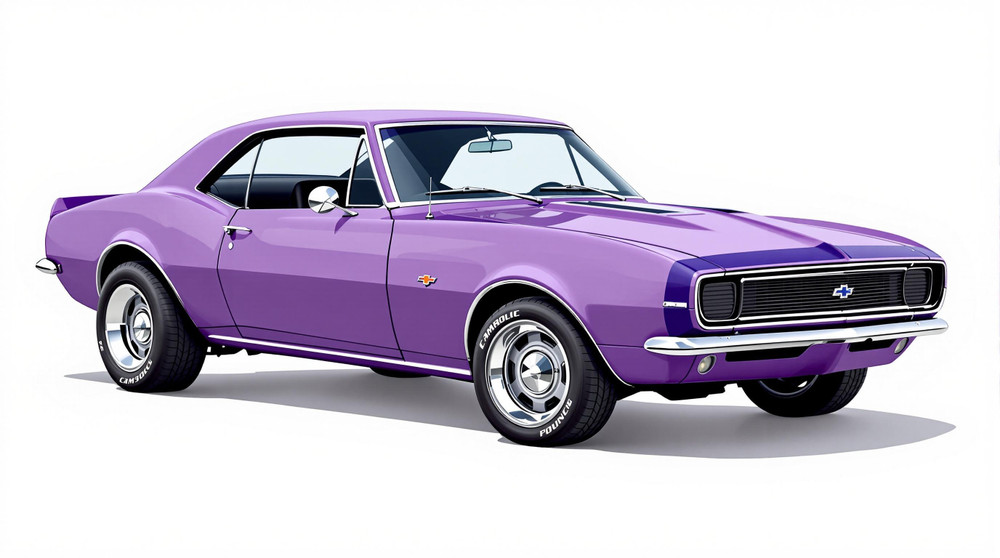Image of 1967 Chevrolet Camaro, Note: These illustrations use artistic license and may differ from actual historical models.
Performance Metrics
Fundamental Metrics
Emotional Appeal
MMP Rating
| Engine Specifications | |
|---|---|
| Engine: | 230 cu in (3.8 L) I6, 250 cu in (4.1 L) I6, 302 cu in (4.9 L) V8, 307 cu in (5.0 L) V8, 327 cu in (5.4 L) V8, 350 cu in (5.7 L) V8, 396 cu in (6.5 L) V8 |
| Displacement: | 230-396 cu in |
| Horsepower: | 140-375 hp |
| Torque: | 220-415 lb-ft |
| Compression Ratio: | 8.5:1 - 11.0:1 |
| Ignition System: | Conventional breaker-point ignition system |
| Cooling System: | Liquid-cooled |
| Performance Specifications | |
| 0-60 Time: | 7.0 - 6.0 seconds |
| 1/4 Mile Time: | 15.0 seconds |
| Top Speed: | 120-140 mph |
| Transmission and Drive | |
| Drive Type: | Rear-wheel drive |
| Transmission Type: | 3-speed manual, 4-speed manual, 2-speed automatic, 3-speed automatic |
| Fuel and Efficiency | |
| Fuel System Type: | Carburetor |
| MPG: | 10-15 mpg |
| Dimensions and Brakes | |
| Brakes: | Front disc brakes and rear drum brakes |
| Wheelbase: | 108.1 inches |
| Weight: | 3,000-3,500 lbs |
Note: Specifications for classic cars are given to the best of our ability, considering the limited and variant data available.
Introduction
The 1967 Chevrolet Camaro isn't just a car; it's a cultural icon that encapsulates the spirit of American muscle and innovation. Born in the midst of the 1960s automotive boom, the Camaro was Chevrolet's answer to the Ford Mustang—a fierce competitor in what would become known as the "pony car" wars. Crafted by General Motors' Chevrolet division, this vehicle quickly rose to fame not only for its performance but also for its role in defining a generation of sports cars. A unique fact that car enthusiasts revel in is that the Camaro made its cinematic debut in "Bullitt," giving chase to Steve McQueen's Mustang in one of Hollywood's most celebrated car chase scenes.
Design and Innovation
The 1967 Chevrolet Camaro's exterior styling was nothing short of revolutionary, with its long hood, short deck, and aggressive stance. The car's design exuded power and poise, with sharp lines and muscular wheel arches that promised performance. Inside, occupants were greeted with a functional yet stylish interior, featuring high-quality materials for its time, such as optional vinyl or cloth upholstery and soft-touch surfaces. Technologically, the Camaro offered innovations like an available console-mounted gauge cluster and advanced safety features for its era. Color options ranged from classic Butternut Yellow to Bolero Red, with the latter being a popular choice among enthusiasts. The Camaro came in several body styles, including coupe and convertible, but it was the SS (Super Sport) package that became iconic for its added performance flair.
Historical Significance
The 1967 Camaro didn't just follow trends; it set them. Its introduction marked a pivotal moment in automotive design, influencing the development of sports cars for decades to come. The Camaro stood out with its blend of affordability, performance, and style—attributes that made it not only a sales success but also a template for future muscle cars. Its lasting influence can be seen in the continued production and popularity of modern-day Camaros.
Performance and Handling
Under the hood, the 1967 Camaro was as impressive as it was on the surface. With various engine options available, including a robust 396 cubic inch V8 in the SS model, this pony car could achieve 0-60 mph sprints in as little as 6 seconds—a remarkable feat at the time. Top speeds varied by engine choice but could reach upwards of 120 mph. On the road, drivers enjoyed responsive handling that could tackle both sharp turns and long stretches with confidence. The roar of the engine coupled with the tactile feedback from the steering wheel created an immersive driving experience that still resonates with car aficionados today.
Ownership Experience
The 1967 Chevrolet Camaro found its place in various aspects of American life—from being a reliable daily driver to gracing car shows and even tearing up racetracks. Owners appreciated its relative ease of maintenance and repairability thanks to widespread availability of parts and straightforward mechanical design. However, like many vehicles of its era, rust could be an issue over time.
Fun Facts
This classic muscle car has been owned by celebrities, featured on album covers, and has even set records at auctions due to its desirability among collectors. Despite some criticisms over fuel economy—a common trait among muscle cars—the Camaro has remained beloved by many.
Collector's Information
Today, a well-preserved or expertly restored 1967 Chevrolet Camaro can fetch anywhere from $30,000 to well over $100,000 depending on factors such as originality, condition, and specific model (with rare editions like the Z/28 or those with RS/SS packages commanding higher prices). While exact production numbers vary by source, it is estimated that around 220,000 units were produced in 1967 alone. As for appreciation trends, values have steadily climbed over recent years—making it not just an emotional investment but potentially a financial one as well.
Conclusion
The 1967 Chevrolet Camaro is more than just metal, rubber, and glass; it's a piece of automotive history that continues to captivate enthusiasts around the world. With its stunning design, thrilling performance, and cultural significance—it stands as a testament to an era when cars were about passion as much as they were about transportation. Whether you're behind the wheel or admiring from afar, this classic American muscle car is sure to leave a lasting impression.
1967 Chevrolet Camaro Catalog of Parts
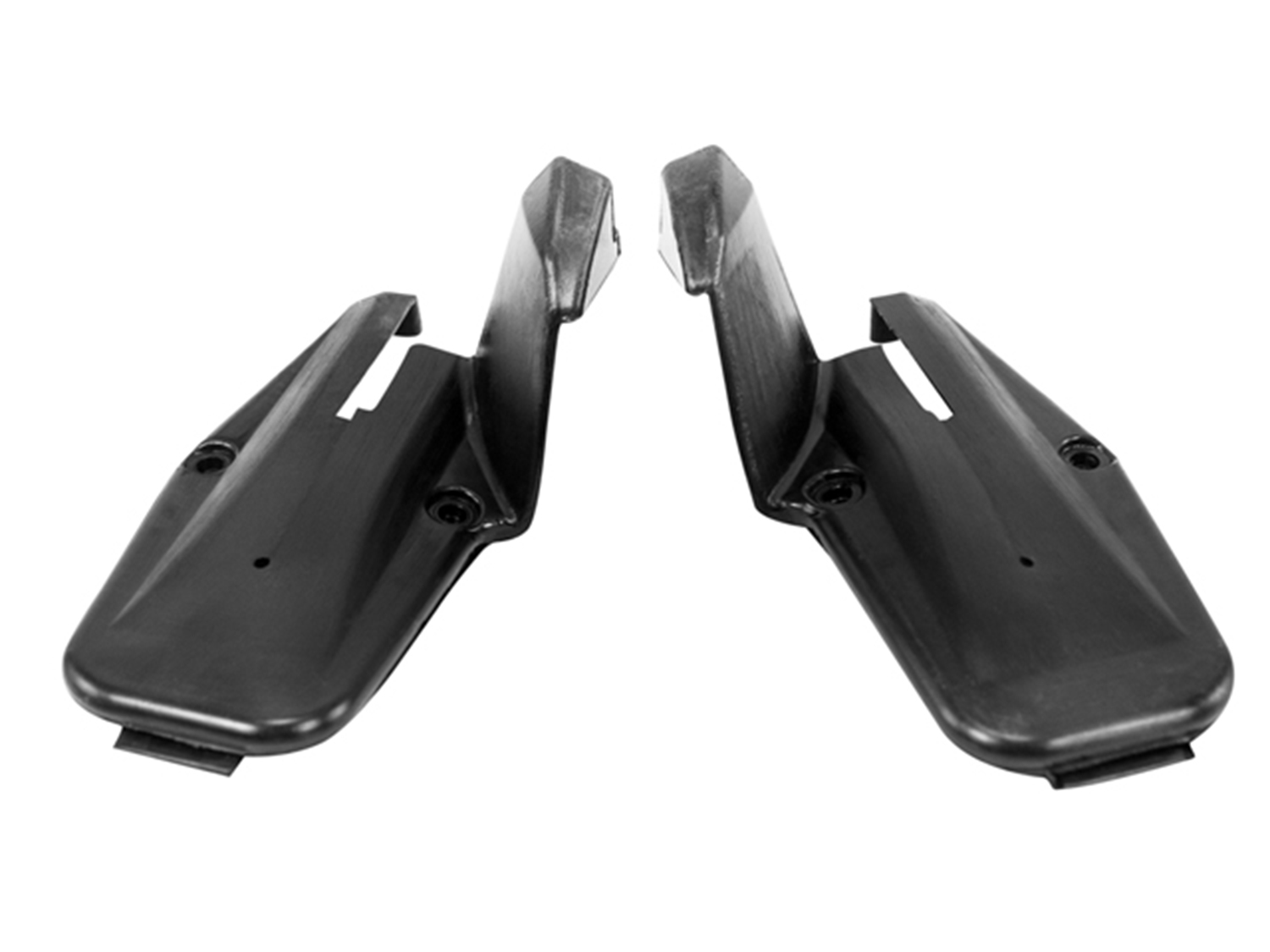 1967 Chevrolet Camaro Door lock pillar seals. '67 F-body hardtop and convertible-ALP 11-ADoor lock pillar seals. '67 F-body hardtop and convertible. Mounts on body at lower leading edge of the quarter-window. (See p/n ALP 11 for '68-'69 GM F-body cars.) Replaces OEM#'s 7645256/7. Pair. R&L.
1967 Chevrolet Camaro Door lock pillar seals. '67 F-body hardtop and convertible-ALP 11-ADoor lock pillar seals. '67 F-body hardtop and convertible. Mounts on body at lower leading edge of the quarter-window. (See p/n ALP 11 for '68-'69 GM F-body cars.) Replaces OEM#'s 7645256/7. Pair. R&L.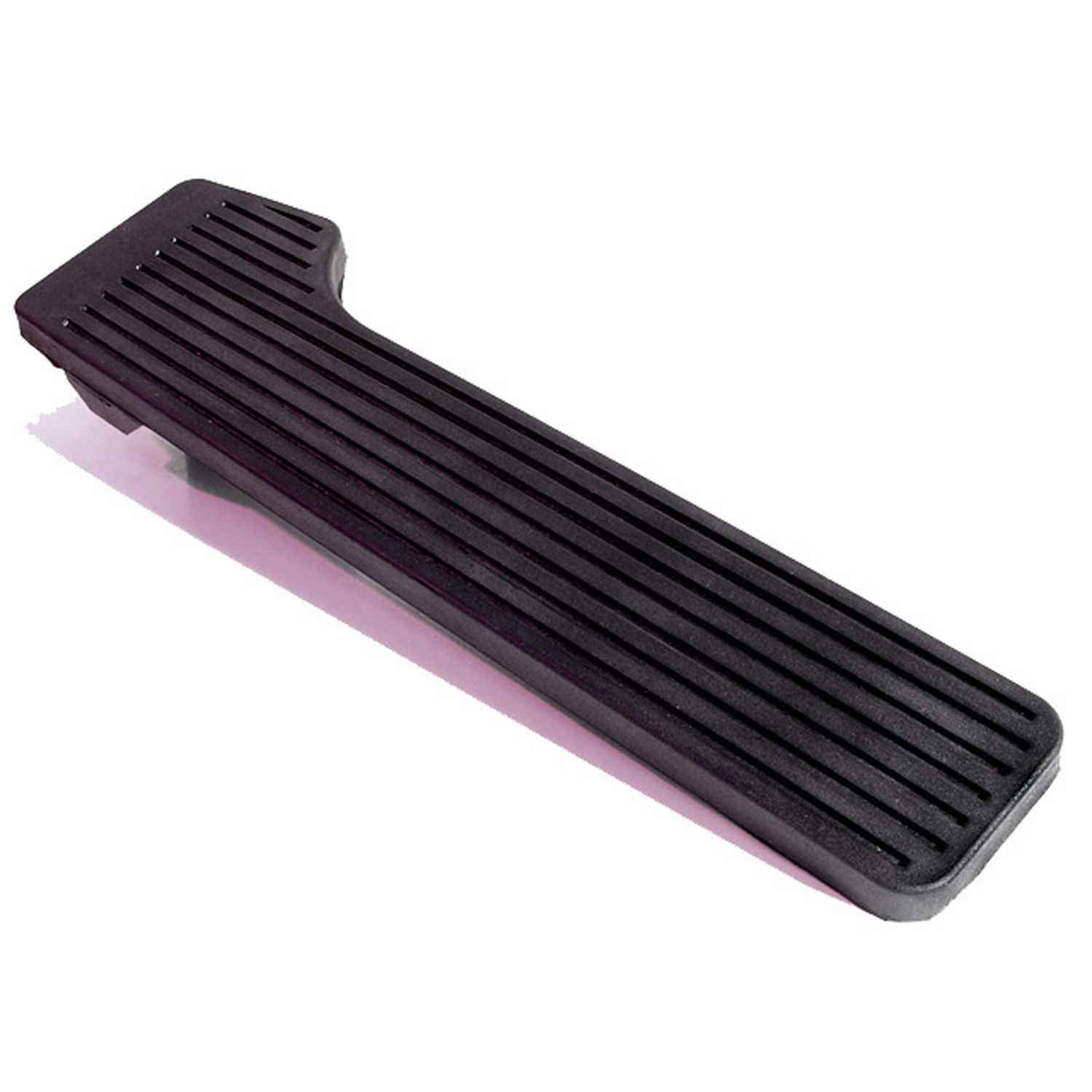 1967 Chevrolet Camaro Accelerator Pedal Pad with flange-AP 31-AAccelerator Pedal Pad with flange, made of rubber with steel core. Also
1967 Chevrolet Camaro Accelerator Pedal Pad with flange-AP 31-AAccelerator Pedal Pad with flange, made of rubber with steel core. Also 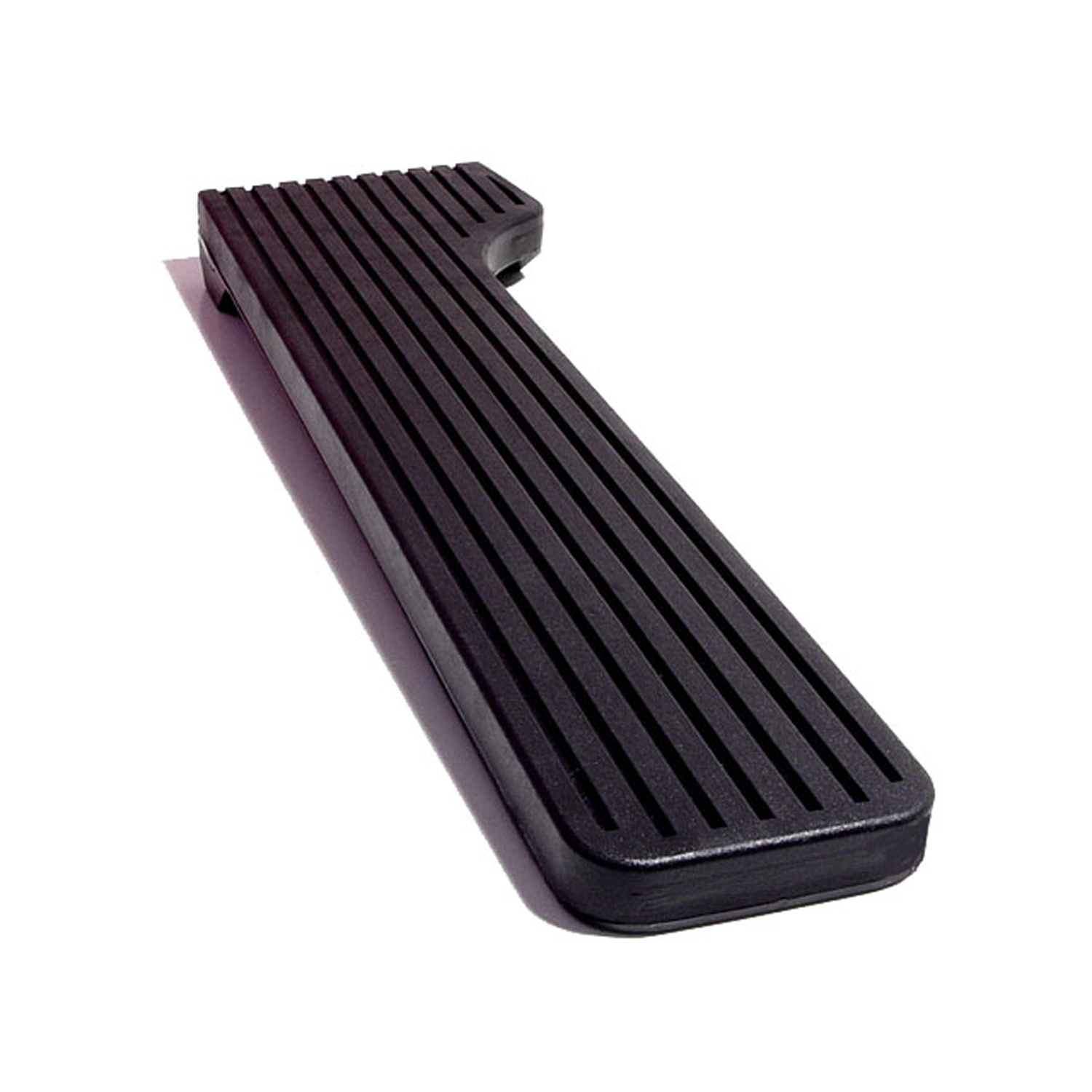 1967 Chevrolet Camaro Accelerator Pedal Pad without flange-AP 31-BAccelerator Pedal Pad without flange, made of rubber with steel core. Also
1967 Chevrolet Camaro Accelerator Pedal Pad without flange-AP 31-BAccelerator Pedal Pad without flange, made of rubber with steel core. Also 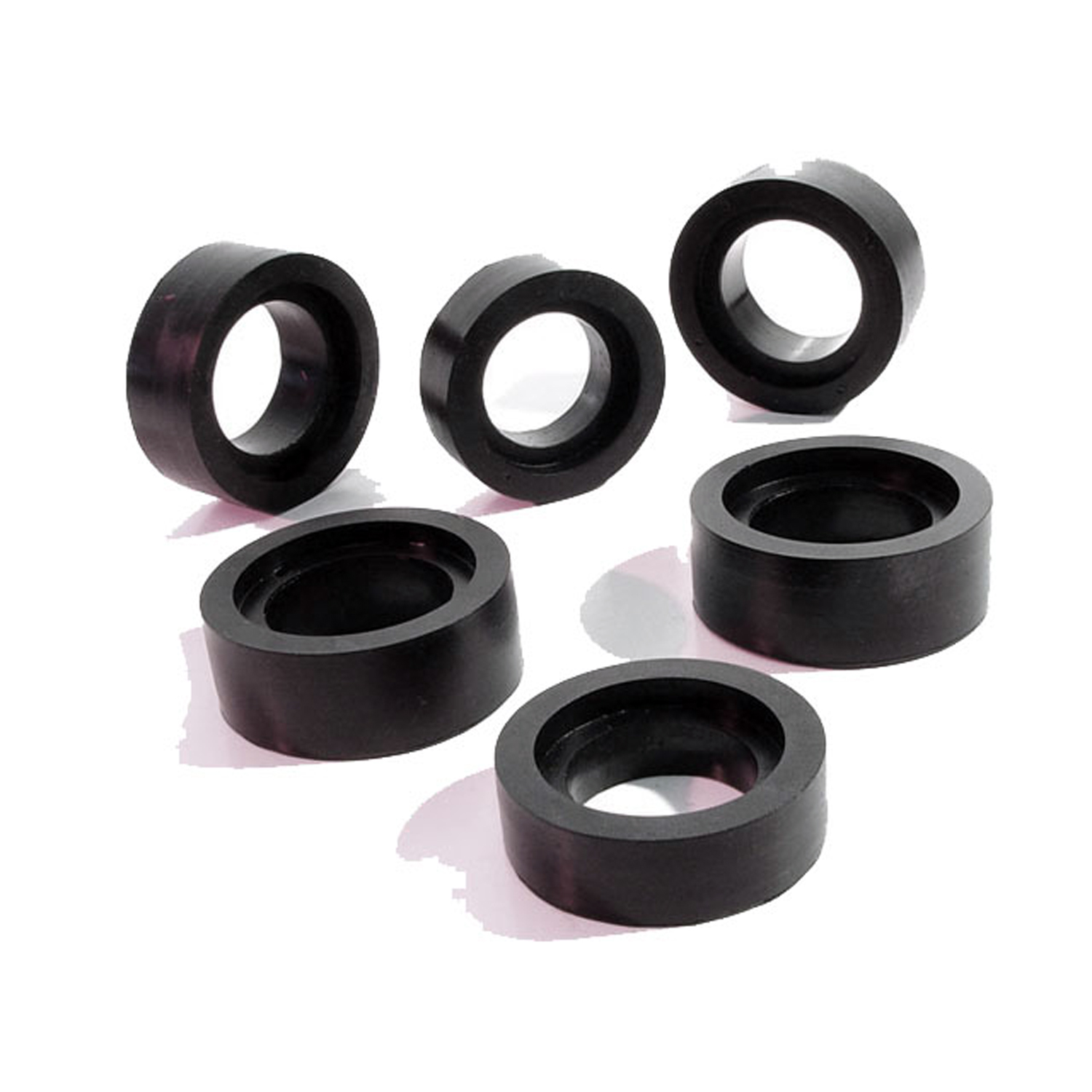 1967 Chevrolet Camaro Body Cushion Kit. 6 piece set.-BCK 9Body Cushion Kit. 6 piece set.
1967 Chevrolet Camaro Body Cushion Kit. 6 piece set.-BCK 9Body Cushion Kit. 6 piece set.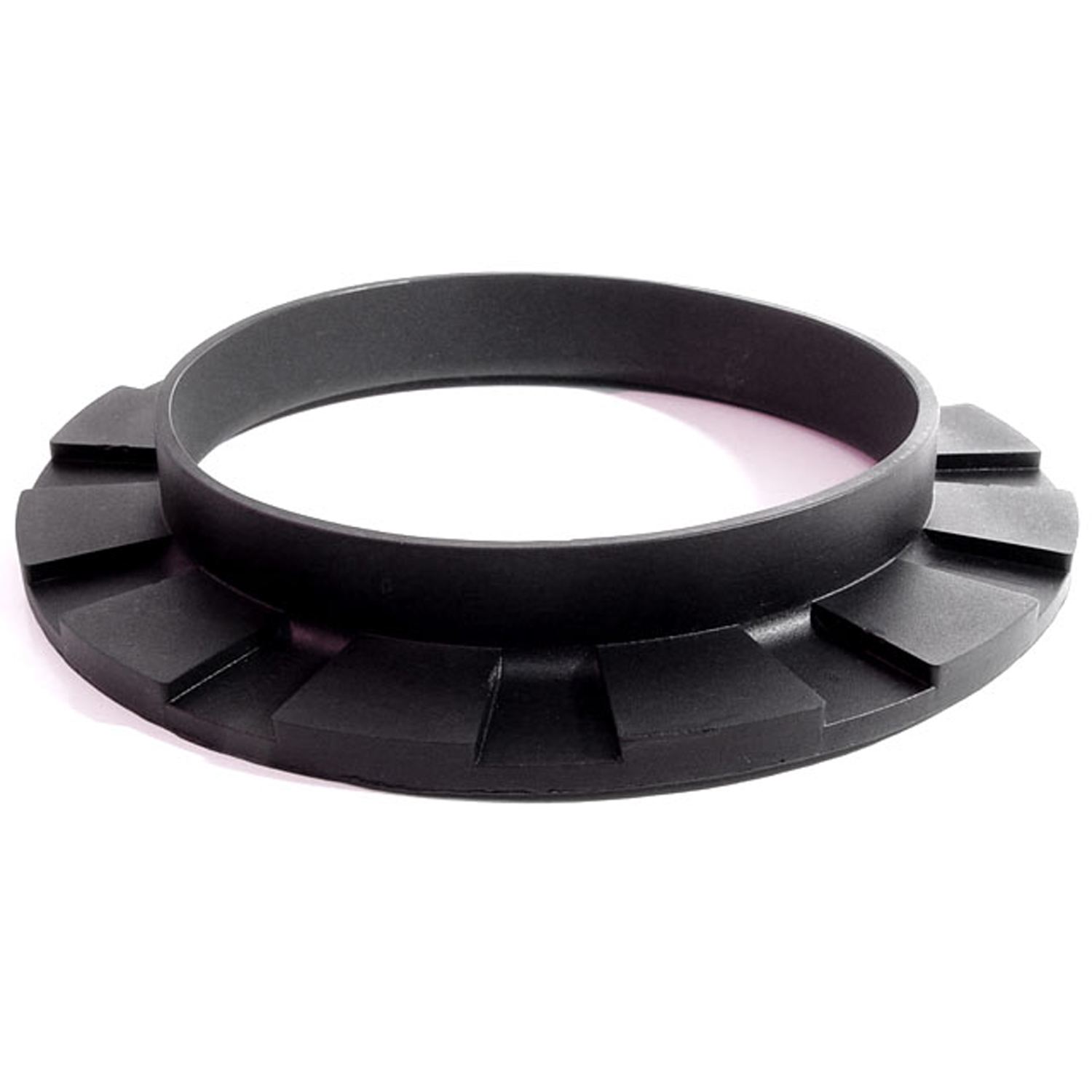 1967 Chevrolet Camaro Front coil-spring insulator-BN 110Front coil-spring insulator. Fits '41-'60 Oldsmobile and '50-'83 GM passenger models. 5-3/8 in. OD x 3-3/4 in. ID x 3/4 in. high with 13/16 in. wide bottom flange 1/4" thick, 12 flutes. Each.
1967 Chevrolet Camaro Front coil-spring insulator-BN 110Front coil-spring insulator. Fits '41-'60 Oldsmobile and '50-'83 GM passenger models. 5-3/8 in. OD x 3-3/4 in. ID x 3/4 in. high with 13/16 in. wide bottom flange 1/4" thick, 12 flutes. Each.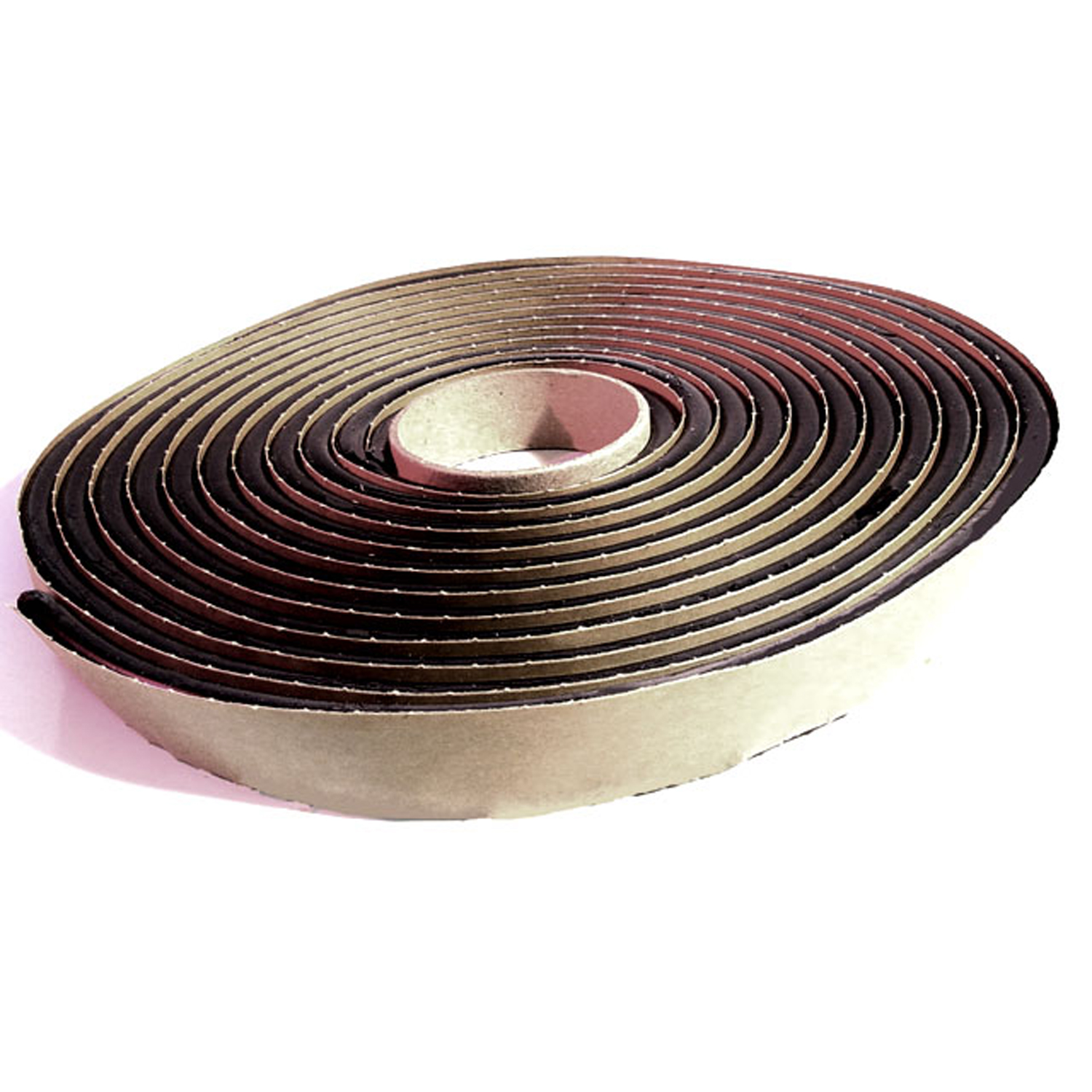 1967 Chevrolet Camaro Butyl Glass Setting Tape-BT 1Butyl Glass Setting Tape. Used to install windshields and backlights. Superior sealing properties. 5/16" wide X 15' long. Each
1967 Chevrolet Camaro Butyl Glass Setting Tape-BT 1Butyl Glass Setting Tape. Used to install windshields and backlights. Superior sealing properties. 5/16" wide X 15' long. Each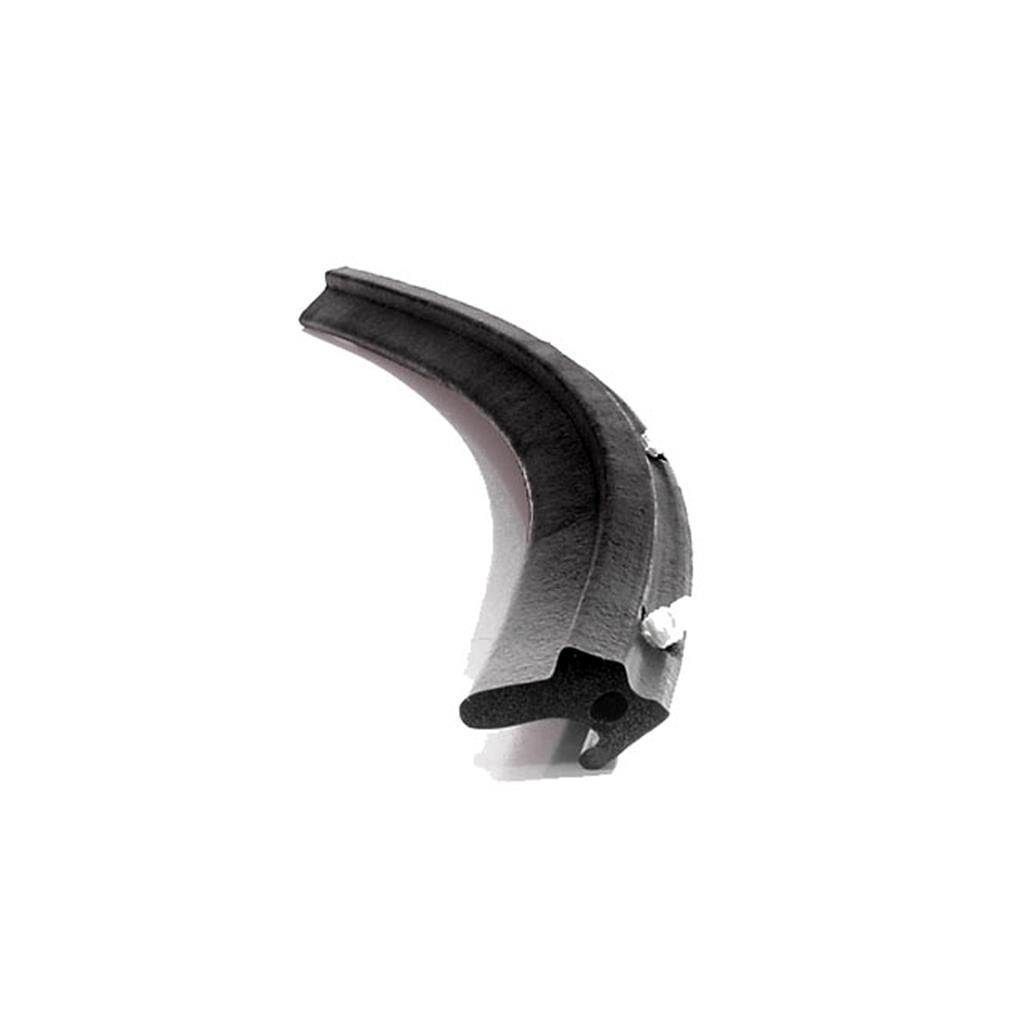 1967 Chevrolet Camaro Convertible Top Windshield Header Seal-C/LP 40-GConvertible Top Windshield Header Seal. Clips installed every 3-5/8". Made of soft, black, skin-covered sponge. Sold by the foot.
1967 Chevrolet Camaro Convertible Top Windshield Header Seal-C/LP 40-GConvertible Top Windshield Header Seal. Clips installed every 3-5/8". Made of soft, black, skin-covered sponge. Sold by the foot.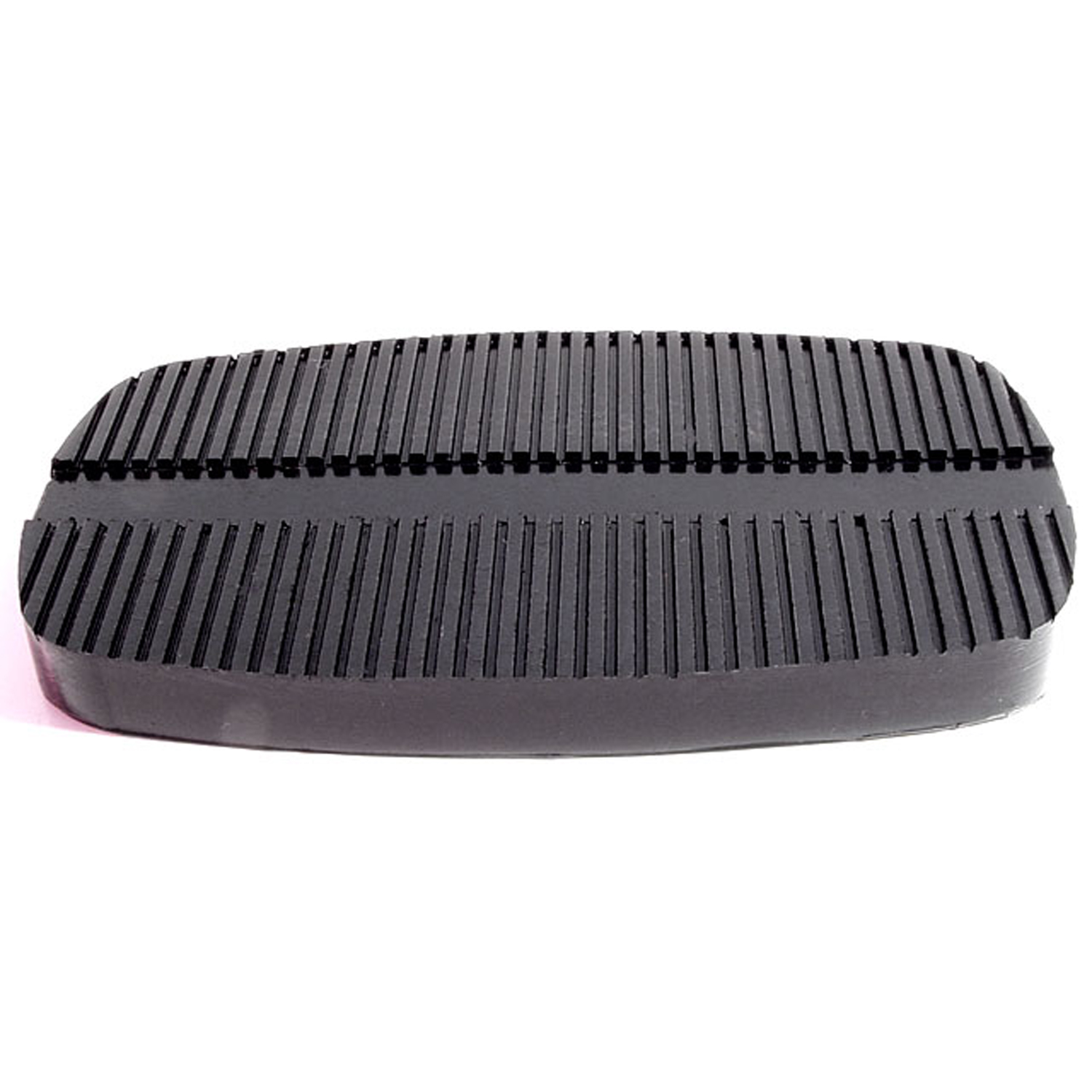 1967 Chevrolet Camaro Brake Pedal Pad-CB 101-ABrake Pedal Pad. For power brakes or automatic transmissions. 4-3/4" wide X 2-3/4' long. Each
1967 Chevrolet Camaro Brake Pedal Pad-CB 101-ABrake Pedal Pad. For power brakes or automatic transmissions. 4-3/4" wide X 2-3/4' long. Each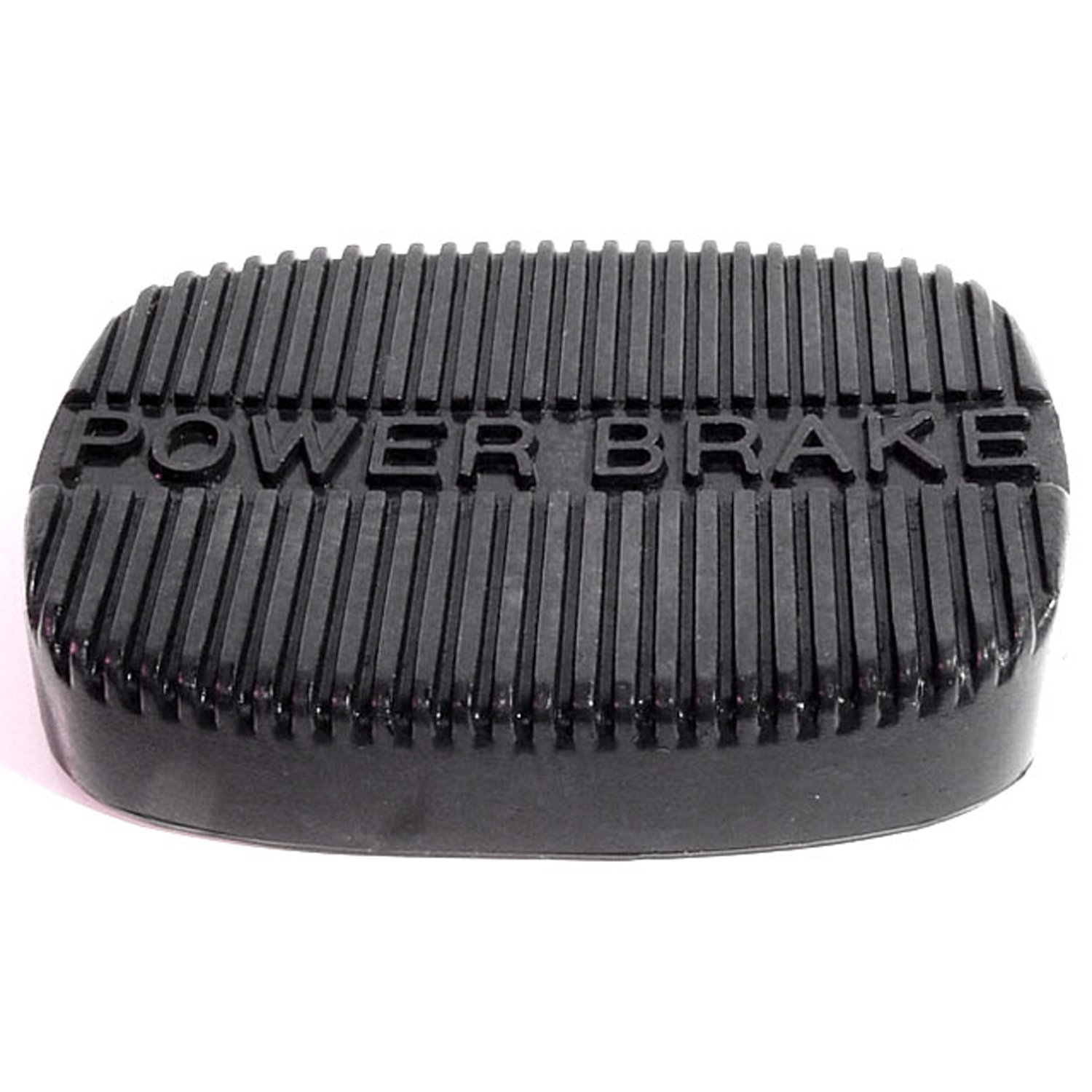 1967 Chevrolet Camaro Power Brake Pedal Pad. For cars with manual transmission-CB 101-CPower Brake Pedal Pad. For cars with manual transmission. Nice reproduction. 3-5/8" wide X 2-5/8" long. Each
1967 Chevrolet Camaro Power Brake Pedal Pad. For cars with manual transmission-CB 101-CPower Brake Pedal Pad. For cars with manual transmission. Nice reproduction. 3-5/8" wide X 2-5/8" long. Each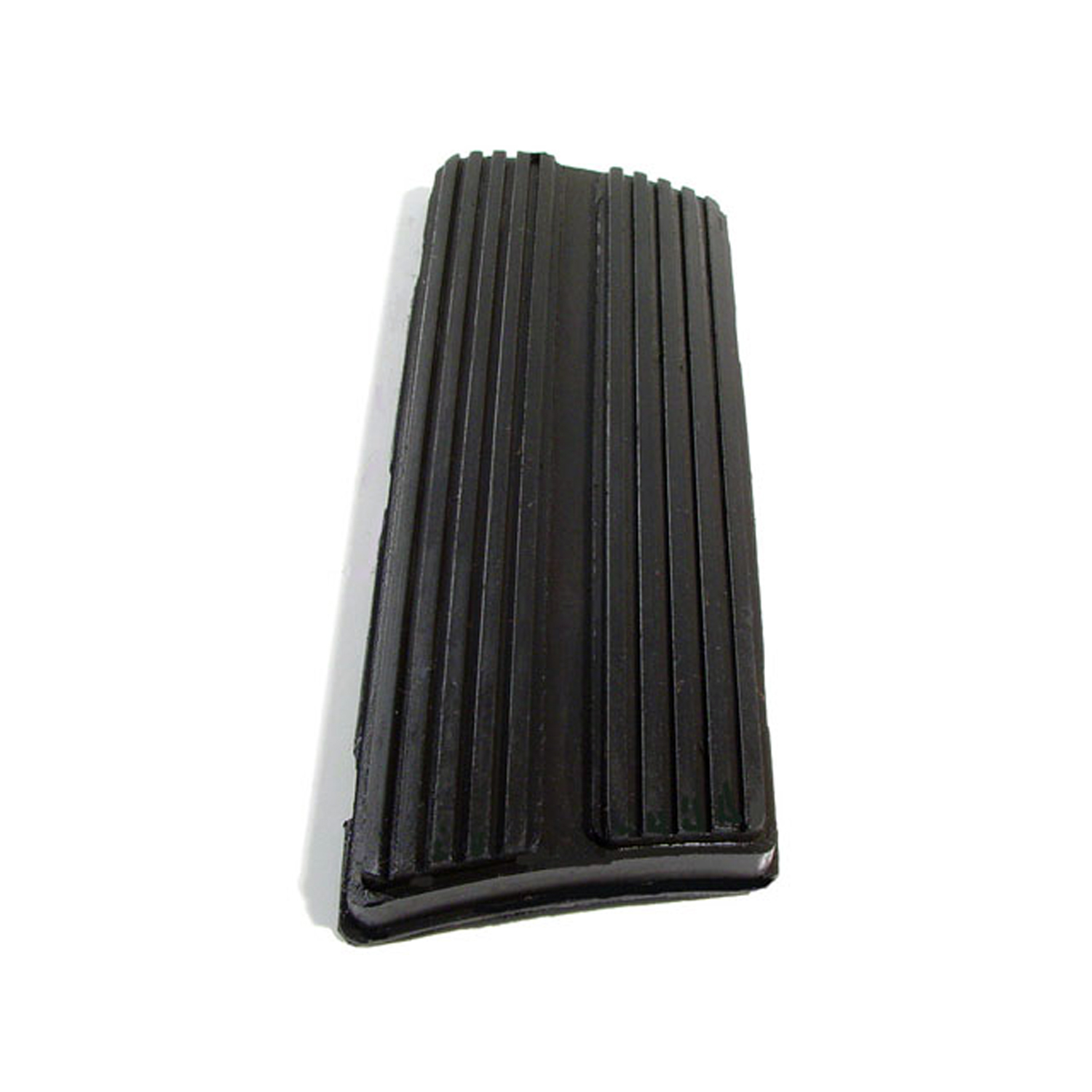 1967 Chevrolet Camaro Auto Brake Pedal Pad. 6-3/4" wide X 2-1/2" long. Each-CB 99-CAuto Brake Pedal Pad. 6-3/4" wide X 2-1/2" long. Each
1967 Chevrolet Camaro Auto Brake Pedal Pad. 6-3/4" wide X 2-1/2" long. Each-CB 99-CAuto Brake Pedal Pad. 6-3/4" wide X 2-1/2" long. Each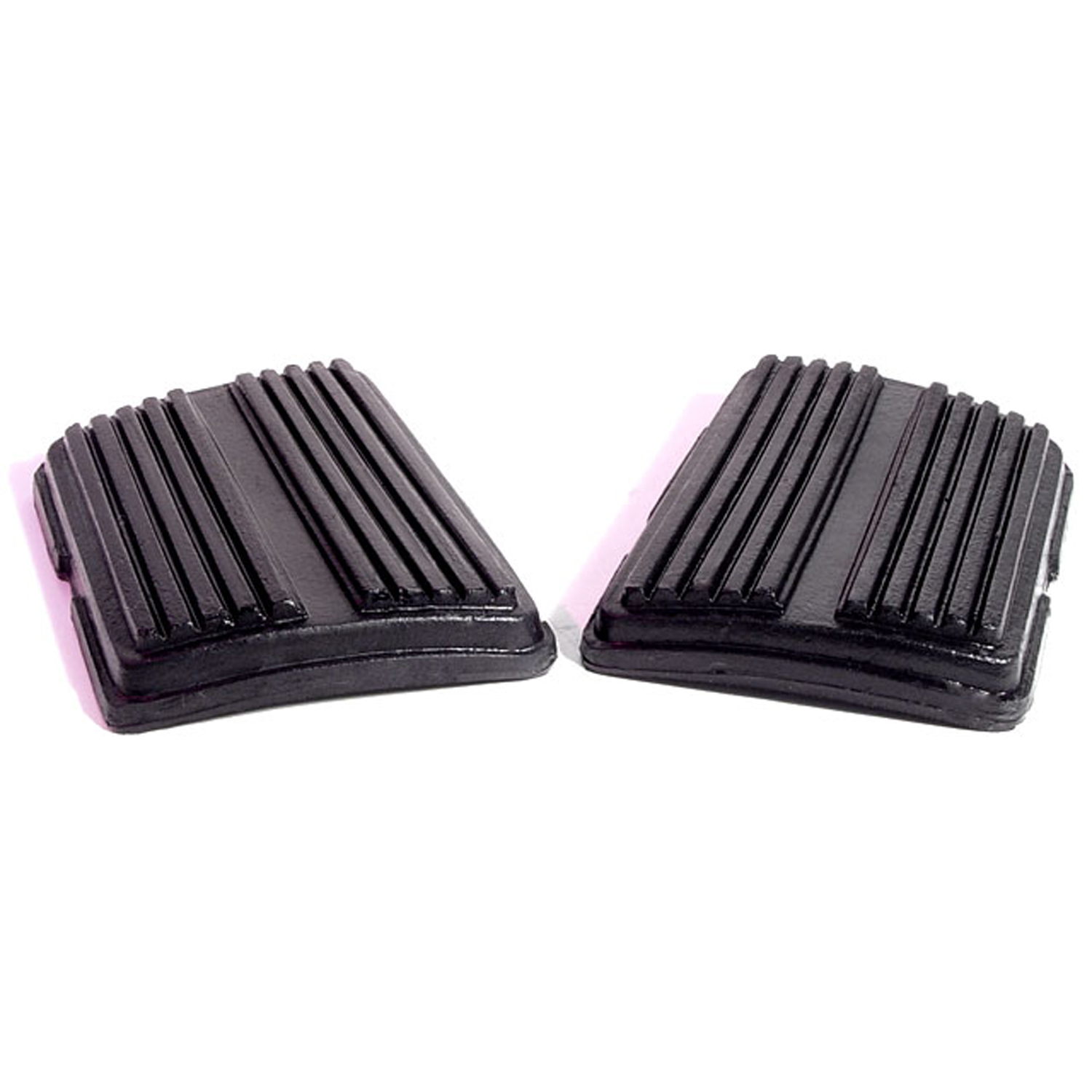 1967 Chevrolet Camaro Clutch and Brake Pedal Pads. 3-3/4" wide. Pair-CB 99-DClutch and Brake Pedal Pads. 3-3/4" wide. Pair
1967 Chevrolet Camaro Clutch and Brake Pedal Pads. 3-3/4" wide. Pair-CB 99-DClutch and Brake Pedal Pads. 3-3/4" wide. Pair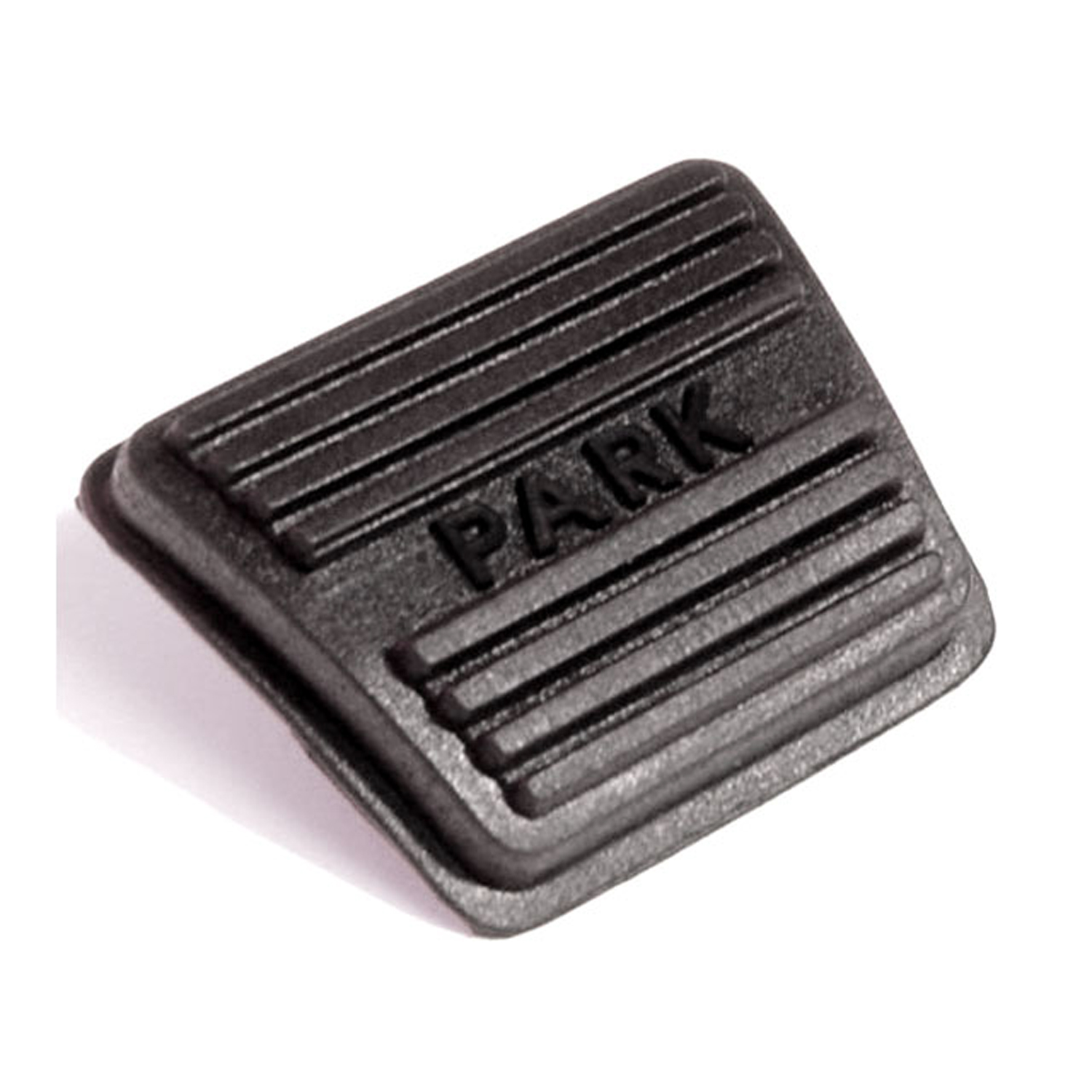 1967 Chevrolet Camaro Park Brake Pedal Pad. 2-3/8" wide. Each-CB 99-EPark Brake Pedal Pad. 2-3/8" wide. Each
1967 Chevrolet Camaro Park Brake Pedal Pad. 2-3/8" wide. Each-CB 99-EPark Brake Pedal Pad. 2-3/8" wide. Each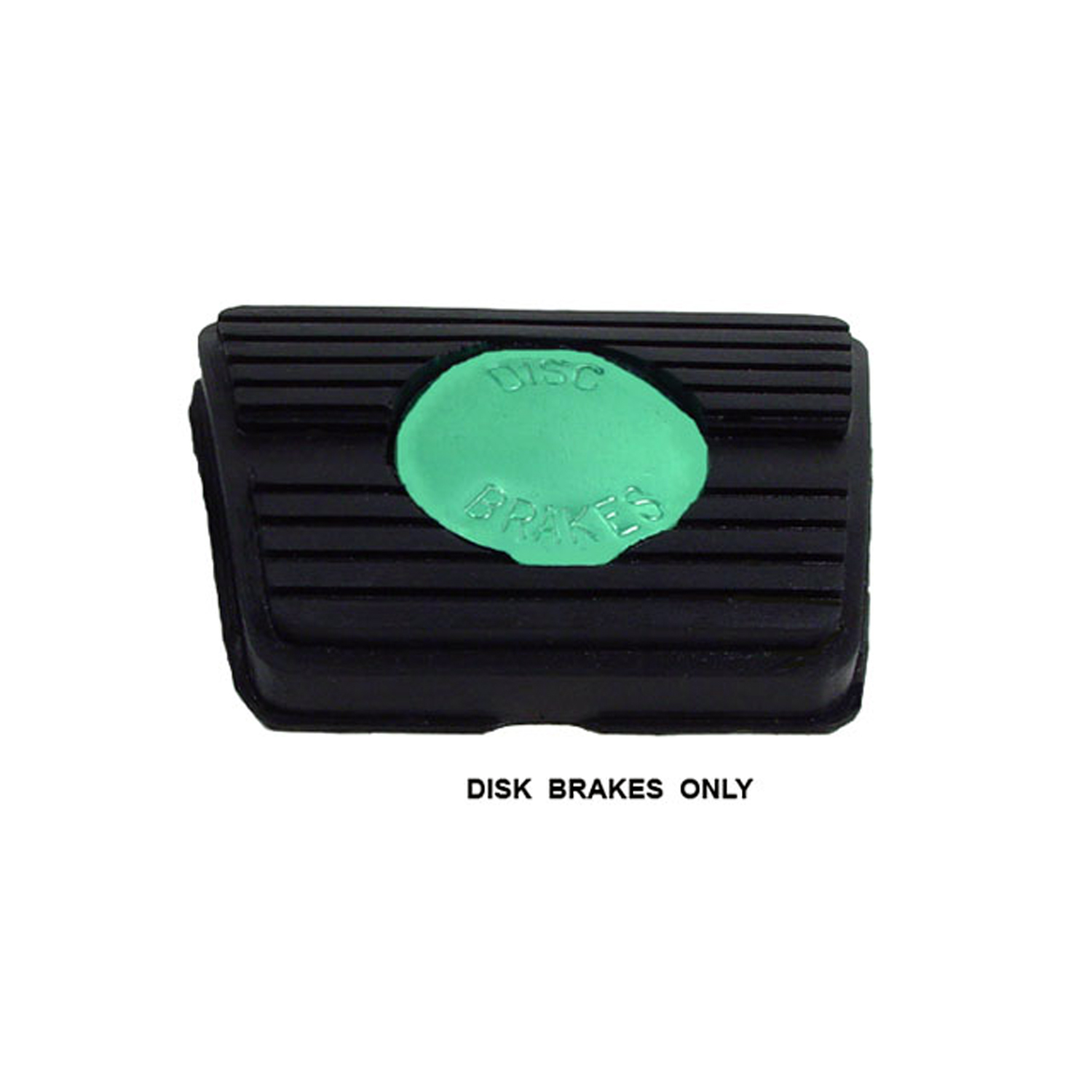 1967 Chevrolet Camaro Clutch or Brake Pedal Pads, with Stainless Steel Center-CB 99-HClutch or Brake Pedal Pads, with Stainless Steel Center. For models with disc brakes. 3-1/4" wide X 2-3/8" long. Each
1967 Chevrolet Camaro Clutch or Brake Pedal Pads, with Stainless Steel Center-CB 99-HClutch or Brake Pedal Pads, with Stainless Steel Center. For models with disc brakes. 3-1/4" wide X 2-3/8" long. Each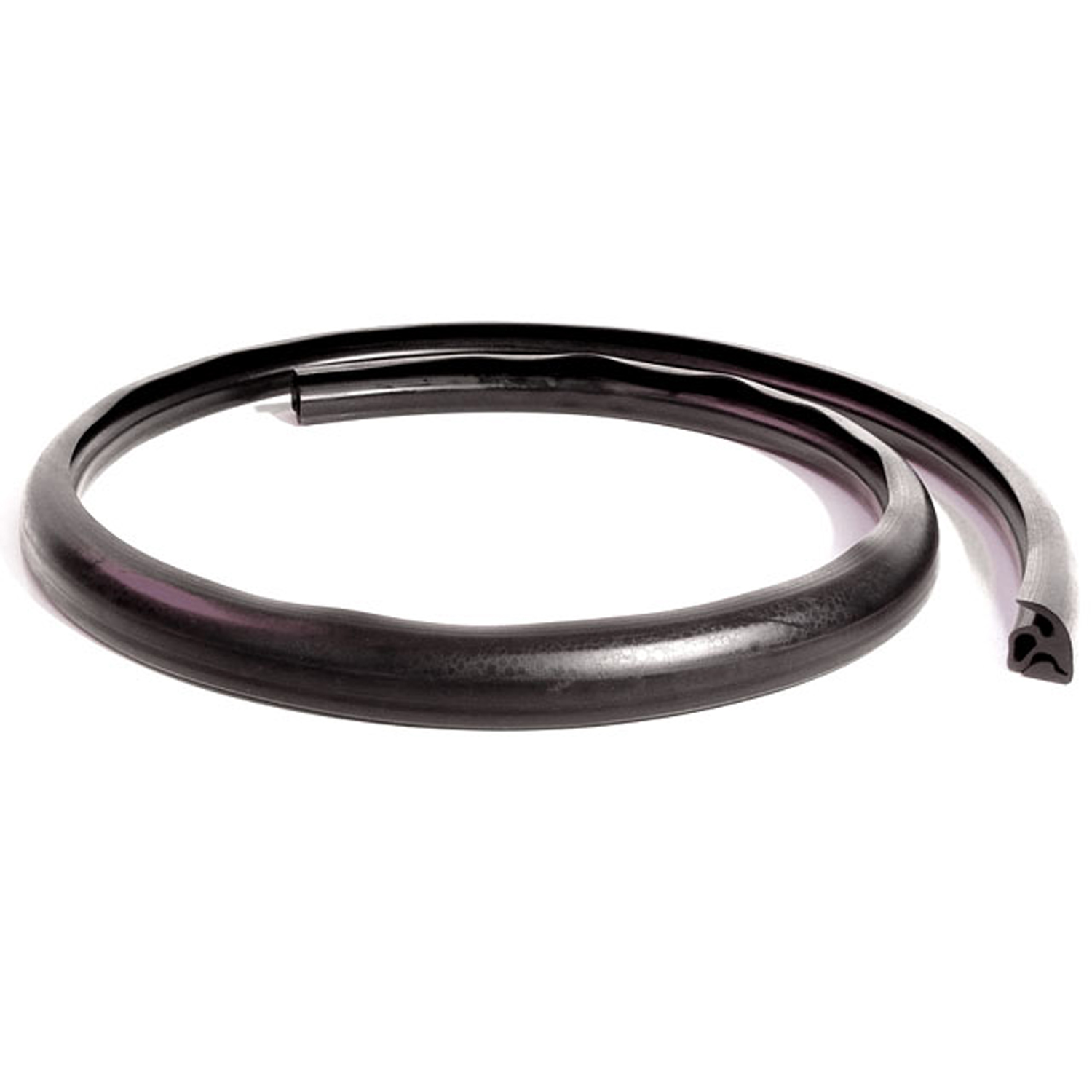 1967 Chevrolet Camaro Cowl Seal. '67-'69 GM 'F' Body. 43-1/4" long. Each-CS 40Cowl Seal. '67-'69 GM 'F' Body. 43-1/4" long. Each
1967 Chevrolet Camaro Cowl Seal. '67-'69 GM 'F' Body. 43-1/4" long. Each-CS 40Cowl Seal. '67-'69 GM 'F' Body. 43-1/4" long. Each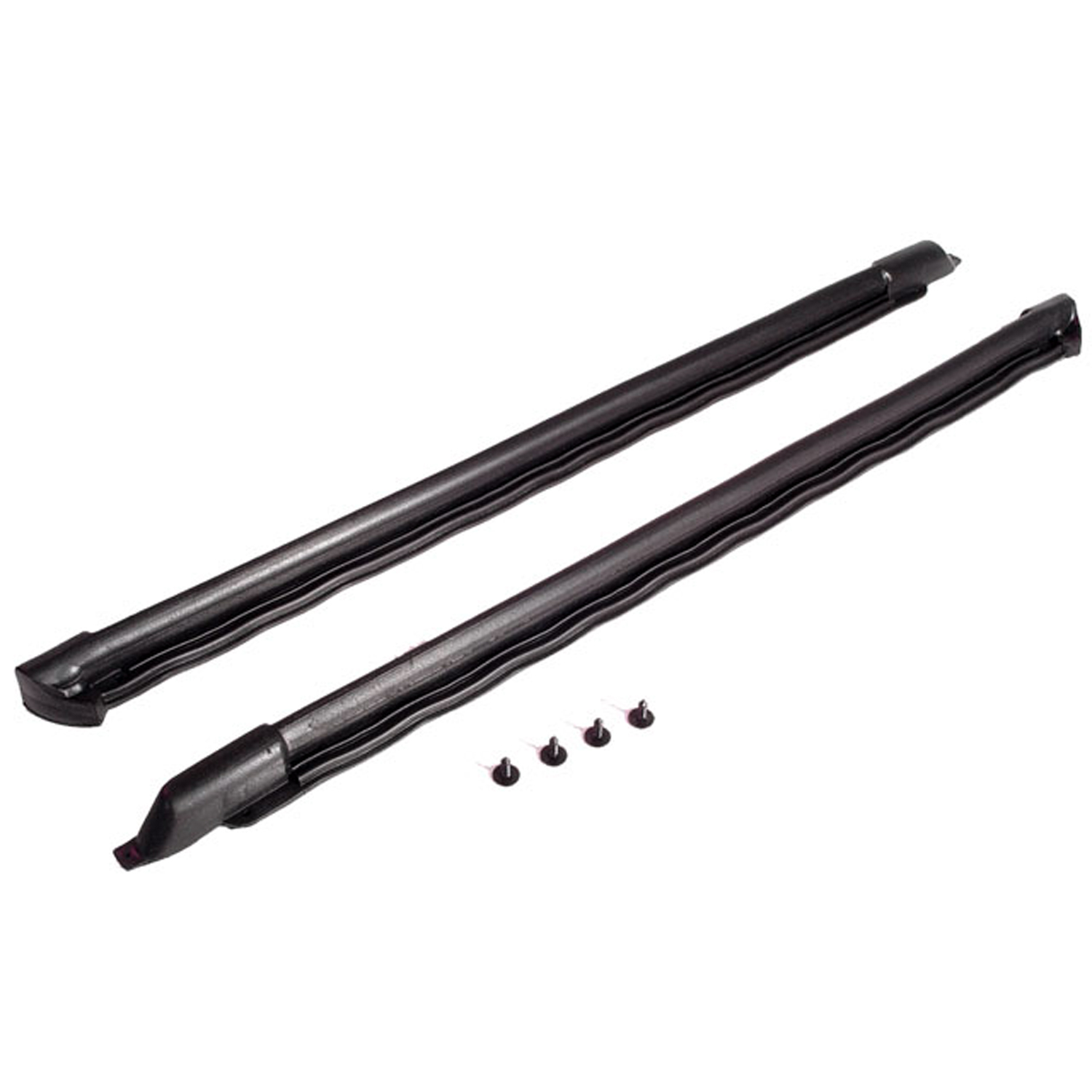 1967 Chevrolet Camaro Windshield Pillar Post Seals for Convertibles-CZ 8102Windshield Pillar Post Seals for Convertibles. No wire inserts. 22-1/4" long. Pair
1967 Chevrolet Camaro Windshield Pillar Post Seals for Convertibles-CZ 8102Windshield Pillar Post Seals for Convertibles. No wire inserts. 22-1/4" long. Pair 1967 Chevrolet Camaro Door, Hood and Trunk Bumper Cap for adjustment bolt-HA 5Door, Hood and Trunk Bumper Cap for adjustment bolt. 7/8" diameter X 7/16" thick. Each
1967 Chevrolet Camaro Door, Hood and Trunk Bumper Cap for adjustment bolt-HA 5Door, Hood and Trunk Bumper Cap for adjustment bolt. 7/8" diameter X 7/16" thick. Each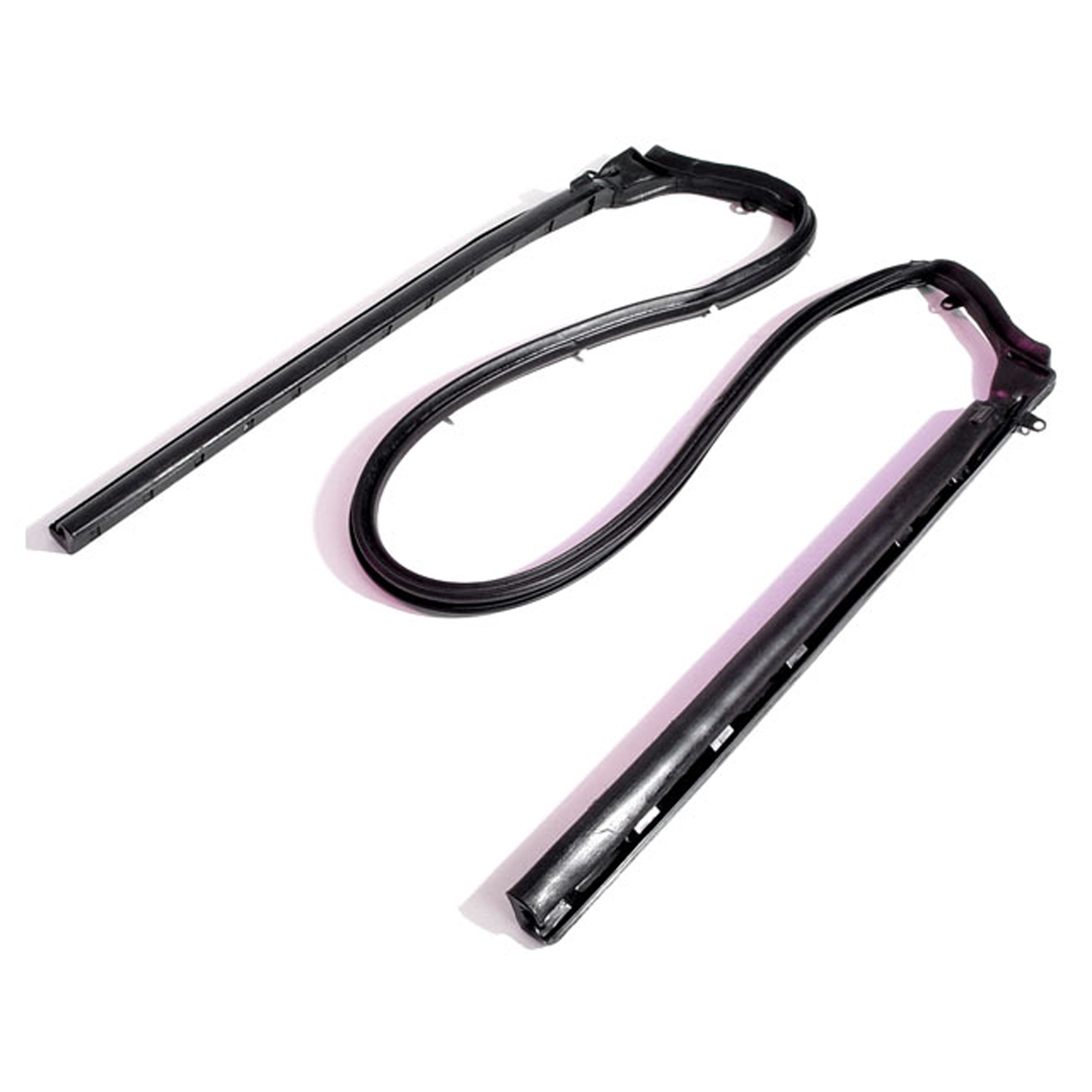 1967 Chevrolet Camaro Header seal. Fits '67 GM F-body convertible only-HD 1500Header seal. Fits '67 GM F-body convertible only. (See HD 1501 for '68-'69 GM F-body convertible). One-piece molded part with steel cores. Note: Header includes first top-rail sections. End sections 20 in. L; center sections 49 in. L. Each.
1967 Chevrolet Camaro Header seal. Fits '67 GM F-body convertible only-HD 1500Header seal. Fits '67 GM F-body convertible only. (See HD 1501 for '68-'69 GM F-body convertible). One-piece molded part with steel cores. Note: Header includes first top-rail sections. End sections 20 in. L; center sections 49 in. L. Each.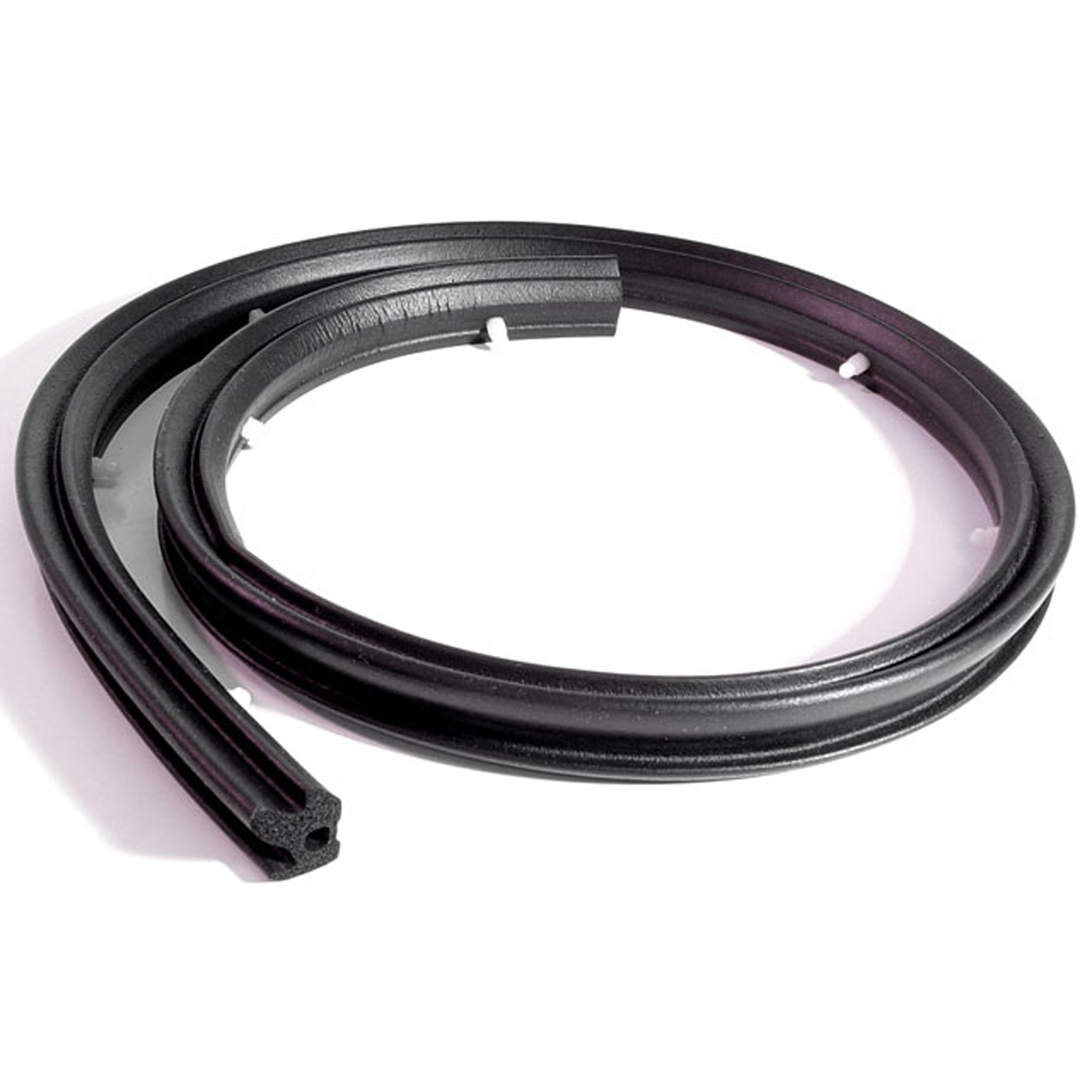 1967 Chevrolet Camaro Header Seal for Convertibles Without Molded Ends-HD 710Header Seal for '67-'69 GM F Body Convertibles Without Molded Ends. 39-3/8" Long. Each.Header Seal for Convertibles. 39-3/8" Long. Each
1967 Chevrolet Camaro Header Seal for Convertibles Without Molded Ends-HD 710Header Seal for '67-'69 GM F Body Convertibles Without Molded Ends. 39-3/8" Long. Each.Header Seal for Convertibles. 39-3/8" Long. Each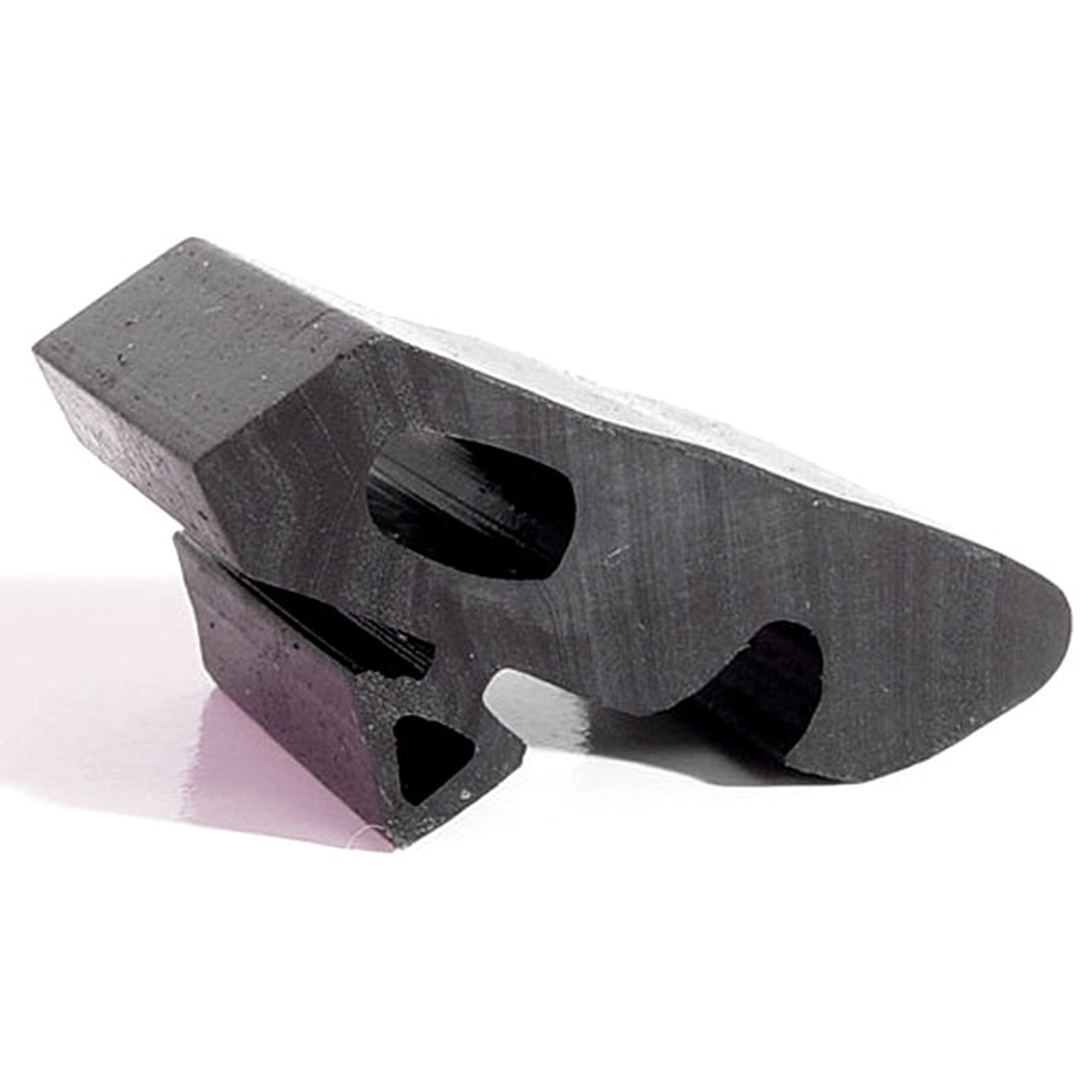 1967 Chevrolet Camaro Hood Bumper. Each-HF 4Hood Bumper. Each
1967 Chevrolet Camaro Hood Bumper. Each-HF 4Hood Bumper. Each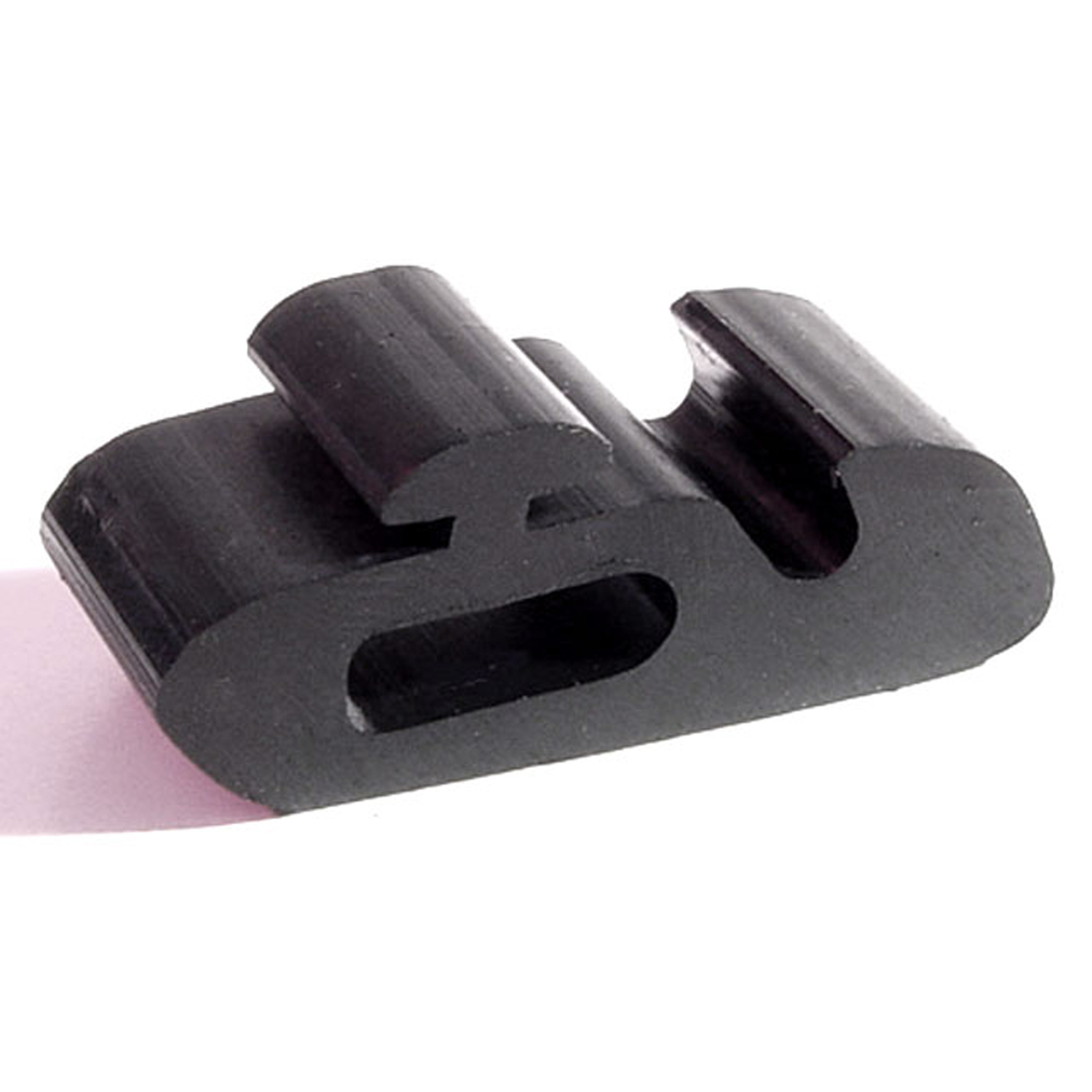 1967 Chevrolet Camaro Hood Bumper. 1-3/8" long X 9/16" wide X 11/16" high. Each-HF 4-AHood Bumper. 1-3/8" long X 9/16" wide X 11/16" high. Each
1967 Chevrolet Camaro Hood Bumper. 1-3/8" long X 9/16" wide X 11/16" high. Each-HF 4-AHood Bumper. 1-3/8" long X 9/16" wide X 11/16" high. Each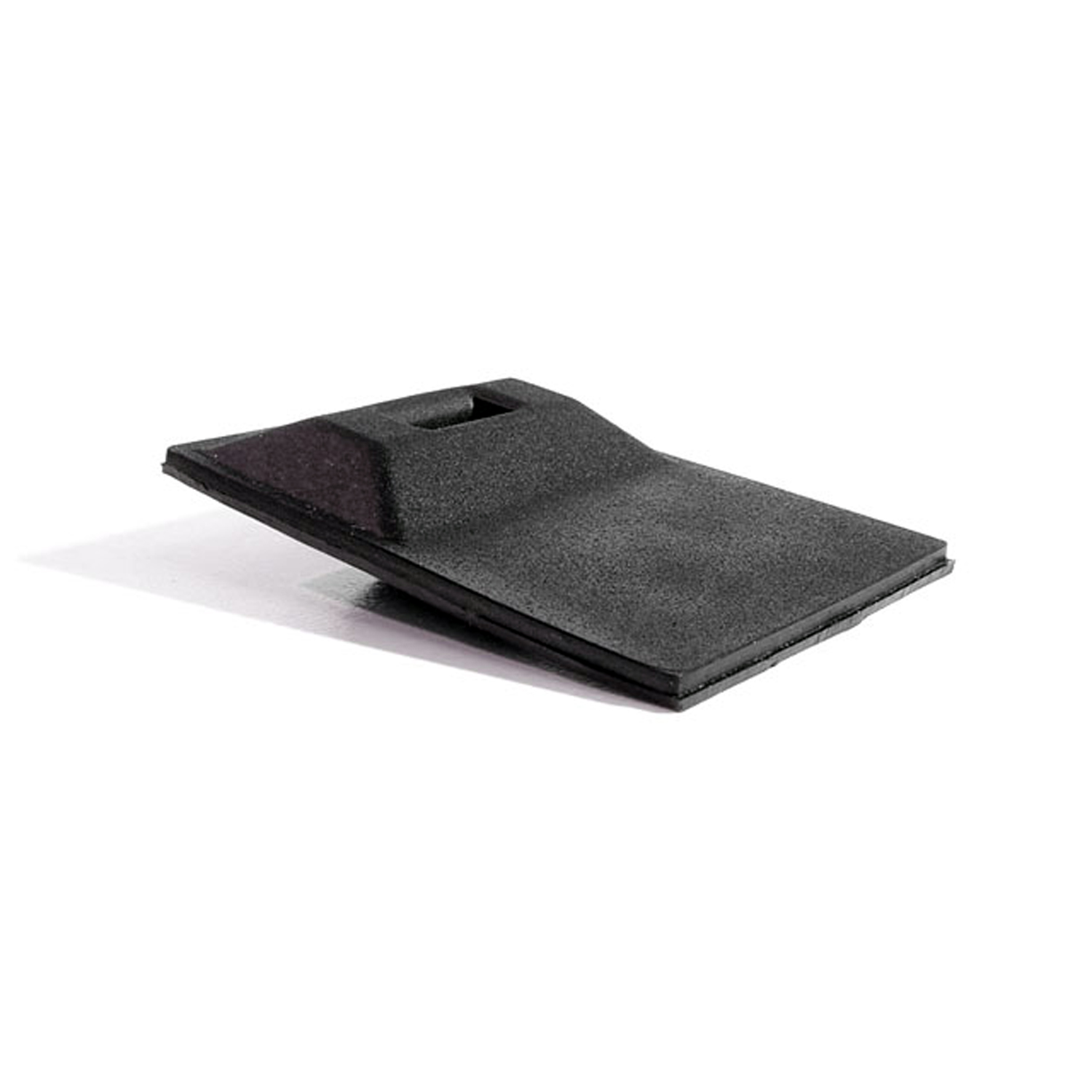 1967 Chevrolet Camaro Rocker Panel Plug. Each-HF 73Rocker Panel Plug. Each
1967 Chevrolet Camaro Rocker Panel Plug. Each-HF 73Rocker Panel Plug. Each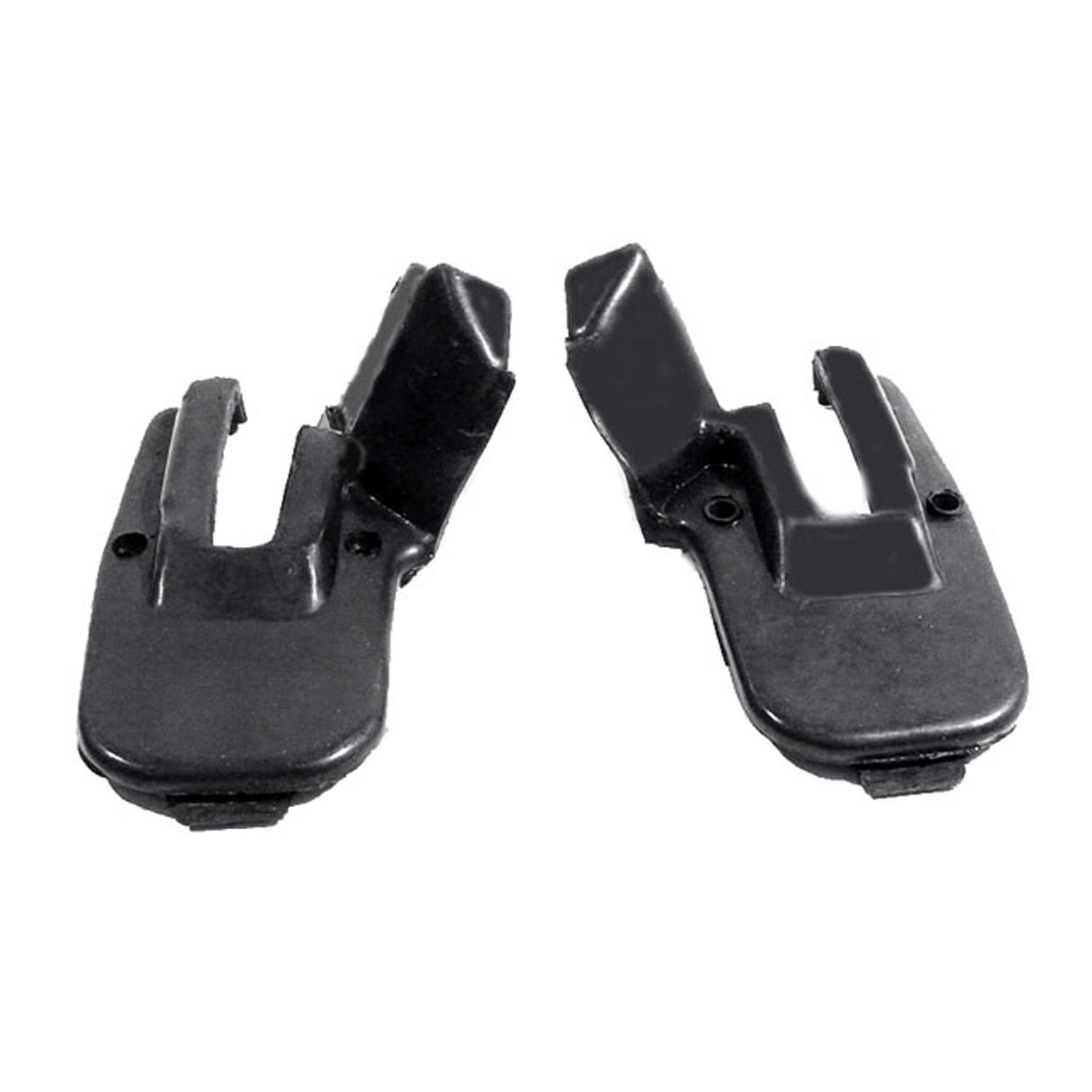 1967 Chevrolet Camaro Door Lock Pillar Seal (Imported)-IS-ALP 11Door Lock Pillar Seal (Imported). Used on lower leading edge of quarter window. Made with steel cores. Mounts on body. Pair R&L
1967 Chevrolet Camaro Door Lock Pillar Seal (Imported)-IS-ALP 11Door Lock Pillar Seal (Imported). Used on lower leading edge of quarter window. Made with steel cores. Mounts on body. Pair R&L 1967 Chevrolet Camaro Trip Meter Reset Knob. Made of black rubber-KN 10Trip Meter Reset Knob. Made of black rubber. Compare to measurements: 1/8" I.D., 7/16" O.D. X 1/2" tall. Each
1967 Chevrolet Camaro Trip Meter Reset Knob. Made of black rubber-KN 10Trip Meter Reset Knob. Made of black rubber. Compare to measurements: 1/8" I.D., 7/16" O.D. X 1/2" tall. Each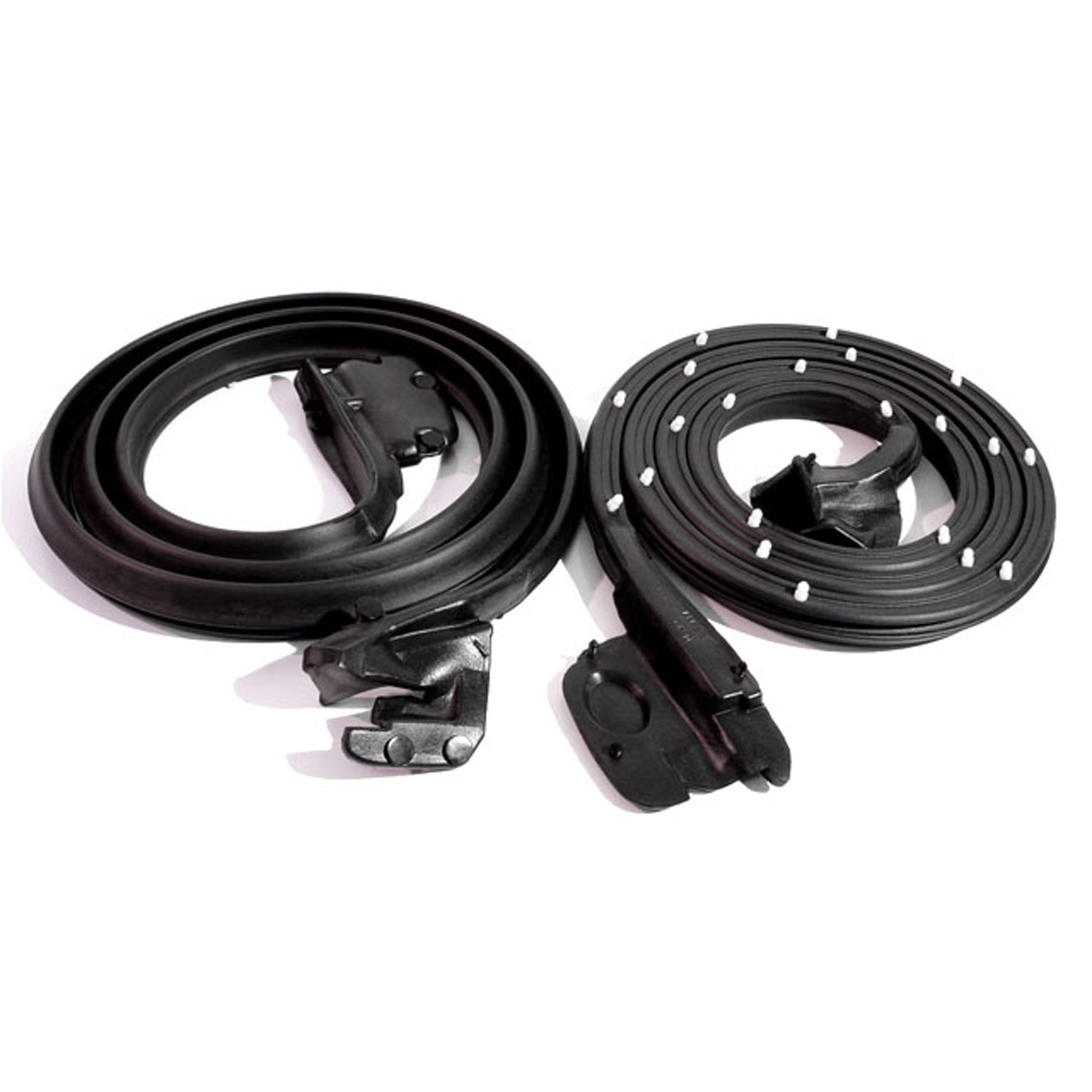 1967 Chevrolet Camaro Molded Door Seals with Clips and Molded Ends-LM 22Molded Door Seals with Clips and Molded Ends. Replaces OEM #7638506/7. Pair R&L
1967 Chevrolet Camaro Molded Door Seals with Clips and Molded Ends-LM 22Molded Door Seals with Clips and Molded Ends. Replaces OEM #7638506/7. Pair R&L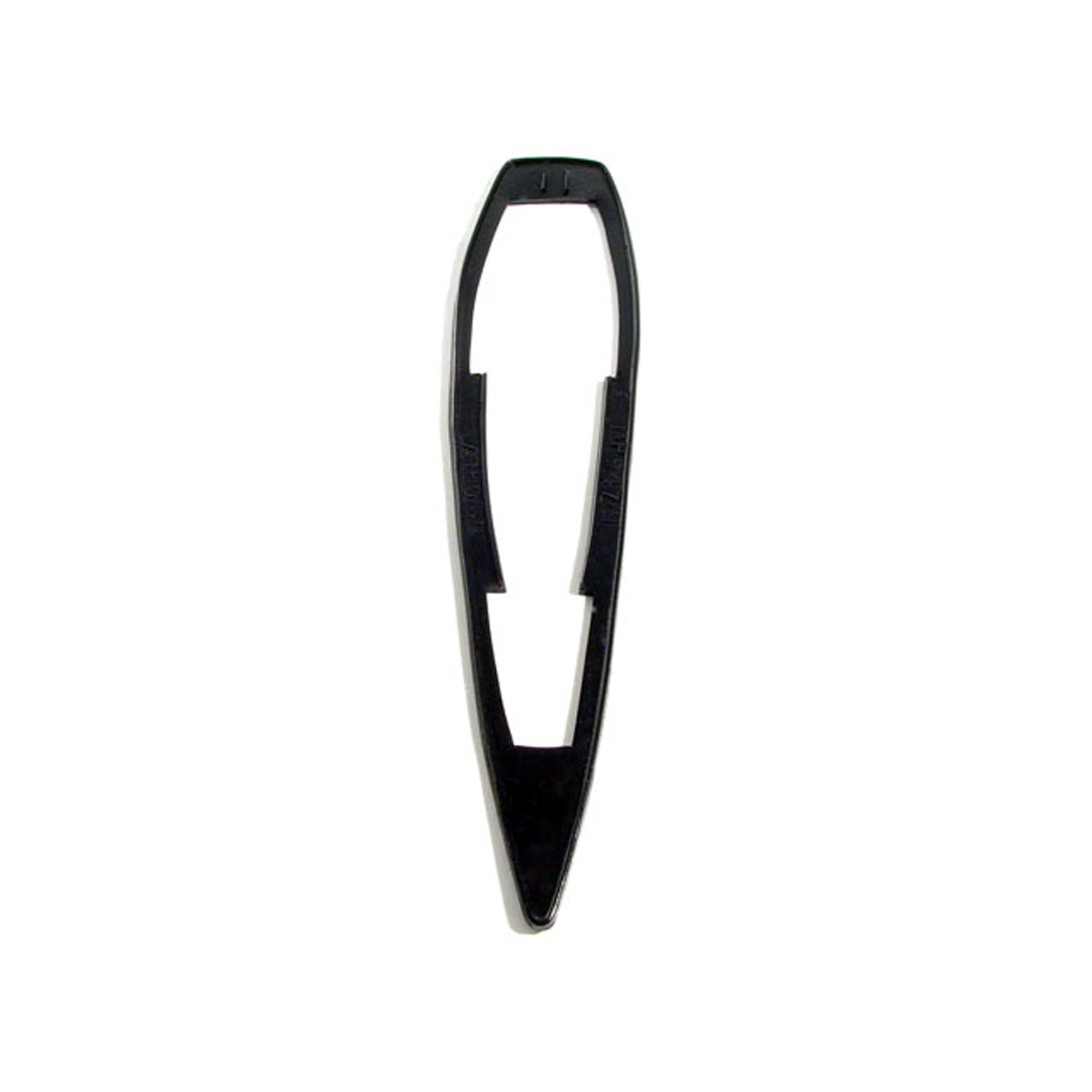 1967 Chevrolet Camaro Mirror pad. For mirrors with remote control. 1-1/4 in-MP 547-HMirror pad. For mirrors with remote control. 1-1/4 in. W x 5-1/2 in. L. Each.
1967 Chevrolet Camaro Mirror pad. For mirrors with remote control. 1-1/4 in-MP 547-HMirror pad. For mirrors with remote control. 1-1/4 in. W x 5-1/2 in. L. Each.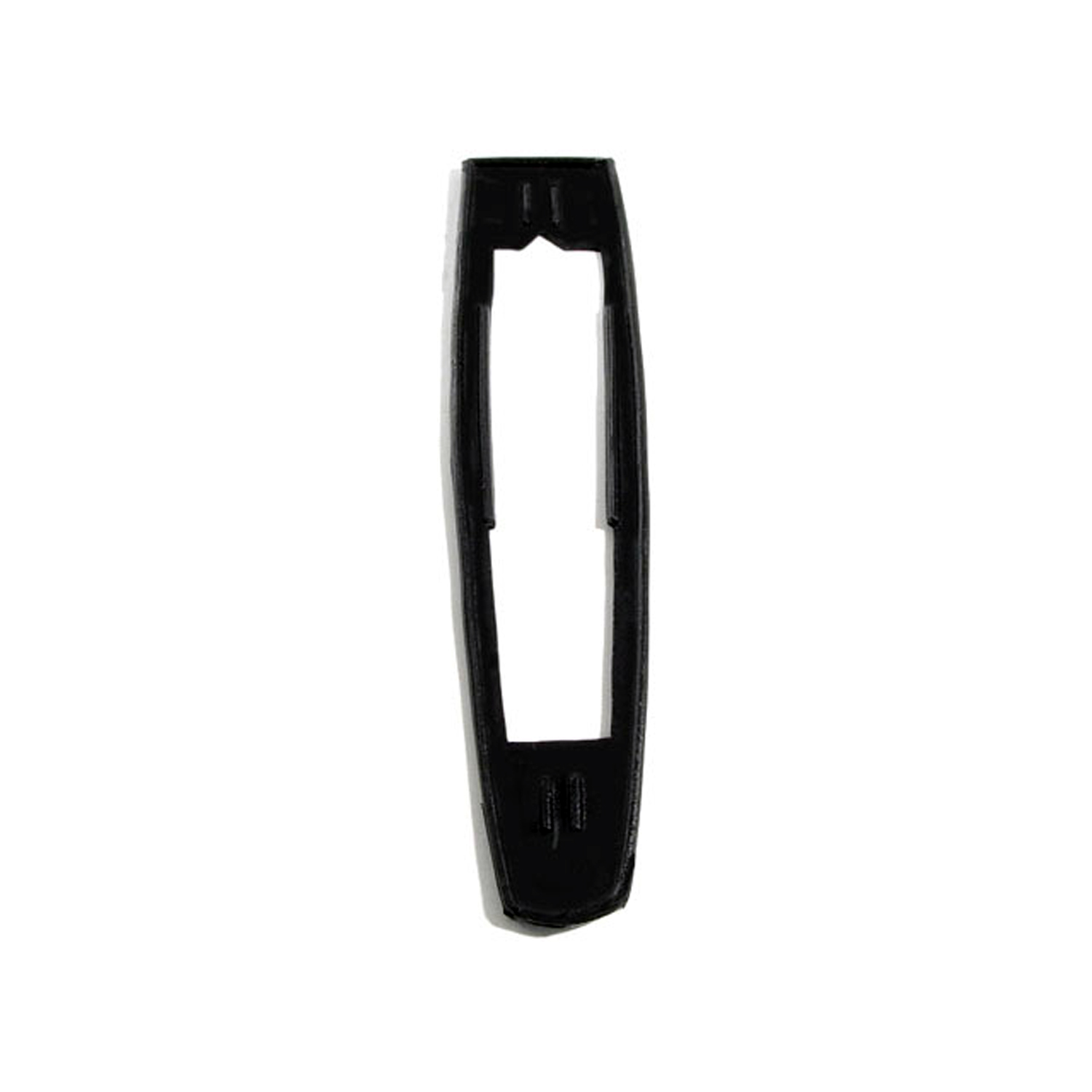 1967 Chevrolet Camaro Mirror Pad. 1-1/8" wide X 5" long. Each-MP 547-LMirror Pad. 1-1/8" wide X 5" long. Each
1967 Chevrolet Camaro Mirror Pad. 1-1/8" wide X 5" long. Each-MP 547-LMirror Pad. 1-1/8" wide X 5" long. Each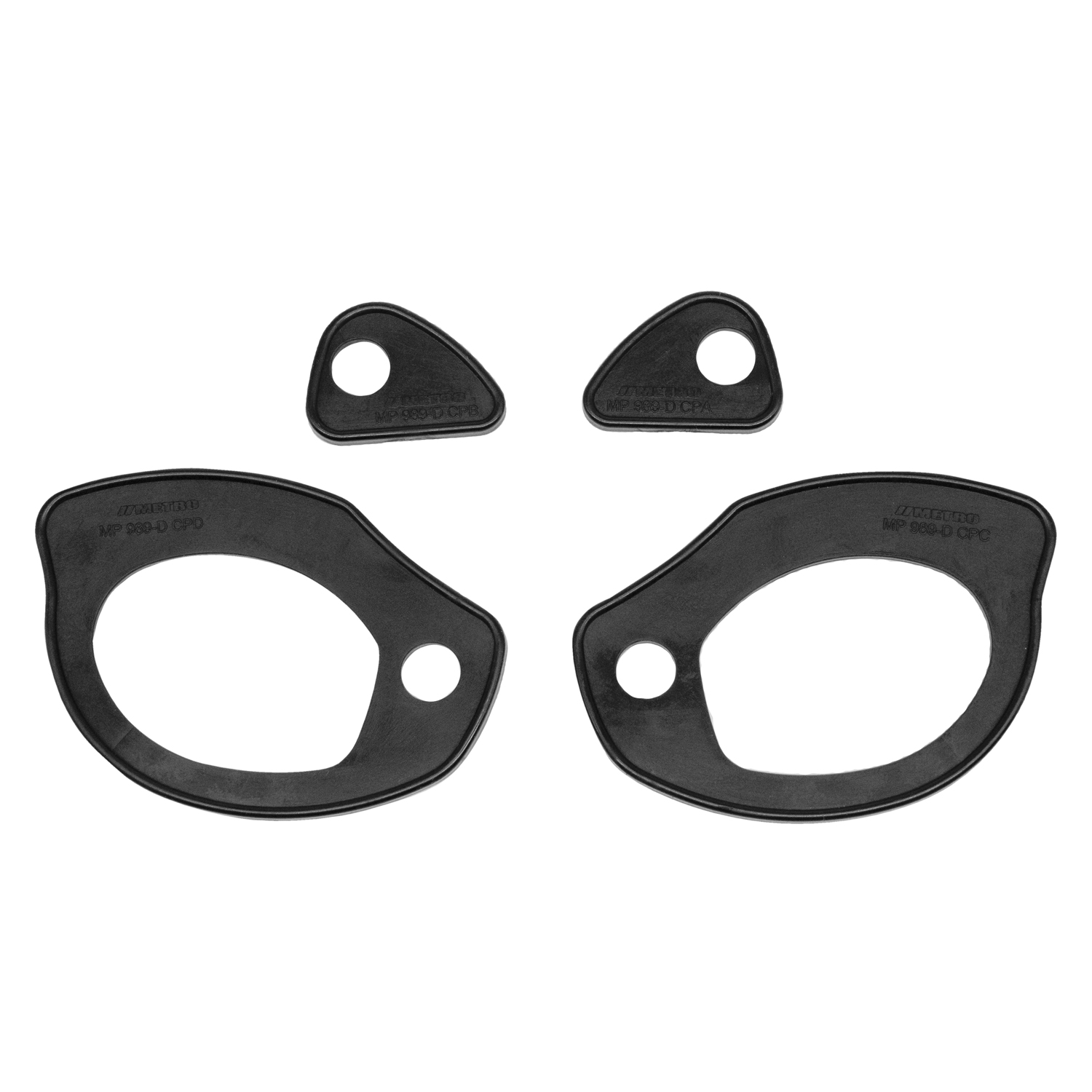 1967 Chevrolet Camaro Door Handle Pads. 2-5/8" long & 1-1/8" long. Set R&L-MP 989-DDoor Handle Pads. 2-5/8" long & 1-1/8" long. Set R&L
1967 Chevrolet Camaro Door Handle Pads. 2-5/8" long & 1-1/8" long. Set R&L-MP 989-DDoor Handle Pads. 2-5/8" long & 1-1/8" long. Set R&L 1967 Chevrolet Camaro Antenna base pad. 1-9/16 in. OD; 1-1/16 in. ID. Each.-MP 989-QAntenna base pad. 1-9/16 in. OD; 1-1/16 in. ID. Each.
1967 Chevrolet Camaro Antenna base pad. 1-9/16 in. OD; 1-1/16 in. ID. Each.-MP 989-QAntenna base pad. 1-9/16 in. OD; 1-1/16 in. ID. Each.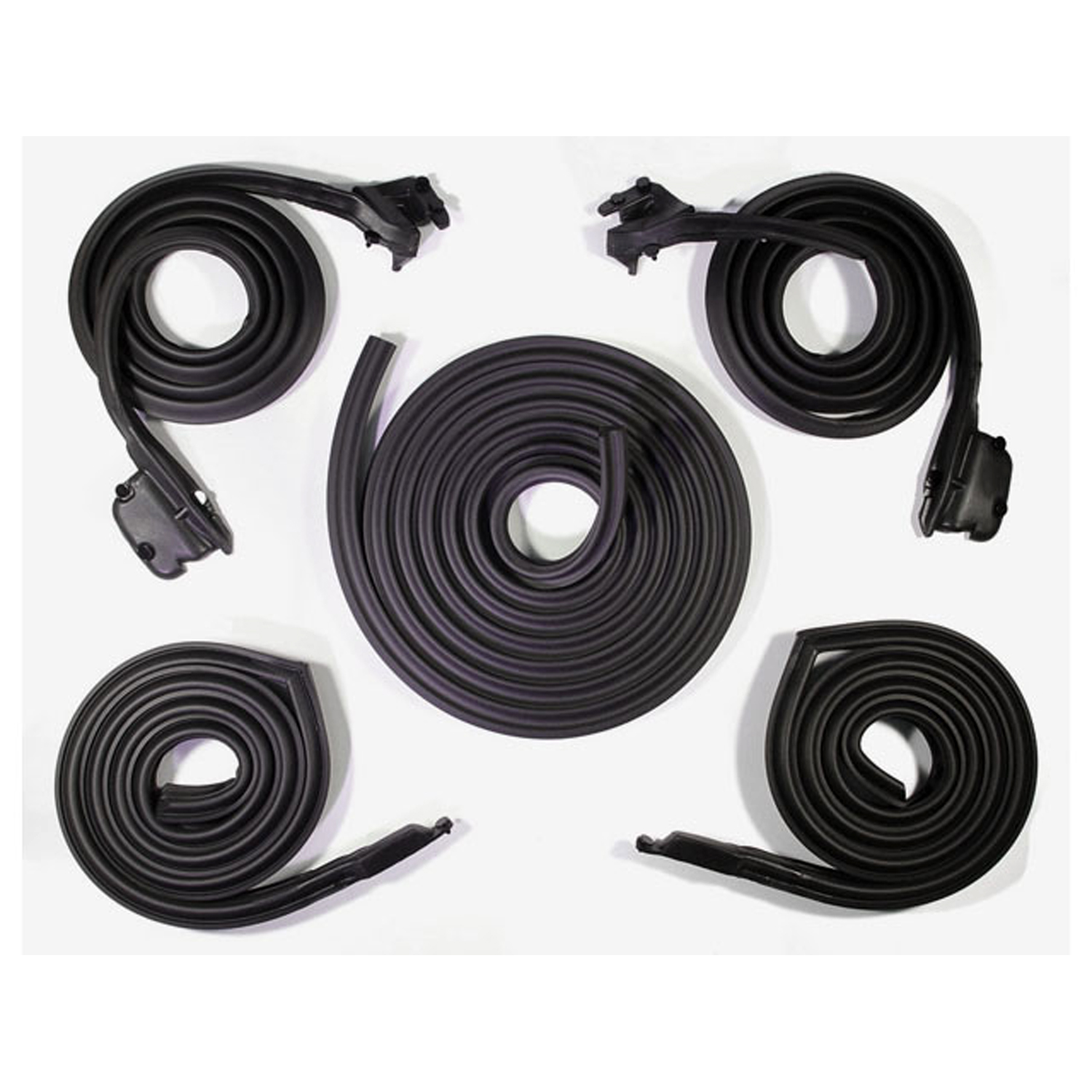 1967 Chevrolet Camaro Basic Kit, for 2-Door Hardtop-RKB 2001-103Basic Kit, for 2-Door Hardtop. Door (LM 22) Roof Rail (RR 7000) Trunk (TK 46-15), Seals.
1967 Chevrolet Camaro Basic Kit, for 2-Door Hardtop-RKB 2001-103Basic Kit, for 2-Door Hardtop. Door (LM 22) Roof Rail (RR 7000) Trunk (TK 46-15), Seals.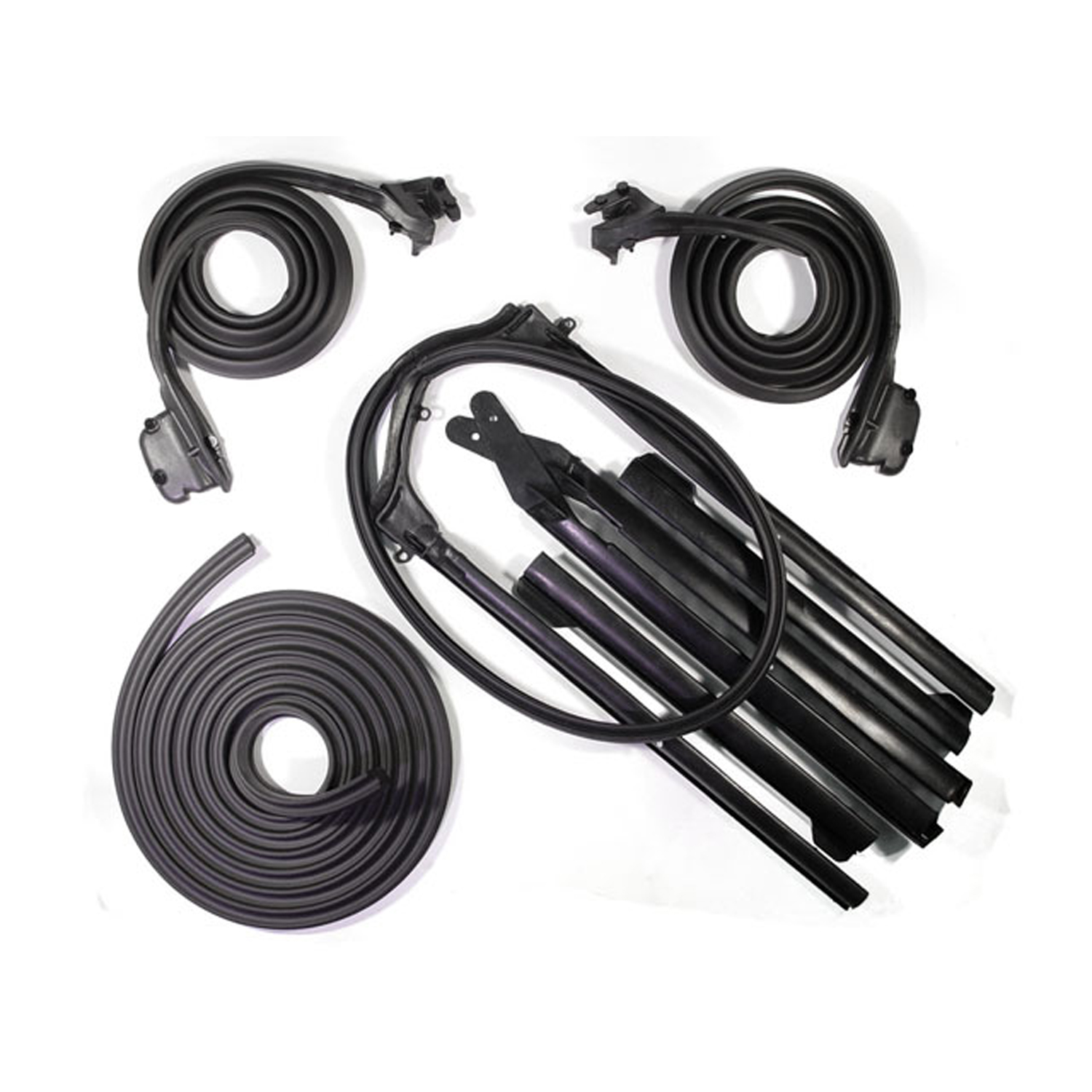 1967 Chevrolet Camaro Basic kit. Fits '67 GM F-body convertible only-RKB 2001-111Basic kit. Fits '67 GM F-body convertible only. Includes door (LM 22) roof-rail (RR 1500) and trunk (TK 46-15) seals. 8-piece kit.
1967 Chevrolet Camaro Basic kit. Fits '67 GM F-body convertible only-RKB 2001-111Basic kit. Fits '67 GM F-body convertible only. Includes door (LM 22) roof-rail (RR 1500) and trunk (TK 46-15) seals. 8-piece kit.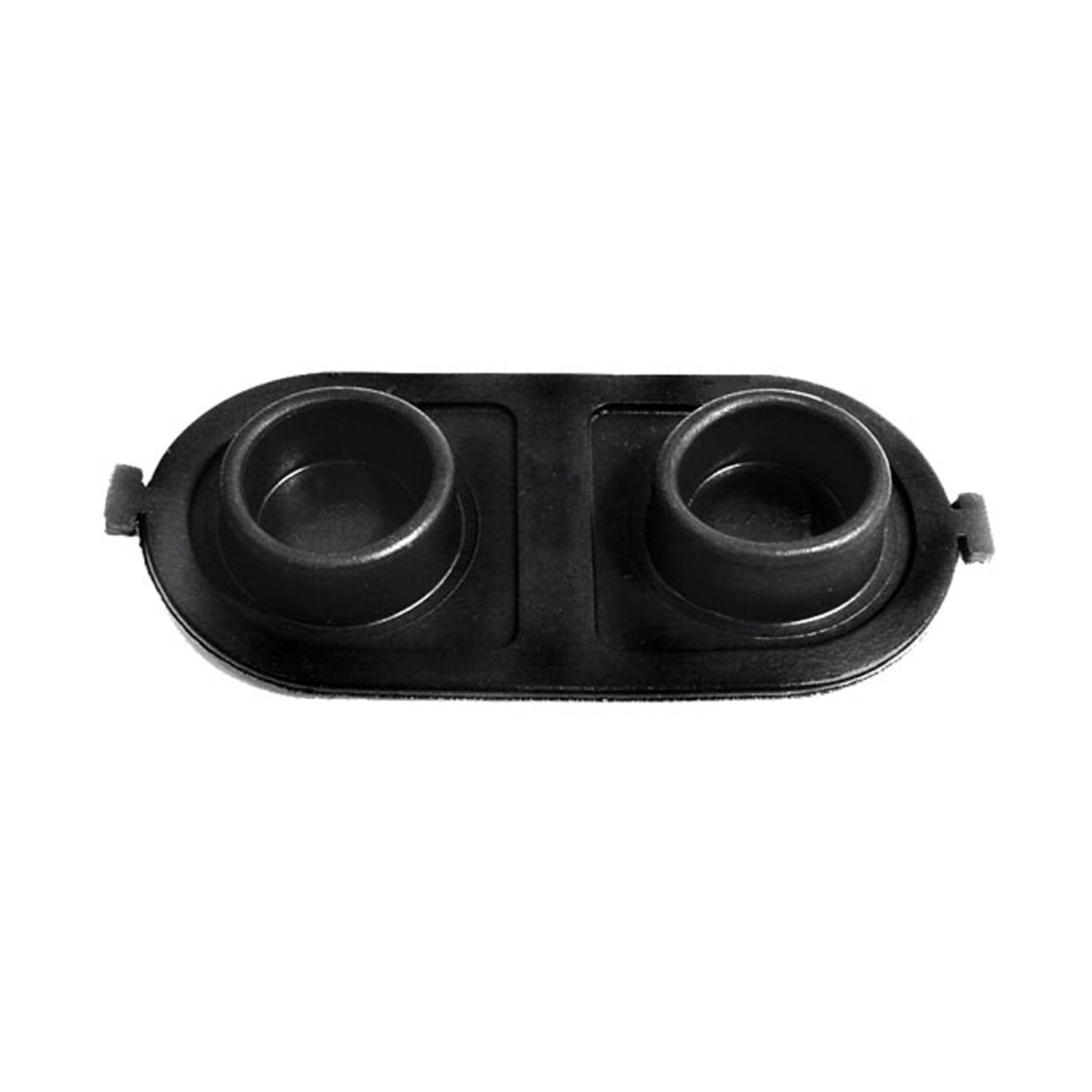 1967 Chevrolet Camaro Brake Master Cylinder Cover Seal. Replaces OEM #5470861-RP 2-EBrake Master Cylinder Cover Seal. Replaces OEM #5470861. 5" X 2-1/2". Each
1967 Chevrolet Camaro Brake Master Cylinder Cover Seal. Replaces OEM #5470861-RP 2-EBrake Master Cylinder Cover Seal. Replaces OEM #5470861. 5" X 2-1/2". Each 1967 Chevrolet Camaro Sun Visor Support Sleeve. Clear plastic. Each-RP 303-ASun Visor Support Sleeve. Clear plastic. Each
1967 Chevrolet Camaro Sun Visor Support Sleeve. Clear plastic. Each-RP 303-ASun Visor Support Sleeve. Clear plastic. Each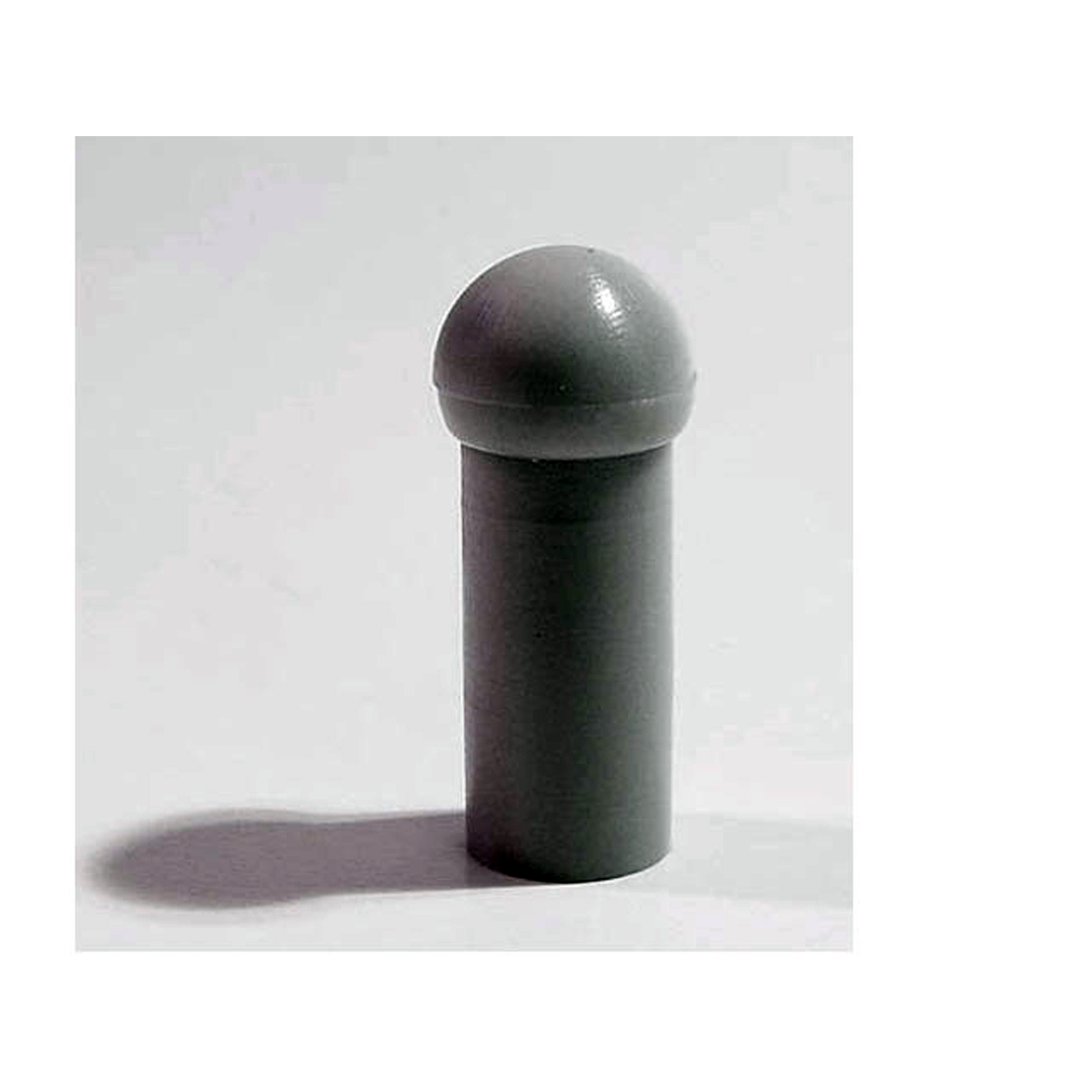 1967 Chevrolet Camaro Sun Visor Rod Rubber Grommet. 3/4" long. Gray. Each-RP 303-CSun Visor Rod Rubber Grommet. 3/4" long. Gray. Each
1967 Chevrolet Camaro Sun Visor Rod Rubber Grommet. 3/4" long. Gray. Each-RP 303-CSun Visor Rod Rubber Grommet. 3/4" long. Gray. Each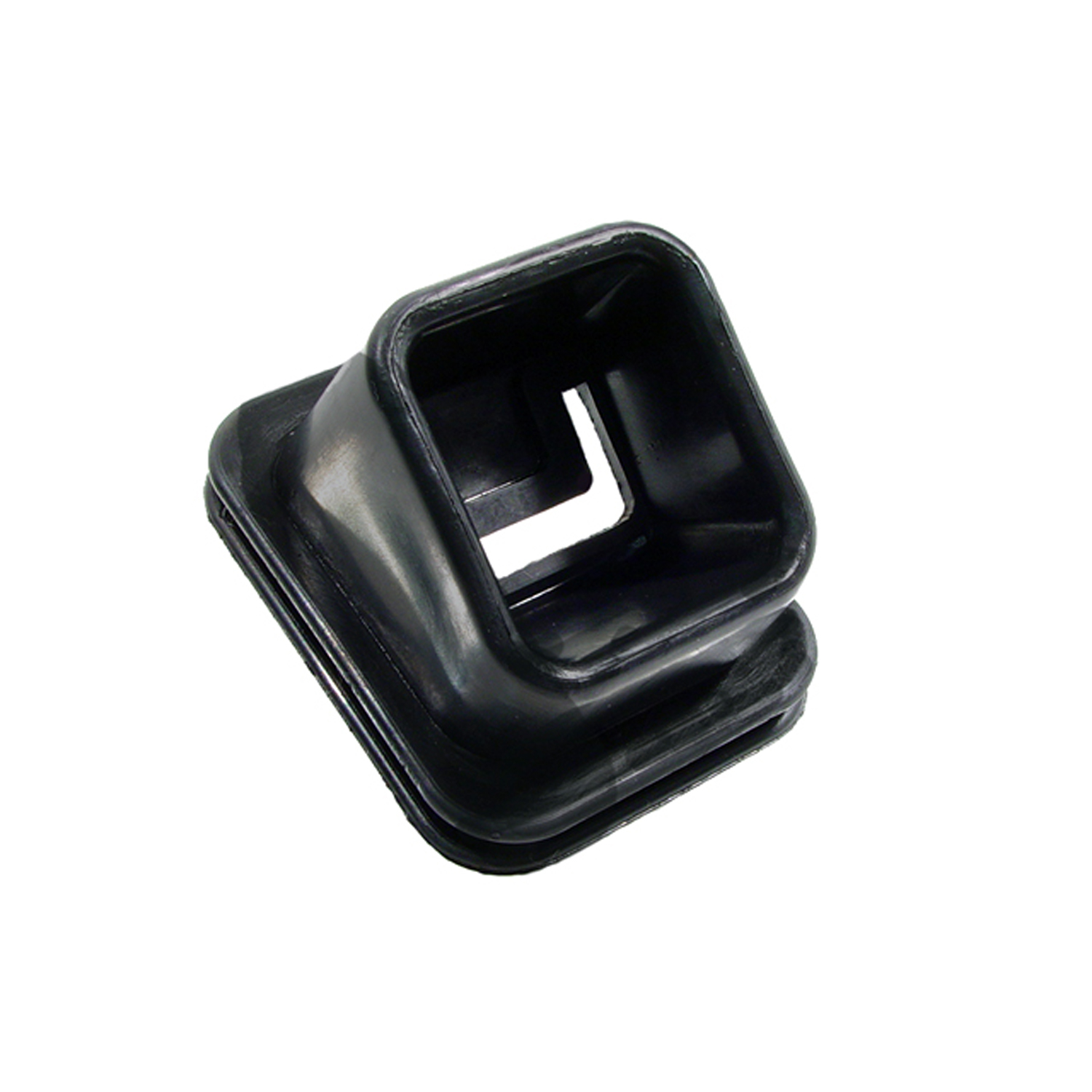 1967 Chevrolet Camaro Clutch Arm Fork Boot. Fits on bell housing to keep dirt out-RP 31-DClutch Arm Fork Boot. Fits on bell housing to keep dirt out. Each
1967 Chevrolet Camaro Clutch Arm Fork Boot. Fits on bell housing to keep dirt out-RP 31-DClutch Arm Fork Boot. Fits on bell housing to keep dirt out. Each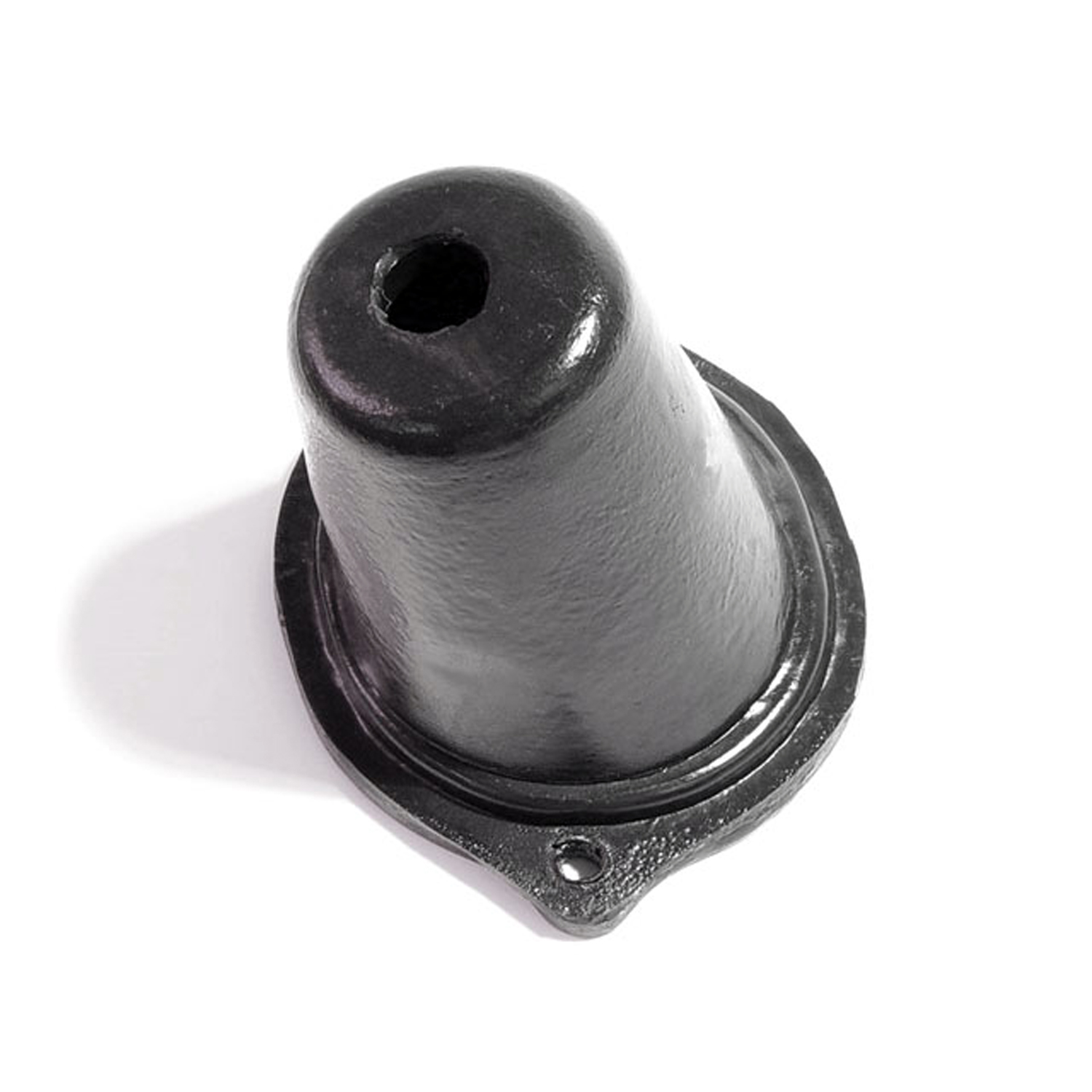 1967 Chevrolet Camaro Clutch Rod Seal. Steel core. 2-5/16" O.D., 3/8" I.D. Each-RP 31-FClutch Rod Seal. Steel core. 2-5/16" O.D., 3/8" I.D. Each
1967 Chevrolet Camaro Clutch Rod Seal. Steel core. 2-5/16" O.D., 3/8" I.D. Each-RP 31-FClutch Rod Seal. Steel core. 2-5/16" O.D., 3/8" I.D. Each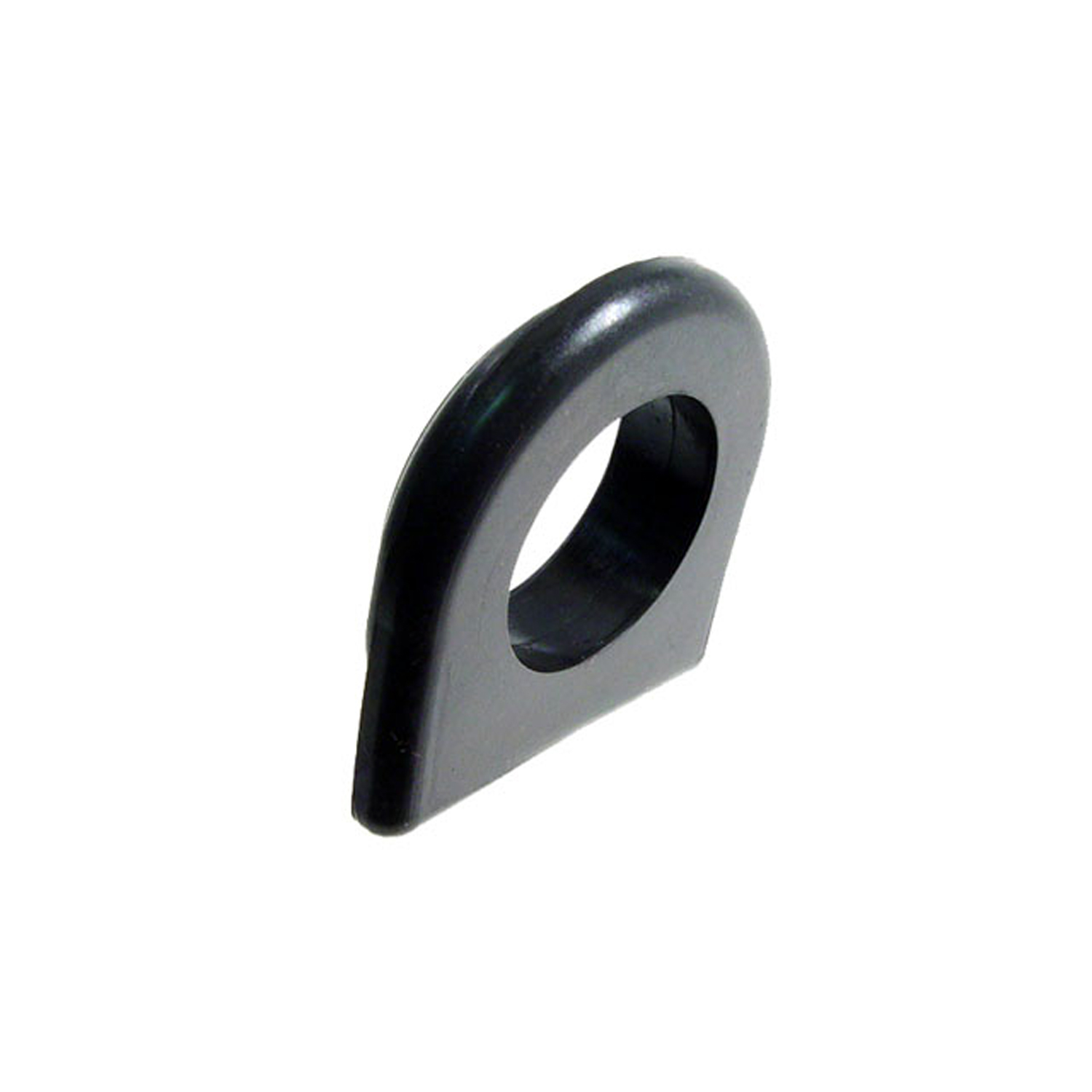 1967 Chevrolet Camaro Positive Crankcase Ventilation Grommet-RP 9Positive Crankcase Ventilation Grommet. 11/16" wide X 1-5/8" long, with 15/16" I.D. (Fits some models) Each
1967 Chevrolet Camaro Positive Crankcase Ventilation Grommet-RP 9Positive Crankcase Ventilation Grommet. 11/16" wide X 1-5/8" long, with 15/16" I.D. (Fits some models) Each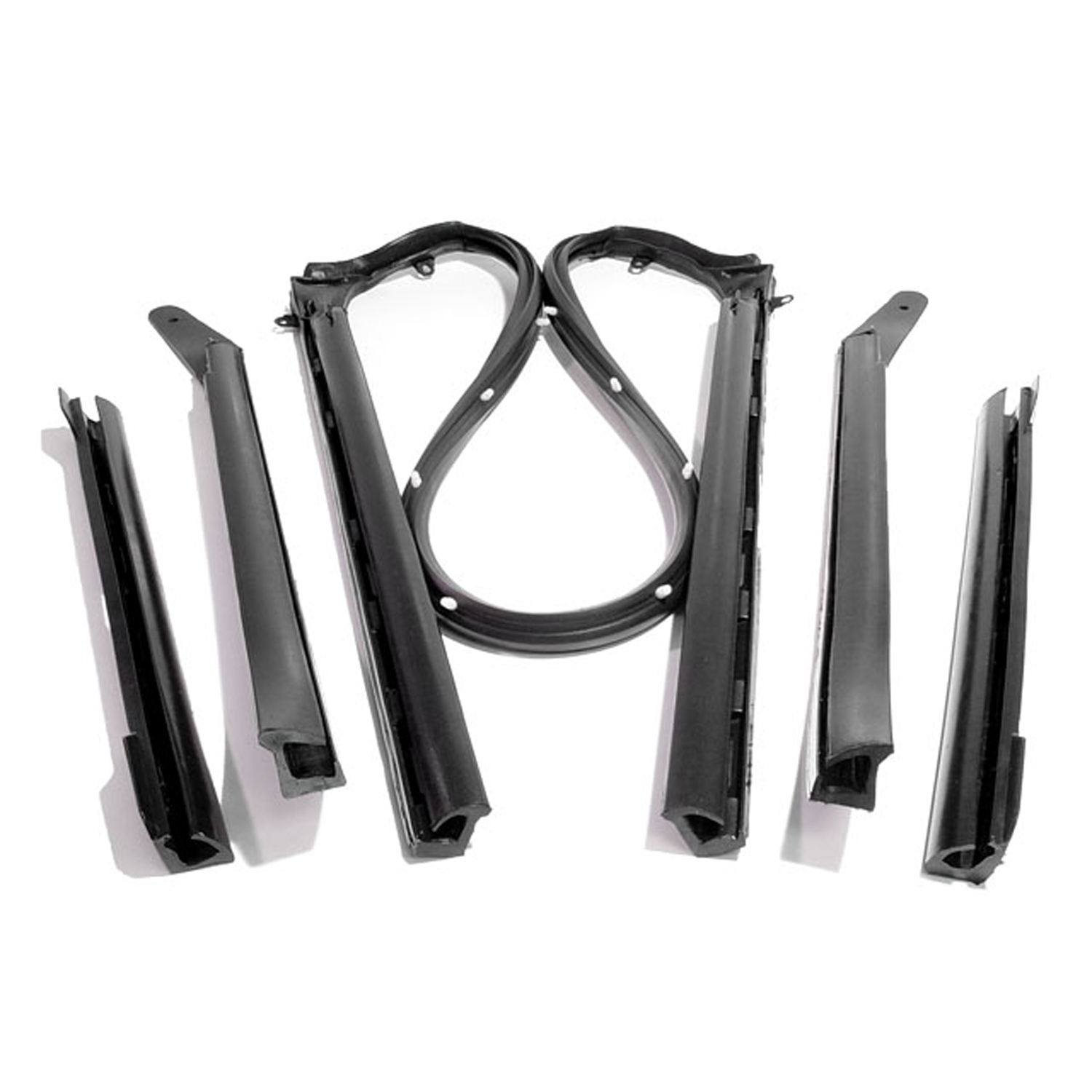 1967 Chevrolet Camaro Convertible top-rail kit-RR 1500Convertible top-rail kit. Fits '67 GM F-body convertibles only. (See RR 1501 for '68-'69 F-body convertibles). 5-piece set includes all left-side and right-side top-rail seals and windshield top header seal (p/n HD 1500).
1967 Chevrolet Camaro Convertible top-rail kit-RR 1500Convertible top-rail kit. Fits '67 GM F-body convertibles only. (See RR 1501 for '68-'69 F-body convertibles). 5-piece set includes all left-side and right-side top-rail seals and windshield top header seal (p/n HD 1500).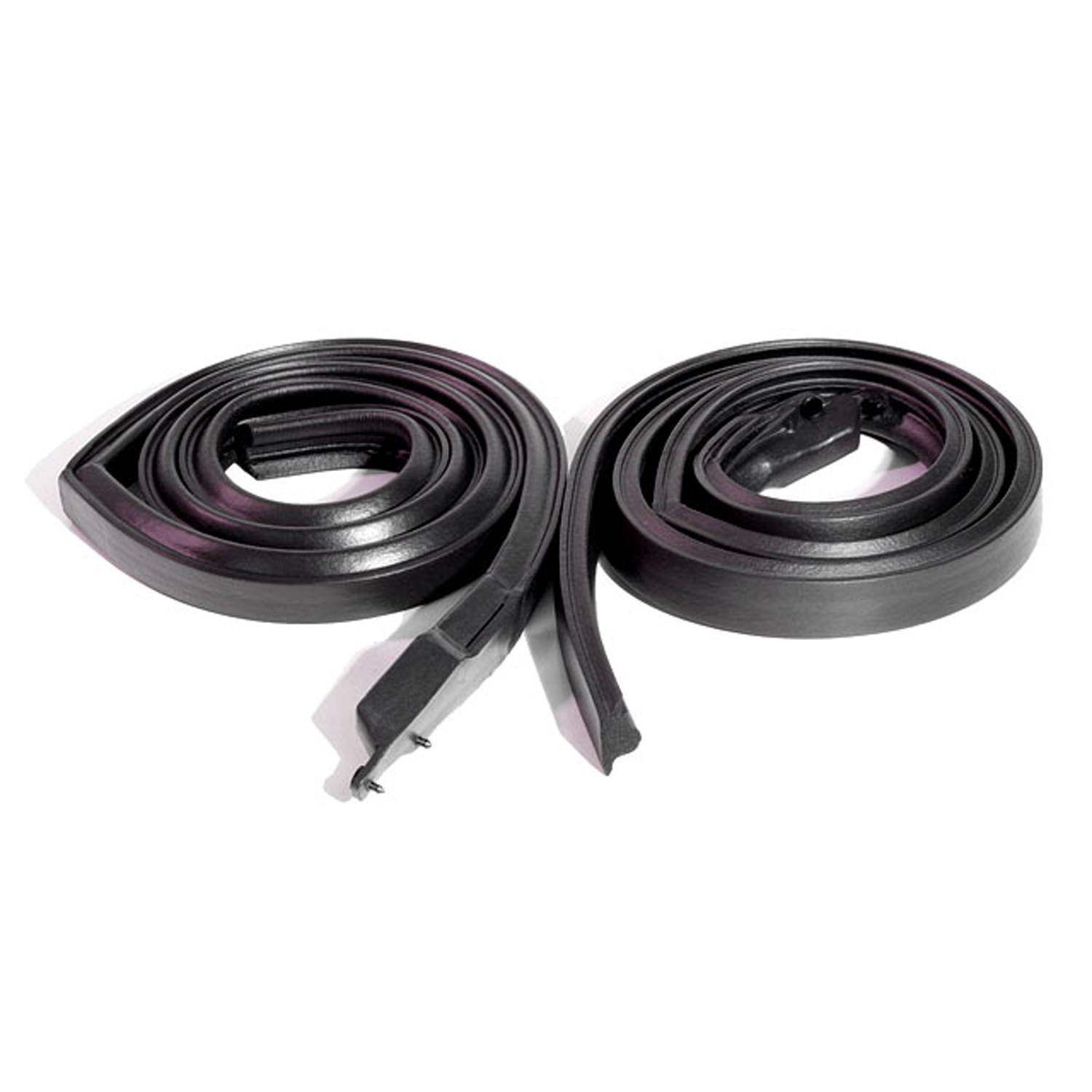 1967 Chevrolet Camaro Molded Roof Rail Seals, for 2-Door Hardtop. Pair R&L-RR 7000Molded Roof Rail Seals, for 2-Door Hardtop. Pair R&L
1967 Chevrolet Camaro Molded Roof Rail Seals, for 2-Door Hardtop. Pair R&L-RR 7000Molded Roof Rail Seals, for 2-Door Hardtop. Pair R&L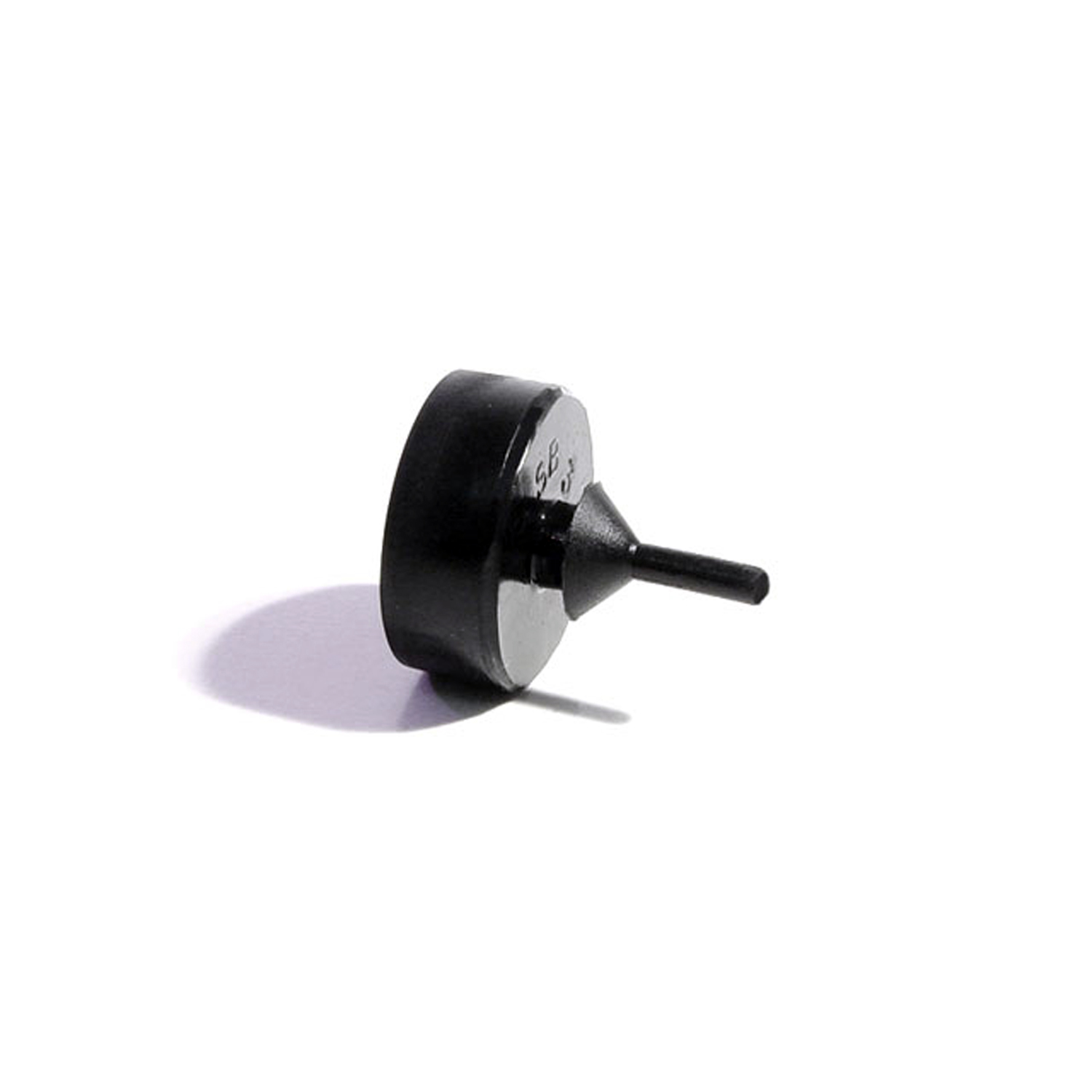 1967 Chevrolet Camaro Trunk Bumper. Fits lower corner on decklid. 15/16" O.D-SB 34Trunk Bumper. Fits lower corner on decklid. 15/16" O.D., 11/16" high. Each
1967 Chevrolet Camaro Trunk Bumper. Fits lower corner on decklid. 15/16" O.D-SB 34Trunk Bumper. Fits lower corner on decklid. 15/16" O.D., 11/16" high. Each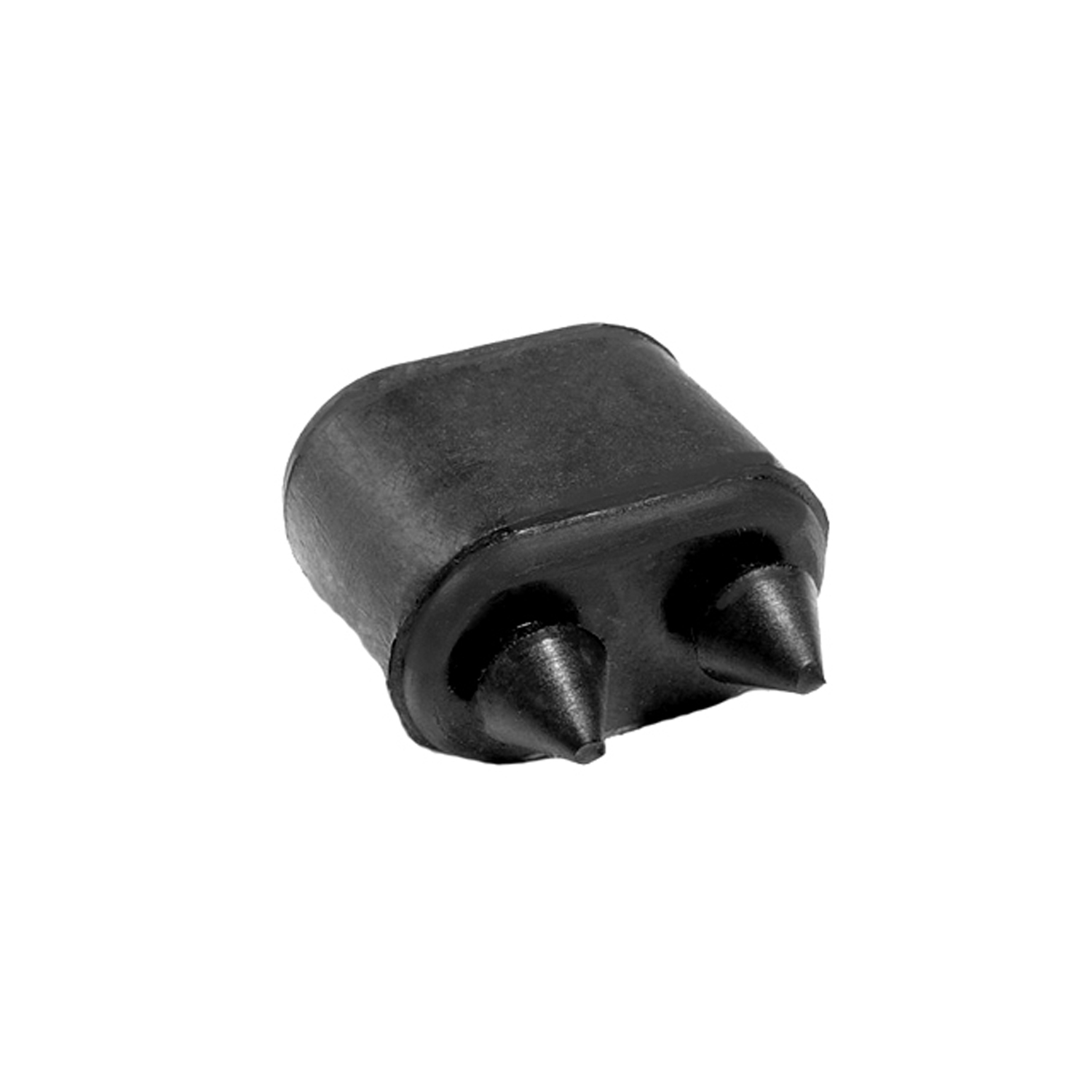 1967 Chevrolet Camaro Door Bumper, 57-74 GM Cars, Made with Twin Retainers, Each-SB 35Door Bumper, 57-74 GM Cars, made with twin retainers, Each. Measure 1-1/16" high X 19/32" wide X 1-1/32" long.
1967 Chevrolet Camaro Door Bumper, 57-74 GM Cars, Made with Twin Retainers, Each-SB 35Door Bumper, 57-74 GM Cars, made with twin retainers, Each. Measure 1-1/16" high X 19/32" wide X 1-1/32" long.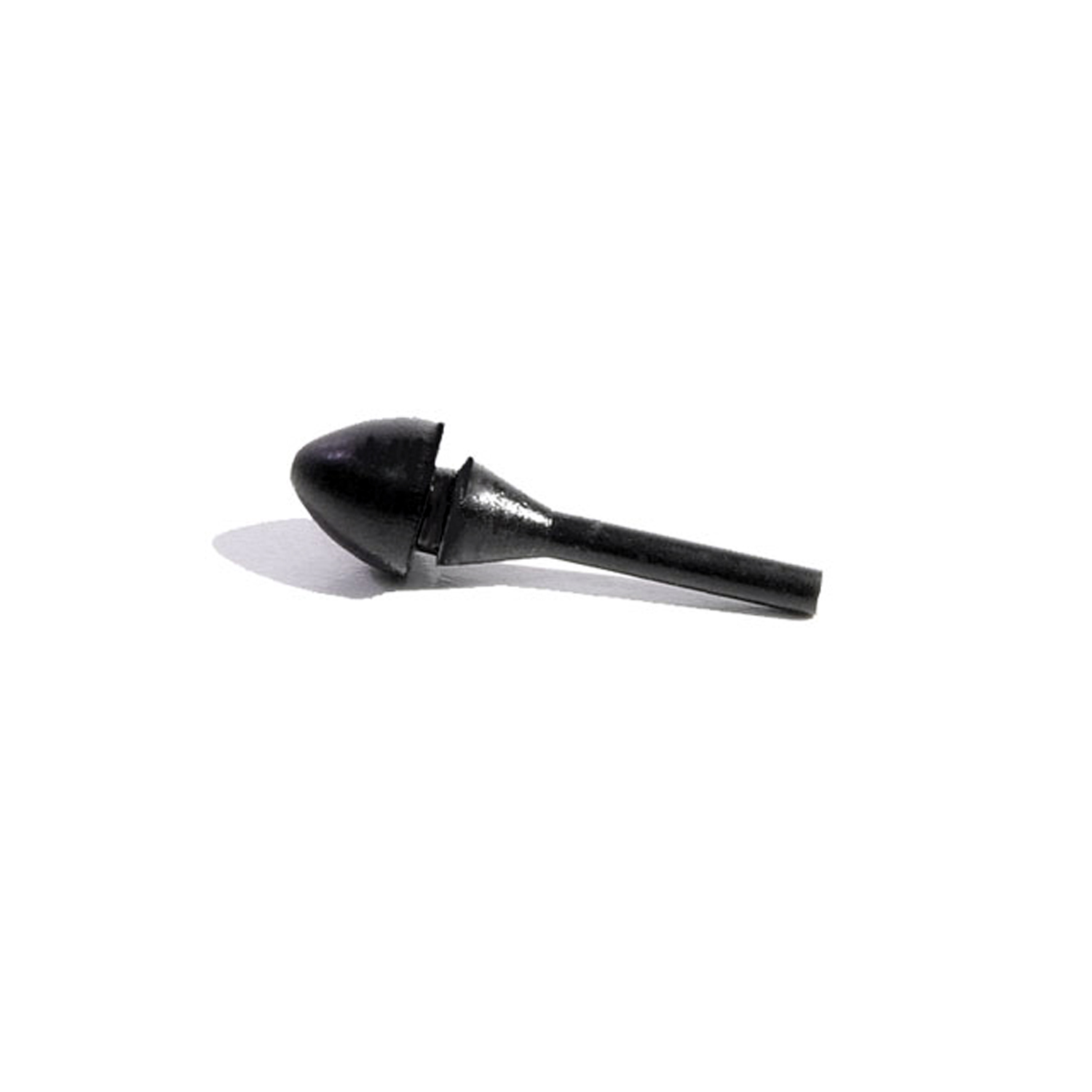 1967 Chevrolet Camaro Interior Bumper. For glove box, ash tray or fuel door-SB 36Interior Bumper. For glove box, ash tray or fuel door. Fits 3/16" hole. Each
1967 Chevrolet Camaro Interior Bumper. For glove box, ash tray or fuel door-SB 36Interior Bumper. For glove box, ash tray or fuel door. Fits 3/16" hole. Each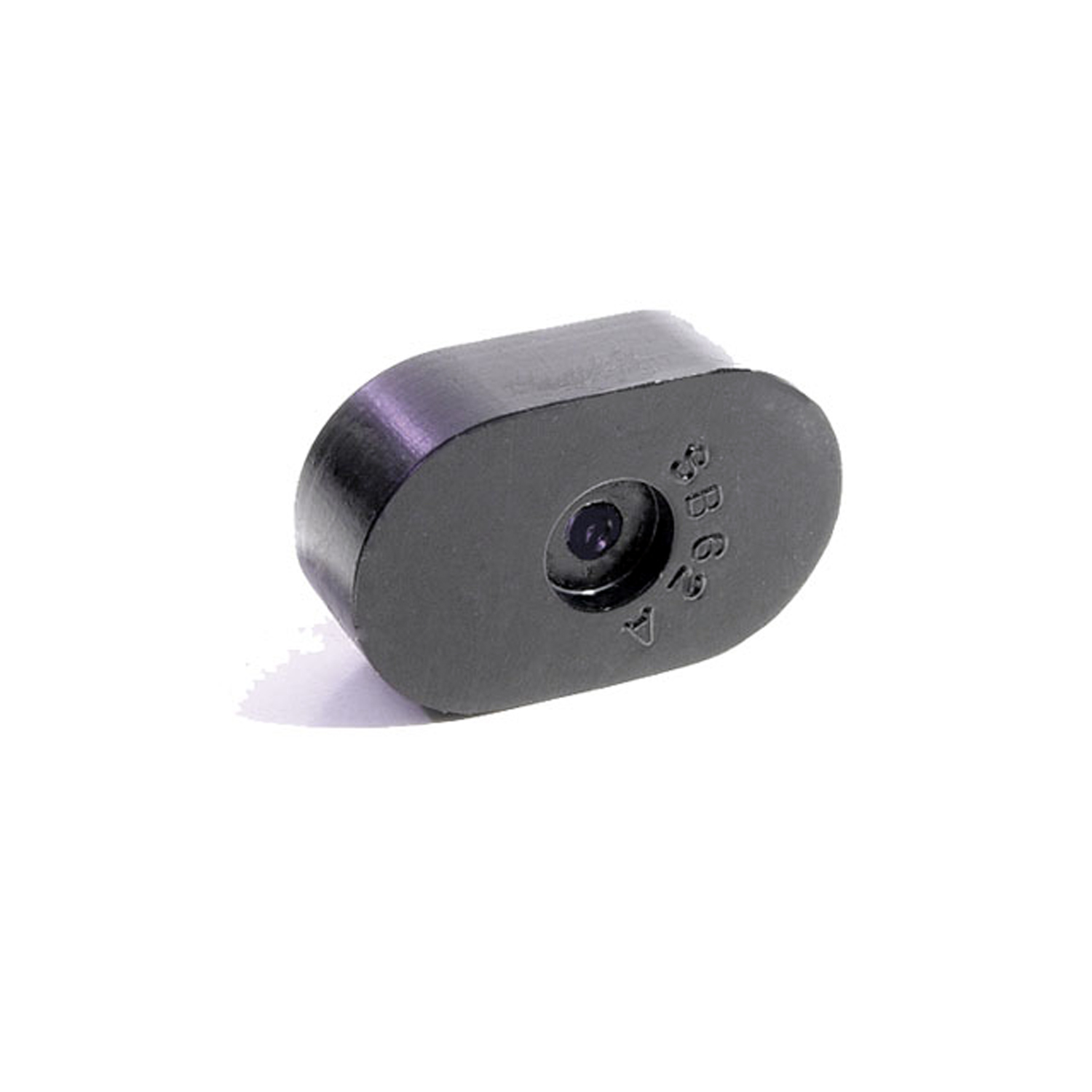 1967 Chevrolet Camaro Seat Bumper. Made with steel core like original-SB 62-ASeat Bumper. Made with steel core like original. 1-1/2" long, 7/16" thick. Two used per car. Each
1967 Chevrolet Camaro Seat Bumper. Made with steel core like original-SB 62-ASeat Bumper. Made with steel core like original. 1-1/2" long, 7/16" thick. Two used per car. Each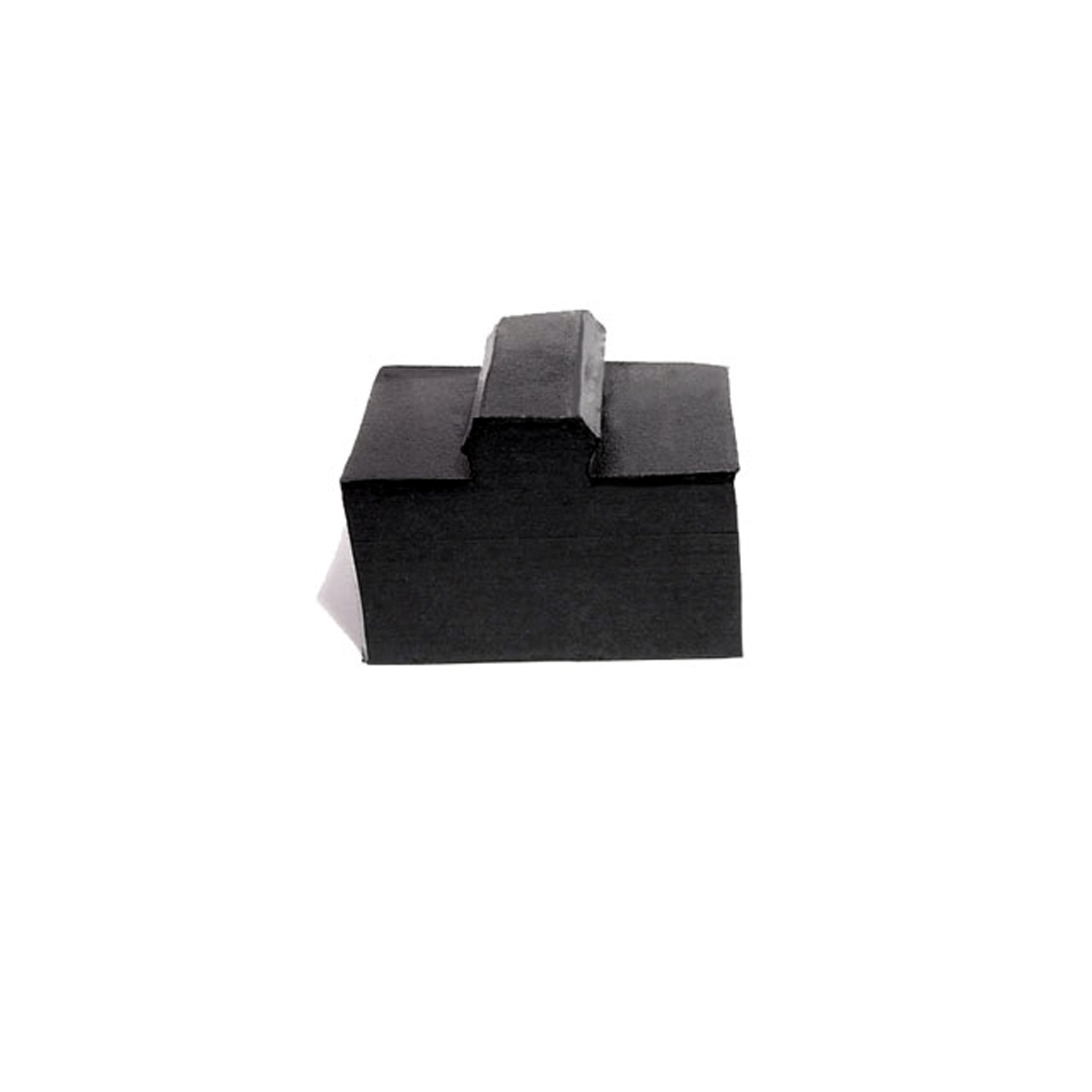 1967 Chevrolet Camaro Clutch Pedal Return Bumper-SB 64Clutch Pedal Return Bumper. 1-13/16" long X 13/16" wide X 7/8" high (center). Each
1967 Chevrolet Camaro Clutch Pedal Return Bumper-SB 64Clutch Pedal Return Bumper. 1-13/16" long X 13/16" wide X 7/8" high (center). Each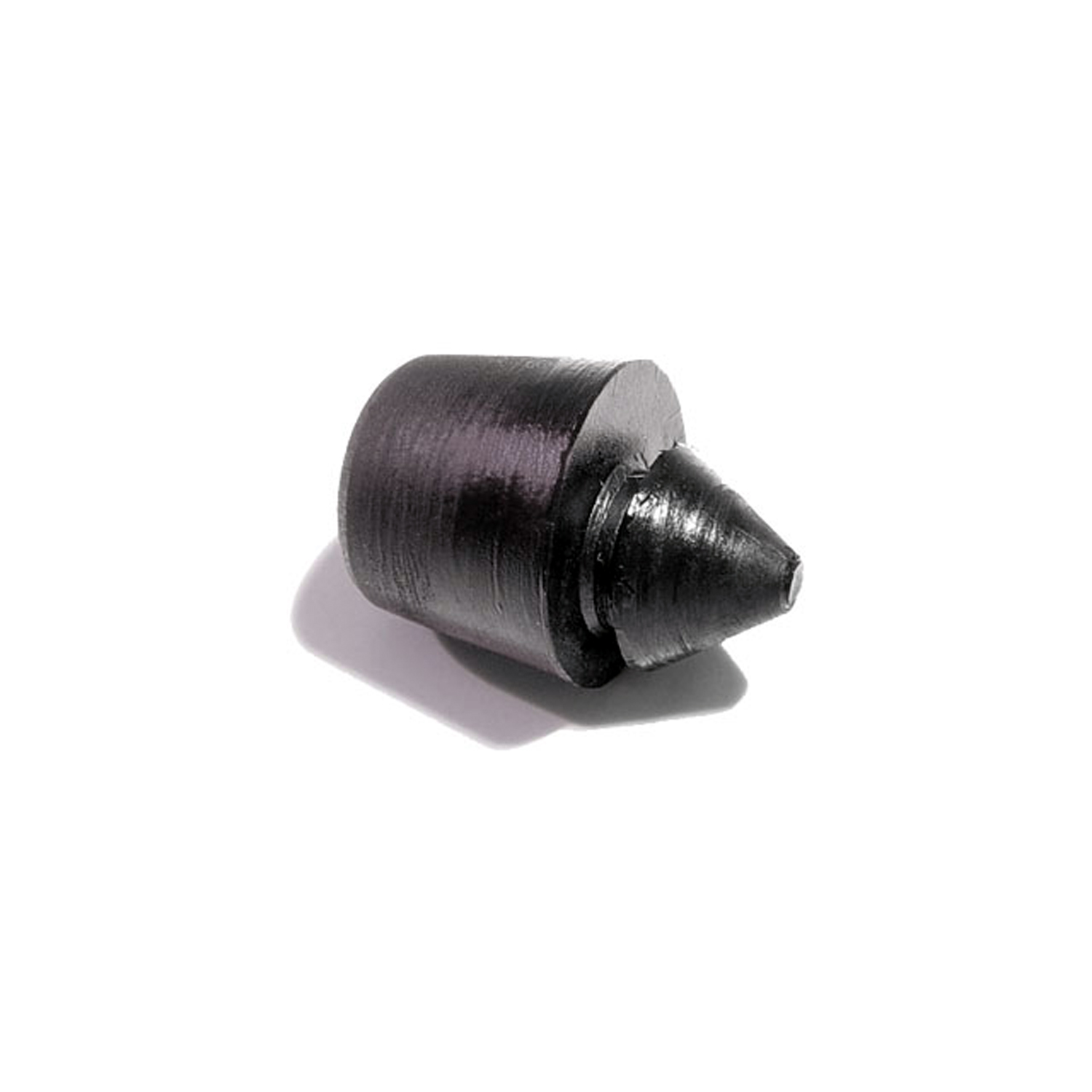 1967 Chevrolet Camaro License Plate Bumper. Fits a 1/4" hole. Each-SB 75License Plate Bumper. Fits a 1/4" hole. Each
1967 Chevrolet Camaro License Plate Bumper. Fits a 1/4" hole. Each-SB 75License Plate Bumper. Fits a 1/4" hole. Each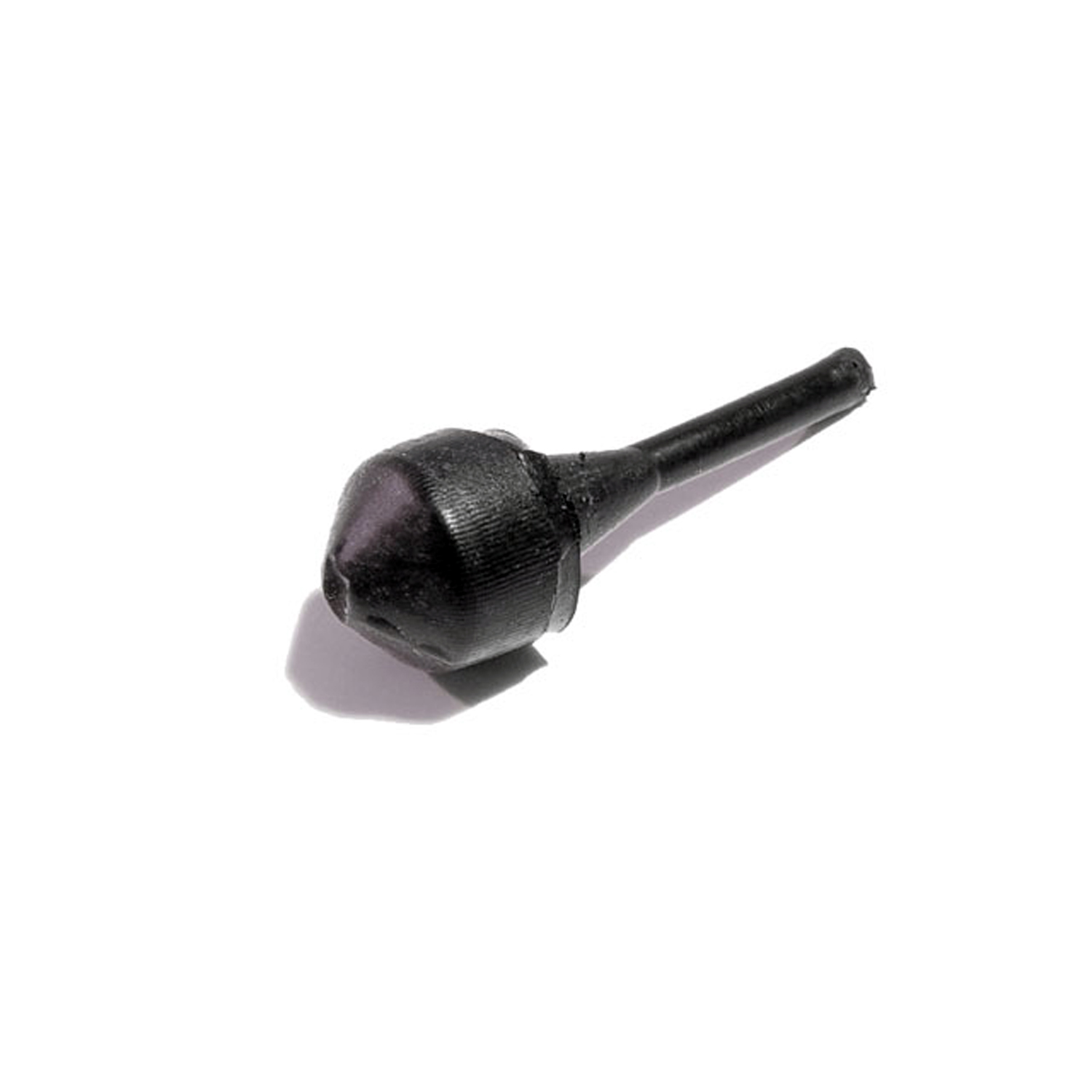 1967 Chevrolet Camaro Glove Box and Fuel Door Bumper. Fits 3/16" hole. Each-SB 78Glove Box and Fuel Door Bumper. Fits 3/16" hole. Each
1967 Chevrolet Camaro Glove Box and Fuel Door Bumper. Fits 3/16" hole. Each-SB 78Glove Box and Fuel Door Bumper. Fits 3/16" hole. Each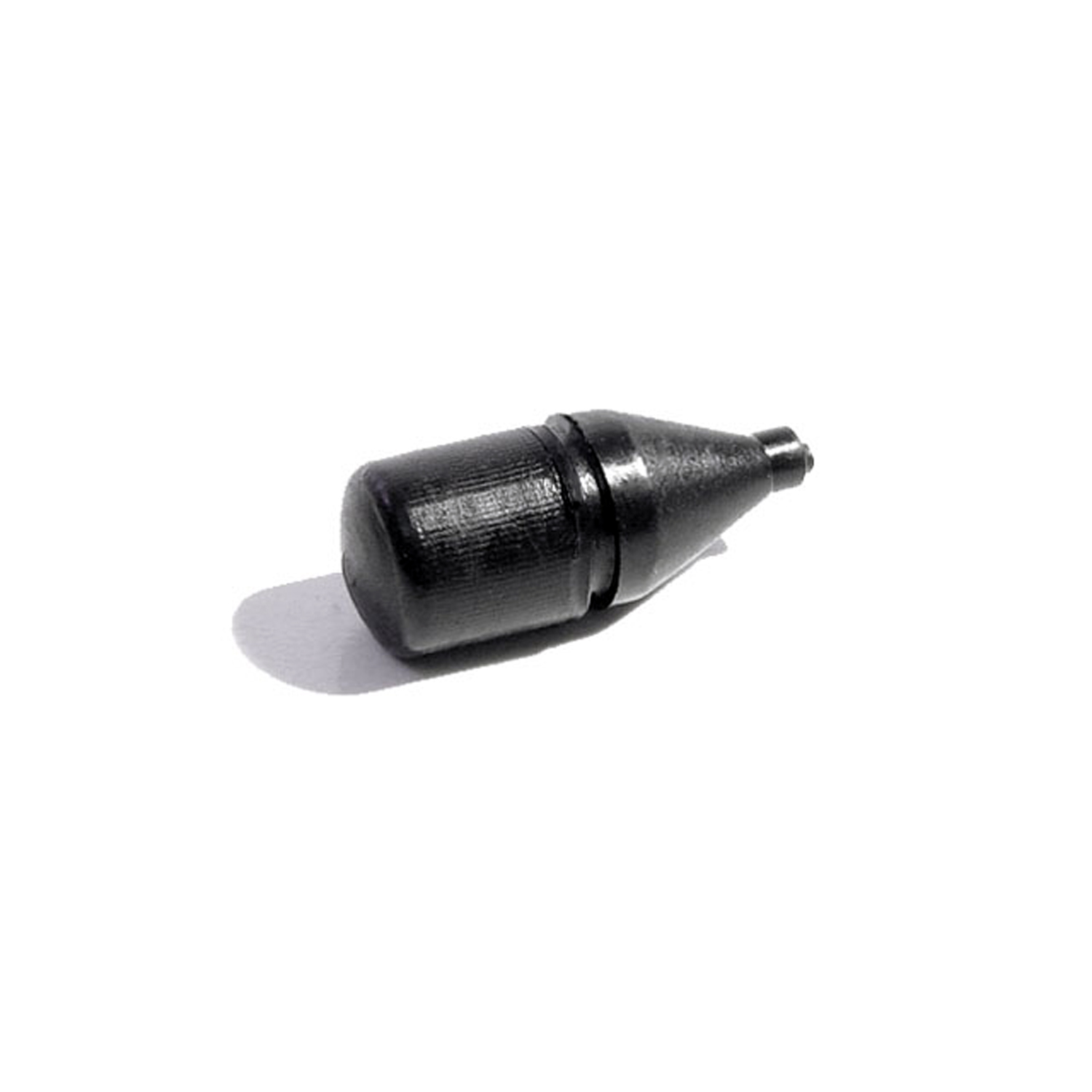 1967 Chevrolet Camaro Fuel Door Bumper. 7/8" high, 5/16" O.D. Each-SB 81Fuel Door Bumper. 7/8" high, 5/16" O.D. Each
1967 Chevrolet Camaro Fuel Door Bumper. 7/8" high, 5/16" O.D. Each-SB 81Fuel Door Bumper. 7/8" high, 5/16" O.D. Each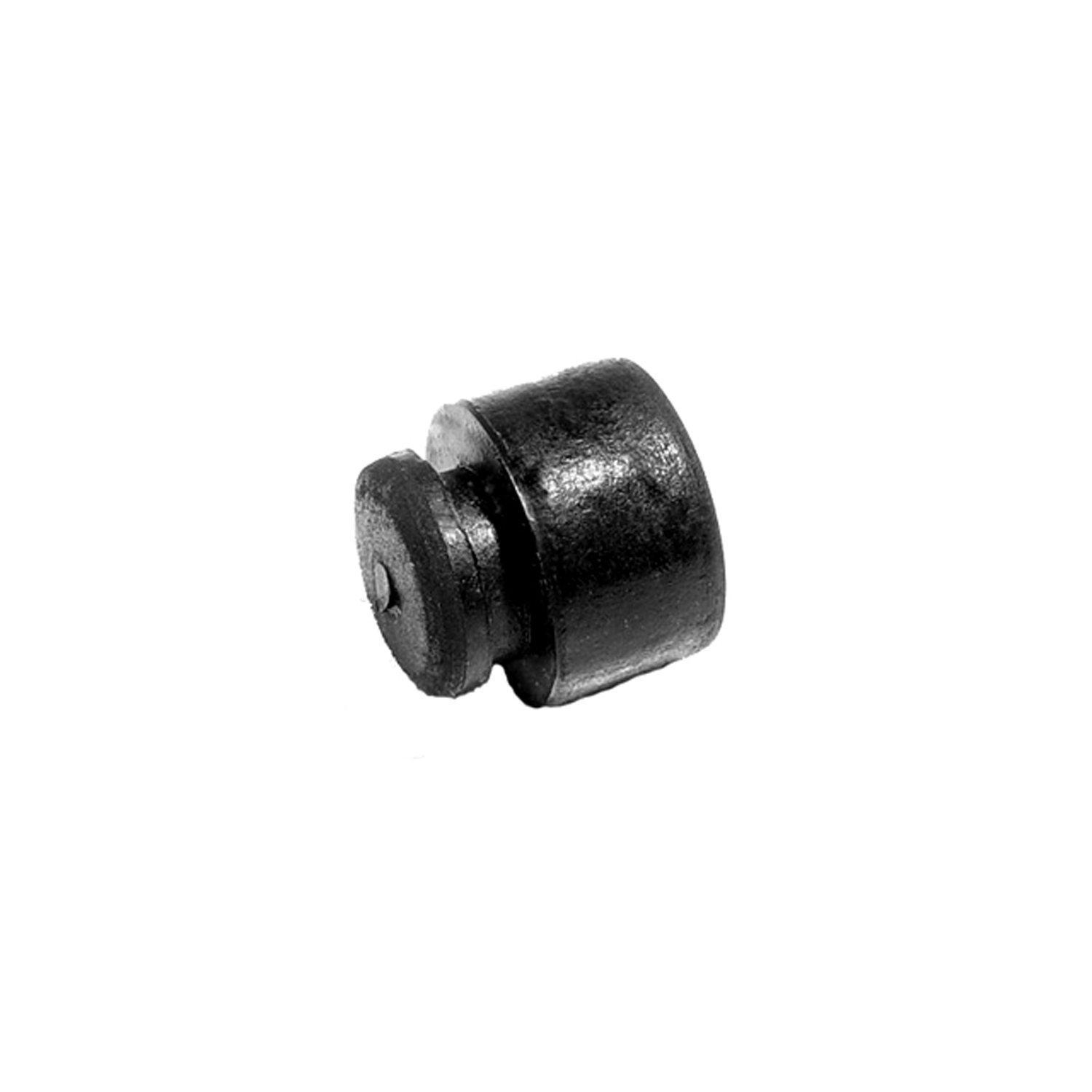 1967 Chevrolet Camaro License Plate Bumper. Fits a 1/4" hole. Each-SB 82License Plate Bumper. Fits a 1/4" hole. Each
1967 Chevrolet Camaro License Plate Bumper. Fits a 1/4" hole. Each-SB 82License Plate Bumper. Fits a 1/4" hole. Each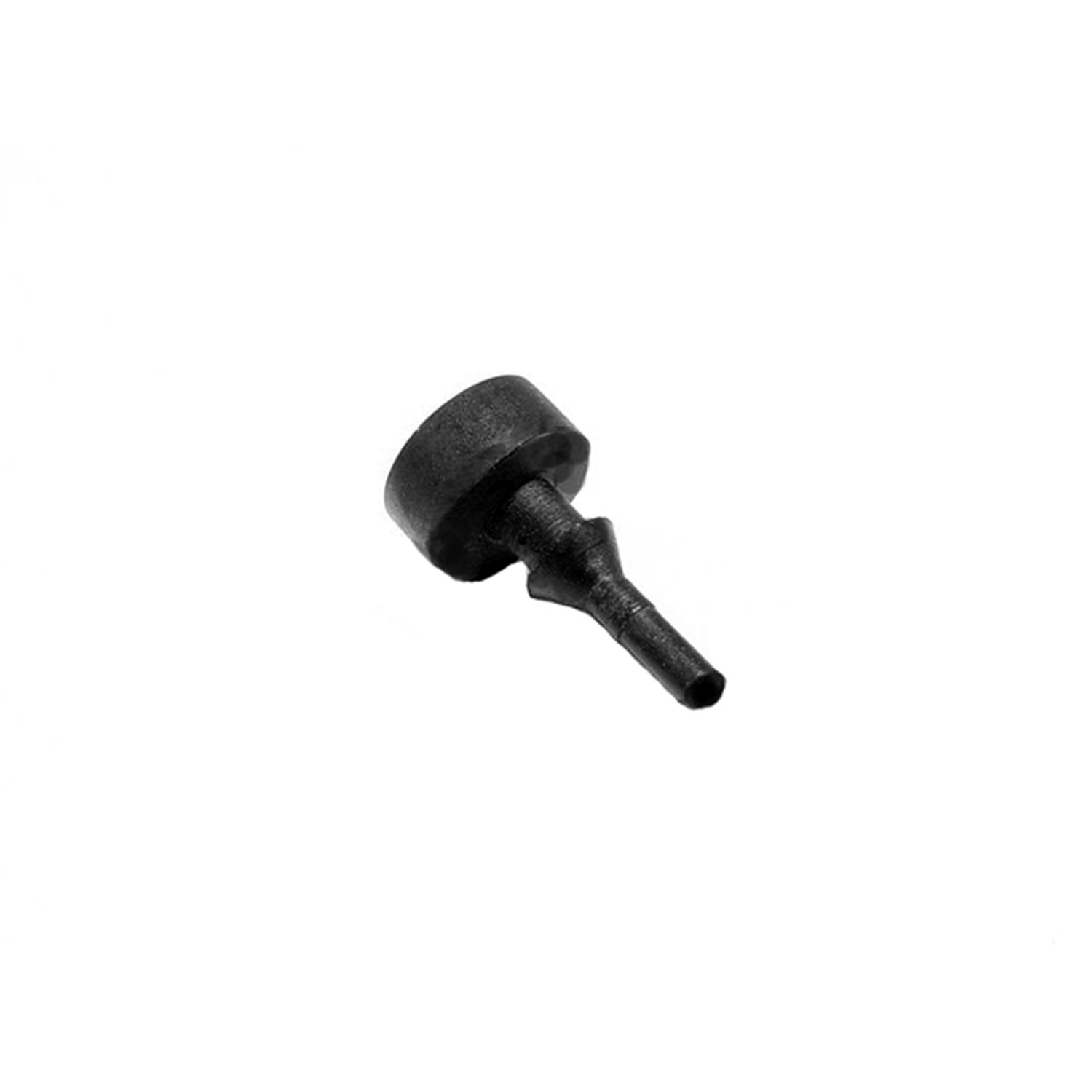 1967 Chevrolet Camaro Console Map Compartment and Ashtray, Bumper. 5/16" O.D-SB 90Console Map Compartment and Ashtray, Bumper. 5/16" O.D. Each
1967 Chevrolet Camaro Console Map Compartment and Ashtray, Bumper. 5/16" O.D-SB 90Console Map Compartment and Ashtray, Bumper. 5/16" O.D. Each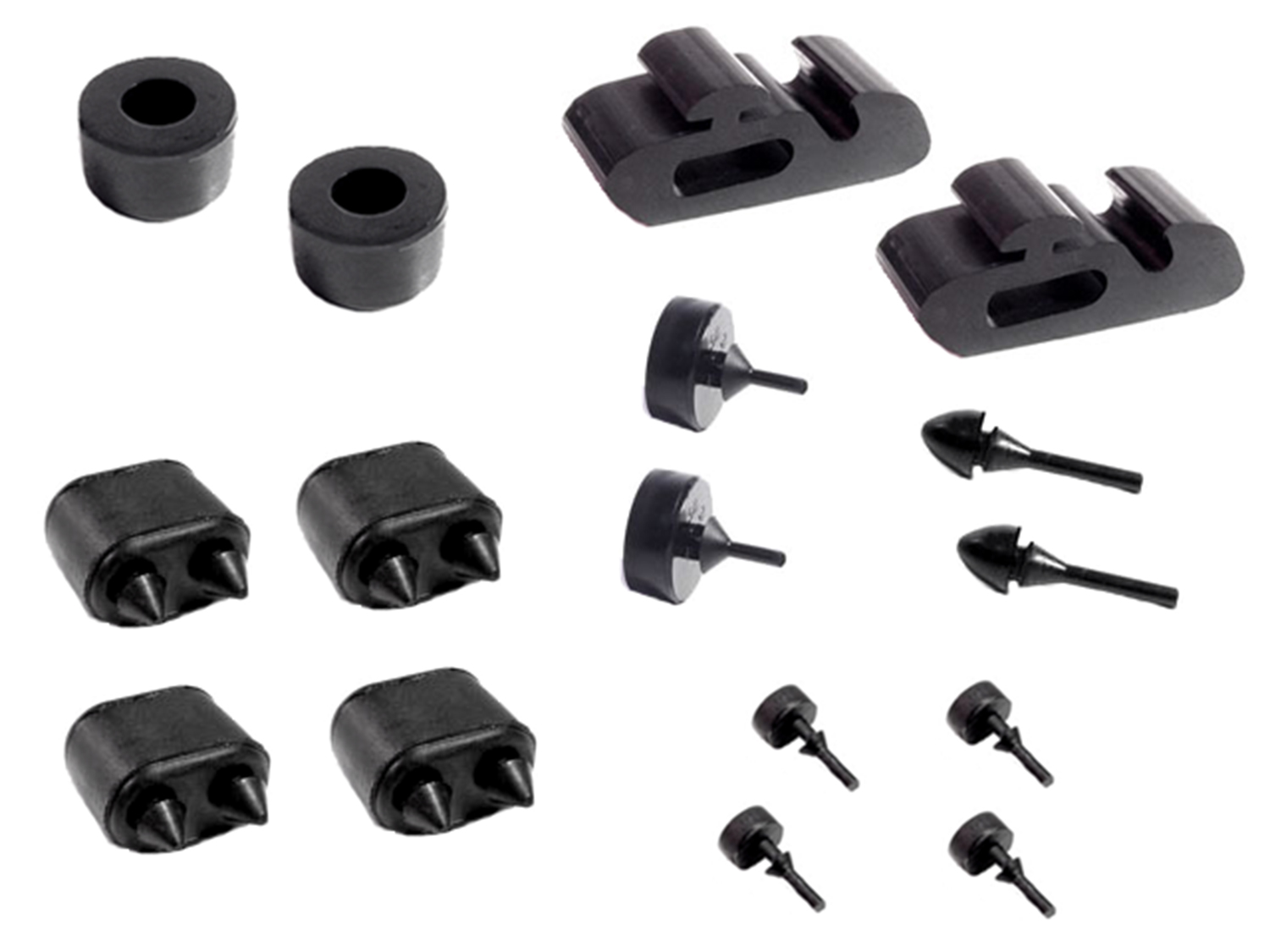 1967 Chevrolet Camaro Snap-In-Bumper Kit-SBK 206Snap-In-Bumper Kit. 16-Piece Set Includes: (2)A 5, (2)HF 4-A, (2)SB 34, (4)SB 35, (2)SB 36, (4)SB 90
1967 Chevrolet Camaro Snap-In-Bumper Kit-SBK 206Snap-In-Bumper Kit. 16-Piece Set Includes: (2)A 5, (2)HF 4-A, (2)SB 34, (4)SB 35, (2)SB 36, (4)SB 90 1967 Chevrolet Camaro Inner Splash Flap Set-SI 2005-100Inner Splash Flap Set. Used as dust and mud shield to keep engine compartments clean. Made from stiff rubber that is identical to original in composition, texture and color. Set
1967 Chevrolet Camaro Inner Splash Flap Set-SI 2005-100Inner Splash Flap Set. Used as dust and mud shield to keep engine compartments clean. Made from stiff rubber that is identical to original in composition, texture and color. Set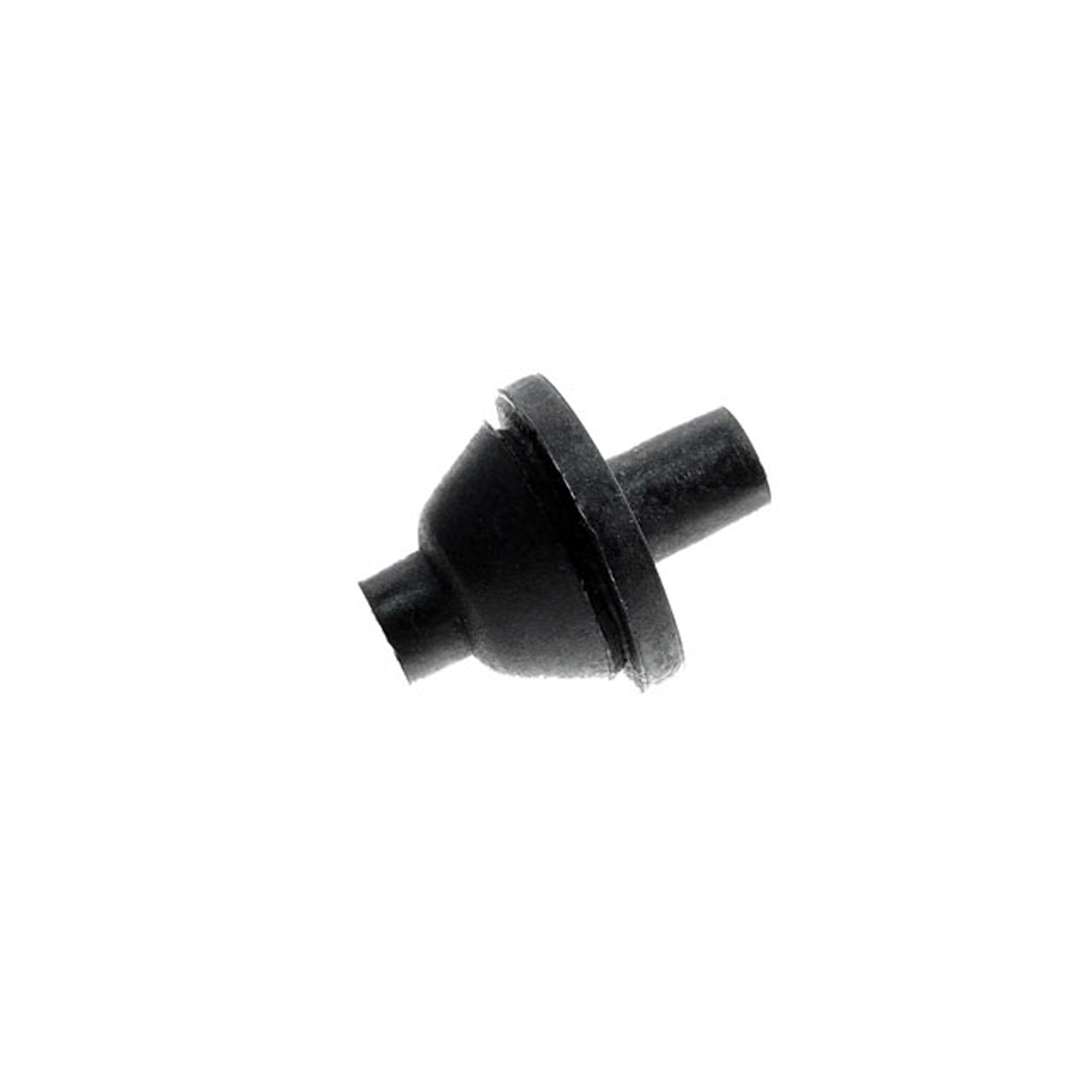 1967 Chevrolet Camaro Dash and Firewall Grommet. Single-hole type is for one wire-SM 101Dash and Firewall Grommet. Single-hole type is for one wire. Each
1967 Chevrolet Camaro Dash and Firewall Grommet. Single-hole type is for one wire-SM 101Dash and Firewall Grommet. Single-hole type is for one wire. Each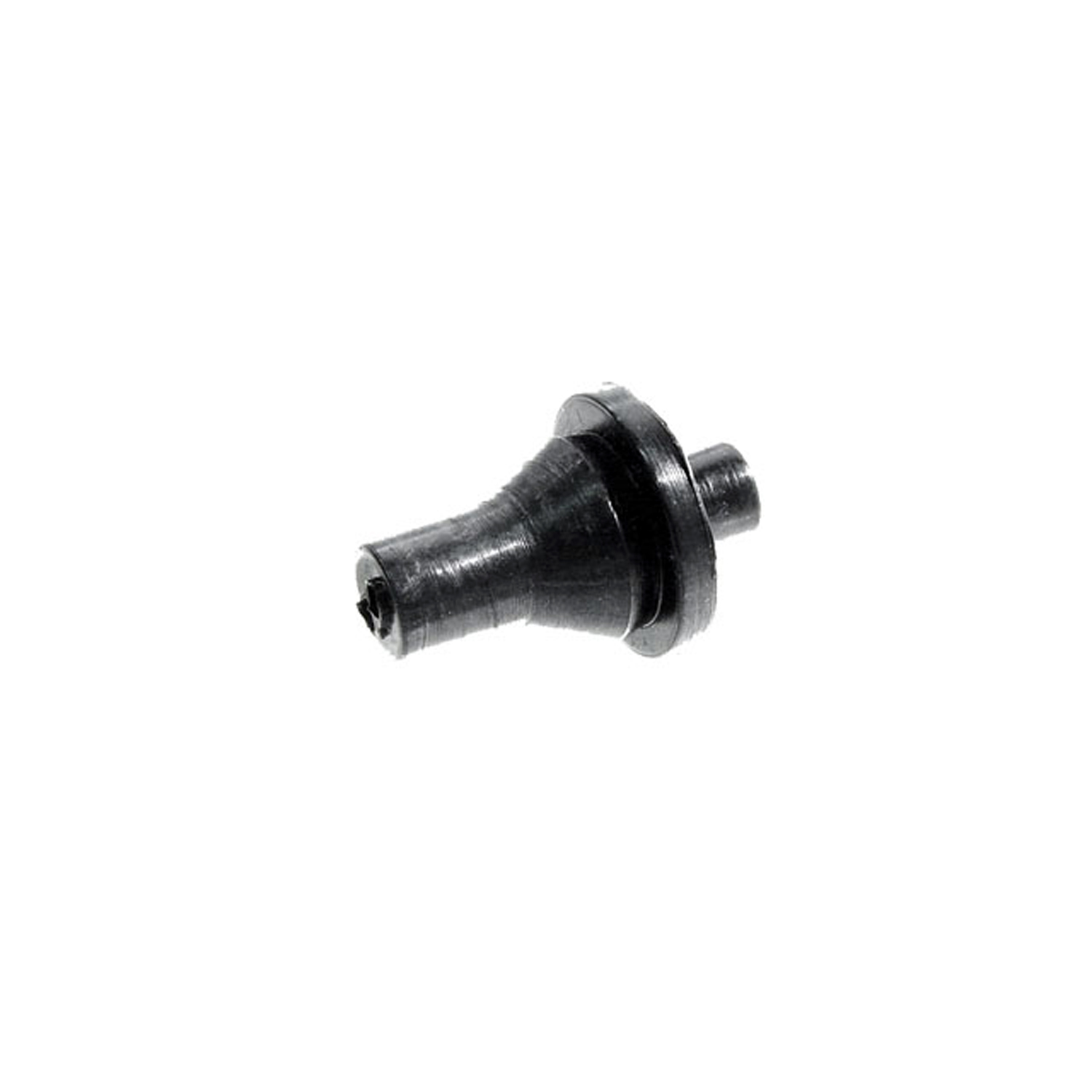 1967 Chevrolet Camaro Dash and Firewall Grommet. Two hole type. Each-SM 101-ADash and Firewall Grommet. Two hole type. Each
1967 Chevrolet Camaro Dash and Firewall Grommet. Two hole type. Each-SM 101-ADash and Firewall Grommet. Two hole type. Each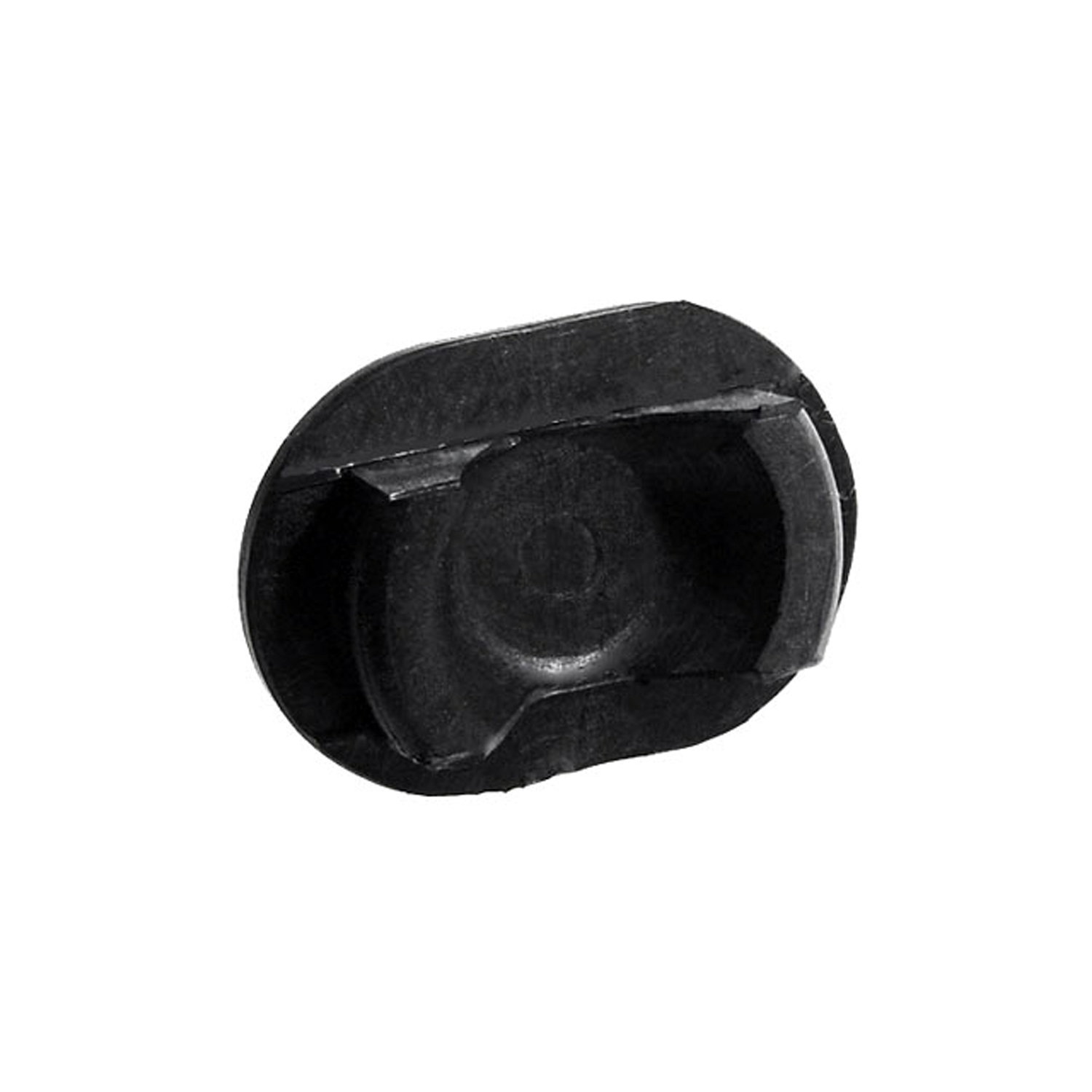 1967 Chevrolet Camaro Timing Hole Plug. For 6-cylinder engines. 1-3/4" X 1-1/4"-SM 59Timing Hole Plug. For 6-cylinder engines. 1-3/4" X 1-1/4". Each
1967 Chevrolet Camaro Timing Hole Plug. For 6-cylinder engines. 1-3/4" X 1-1/4"-SM 59Timing Hole Plug. For 6-cylinder engines. 1-3/4" X 1-1/4". Each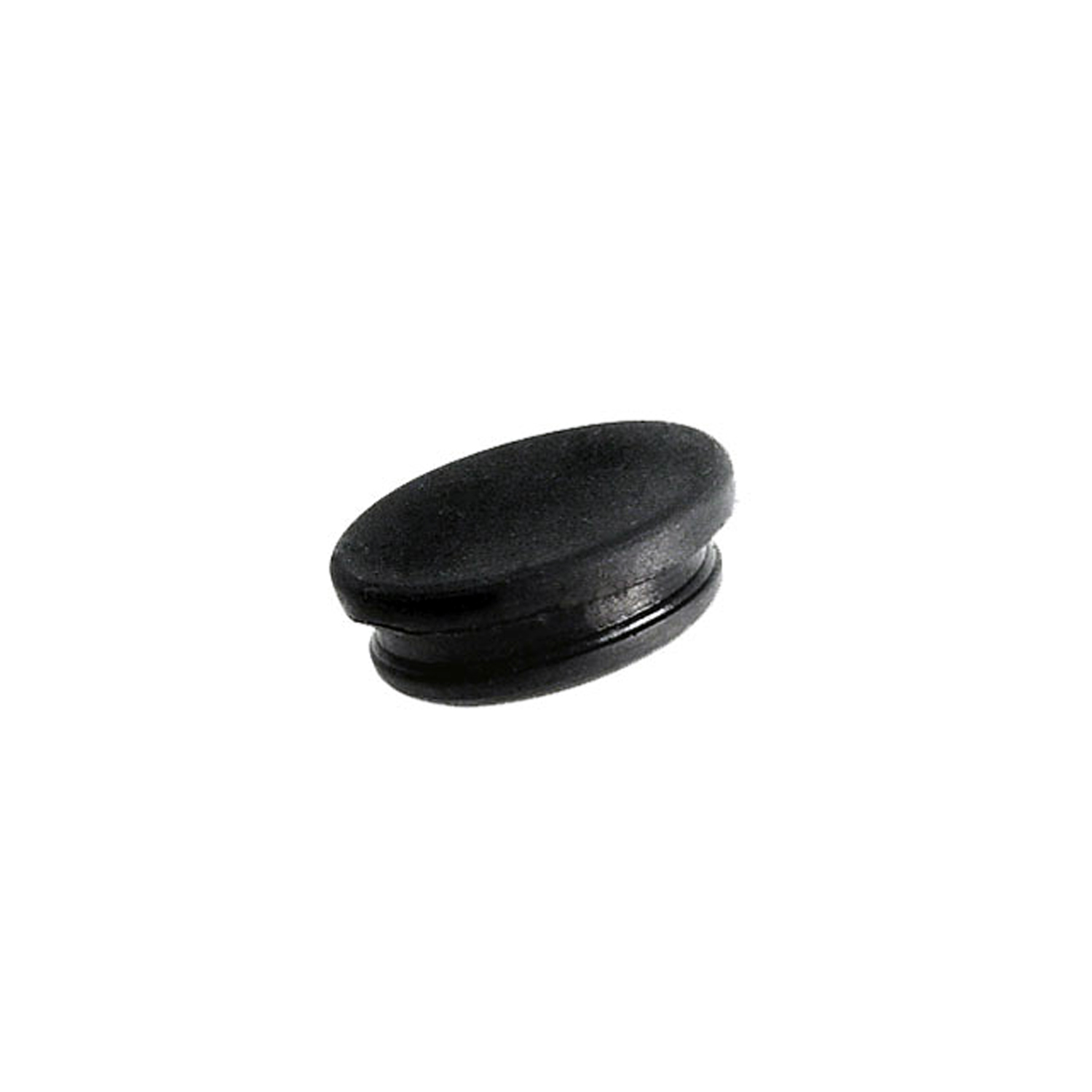 1967 Chevrolet Camaro Rocker Arm Cover. Neoprene plug. Fits 1" hole. Each-SM 66Rocker Arm Cover. Neoprene plug. Fits 1" hole. Each
1967 Chevrolet Camaro Rocker Arm Cover. Neoprene plug. Fits 1" hole. Each-SM 66Rocker Arm Cover. Neoprene plug. Fits 1" hole. Each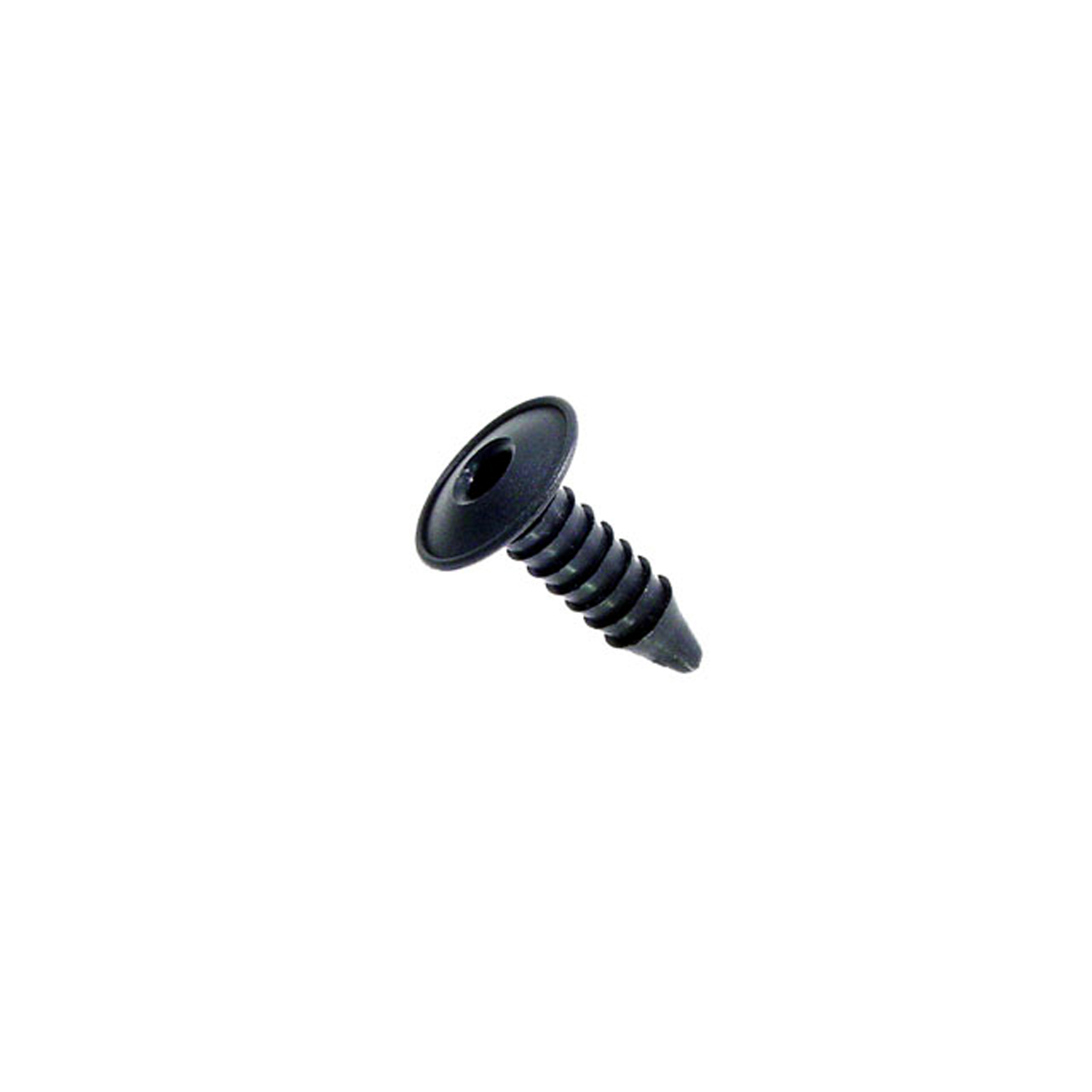 1967 Chevrolet Camaro Firewall insulation fastener. 1 in. dia. W head. 1-1/2 in. L-SM 80-AFirewall insulation fastener. 1 in. dia. W head. 1-1/2 in. L. Replaces OEM#'s (GM) 7642589 and (AMC) 4001934. Black. Each.
1967 Chevrolet Camaro Firewall insulation fastener. 1 in. dia. W head. 1-1/2 in. L-SM 80-AFirewall insulation fastener. 1 in. dia. W head. 1-1/2 in. L. Replaces OEM#'s (GM) 7642589 and (AMC) 4001934. Black. Each.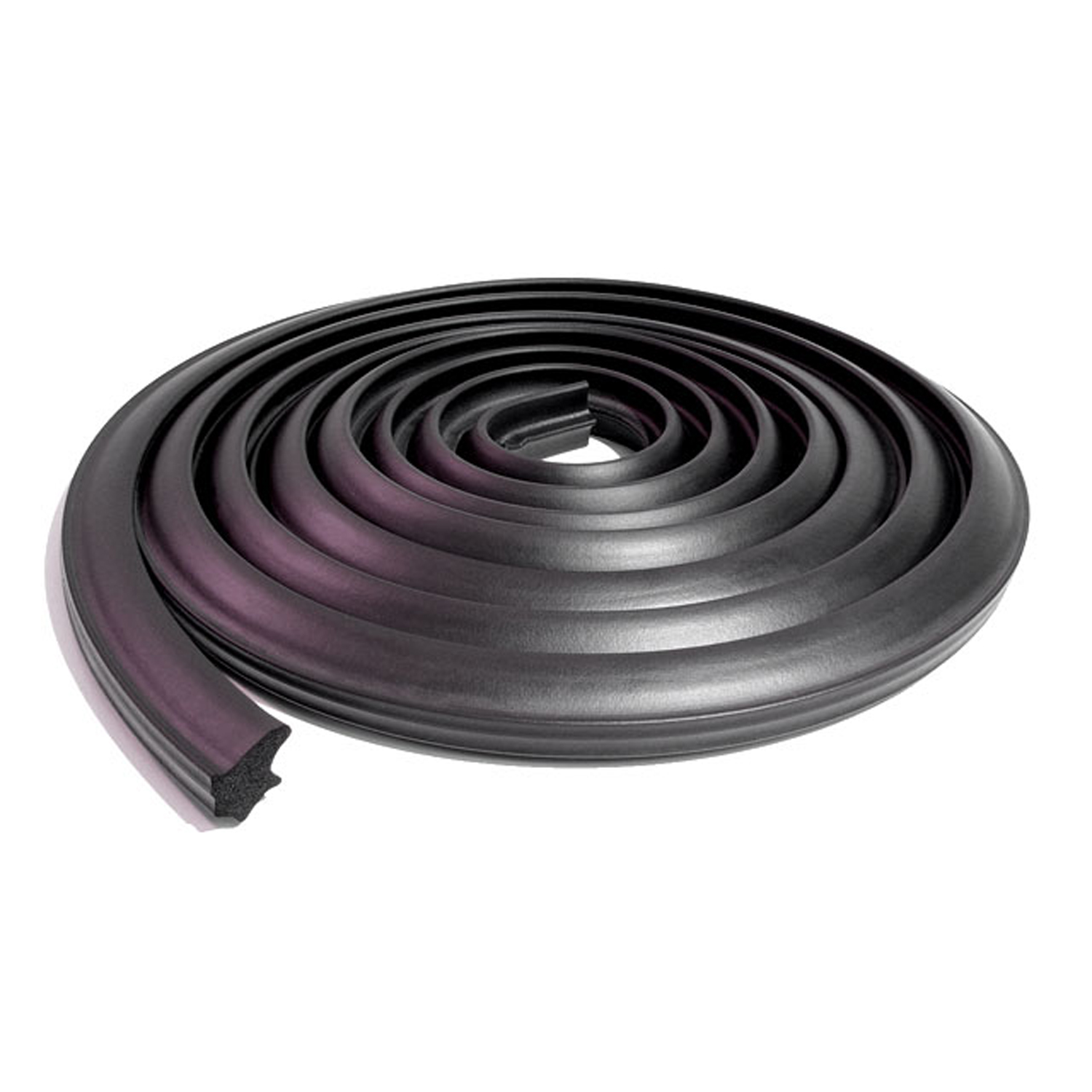 1967 Chevrolet Camaro Trunk Seal. 15 feet long. Each-TK 46-15Trunk Seal. 15 feet long. Each
1967 Chevrolet Camaro Trunk Seal. 15 feet long. Each-TK 46-15Trunk Seal. 15 feet long. Each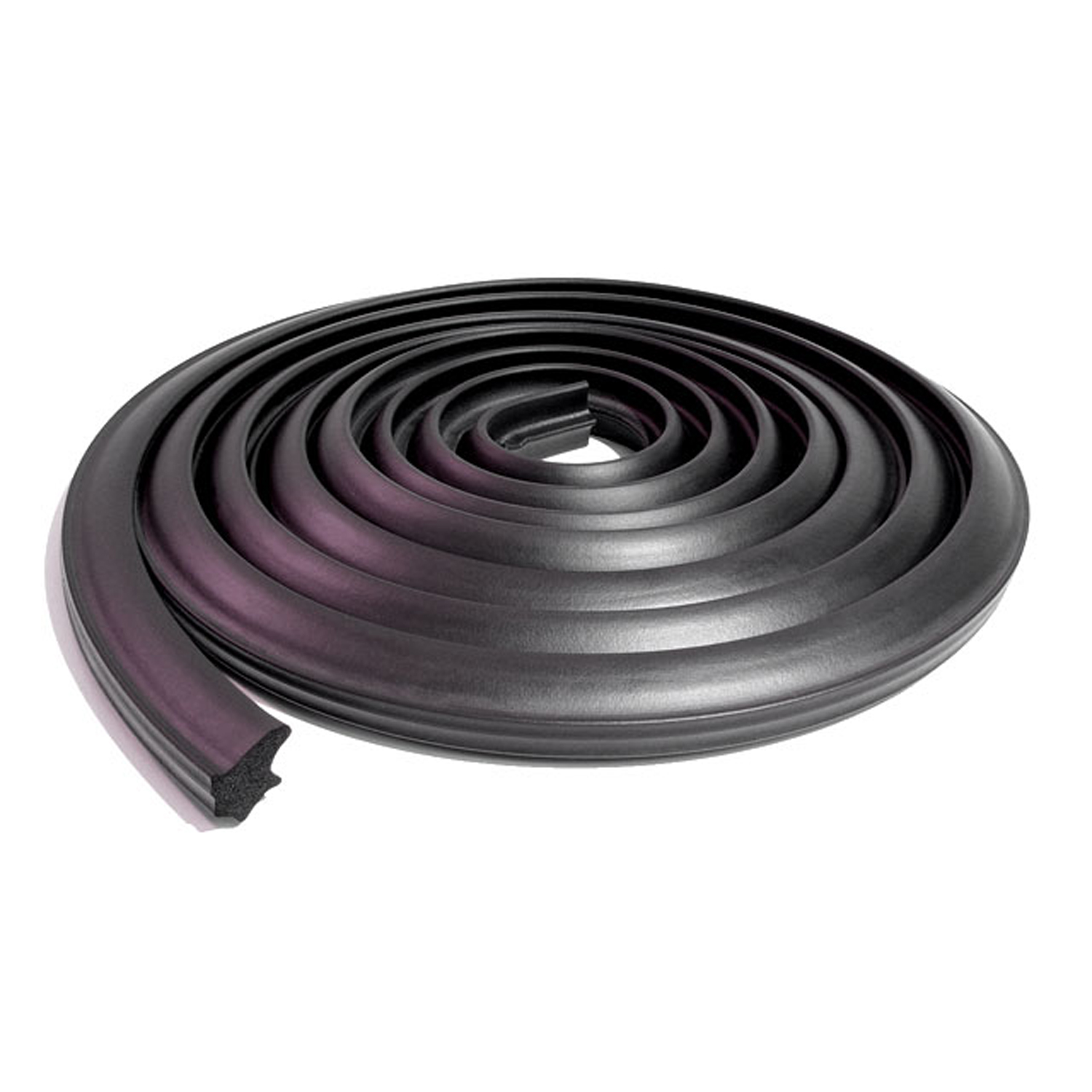 1967 Chevrolet Camaro Trunk Seal, Fits: '67-'81 GM F Body-TK 46-OThis is a trunk seal for 1967-1981 Chevrolet Camaro and Pontiac Firebird vehicles. Our product is made with high quality ozone resistant EPDM rubber for a great fit and long life.
1967 Chevrolet Camaro Trunk Seal, Fits: '67-'81 GM F Body-TK 46-OThis is a trunk seal for 1967-1981 Chevrolet Camaro and Pontiac Firebird vehicles. Our product is made with high quality ozone resistant EPDM rubber for a great fit and long life.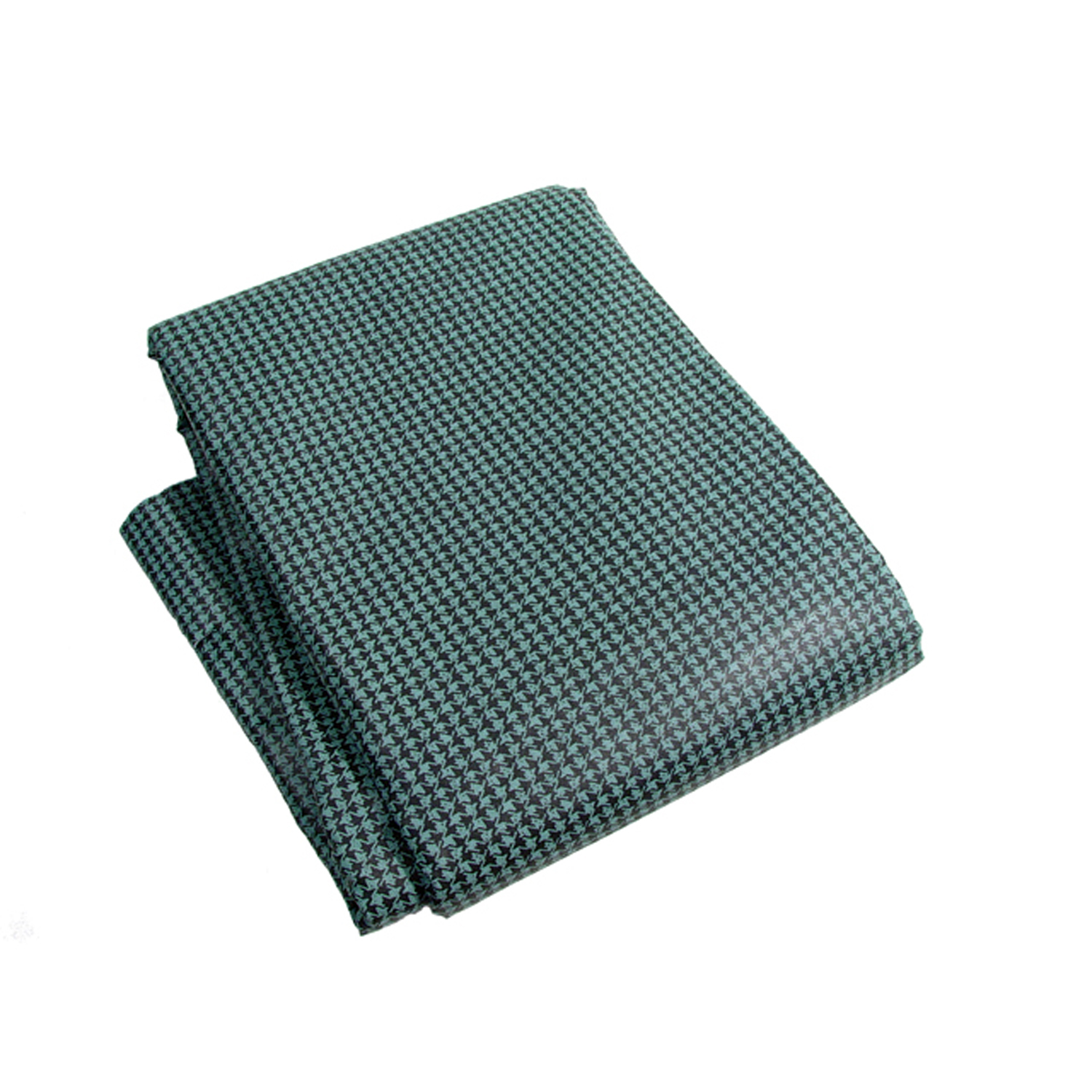 1967 Chevrolet Camaro Trunk Mat-TM 2009Trunk Mat. High quality reproduction, made specific for vehicle. Green houndstooth print on rubber. Each
1967 Chevrolet Camaro Trunk Mat-TM 2009Trunk Mat. High quality reproduction, made specific for vehicle. Green houndstooth print on rubber. Each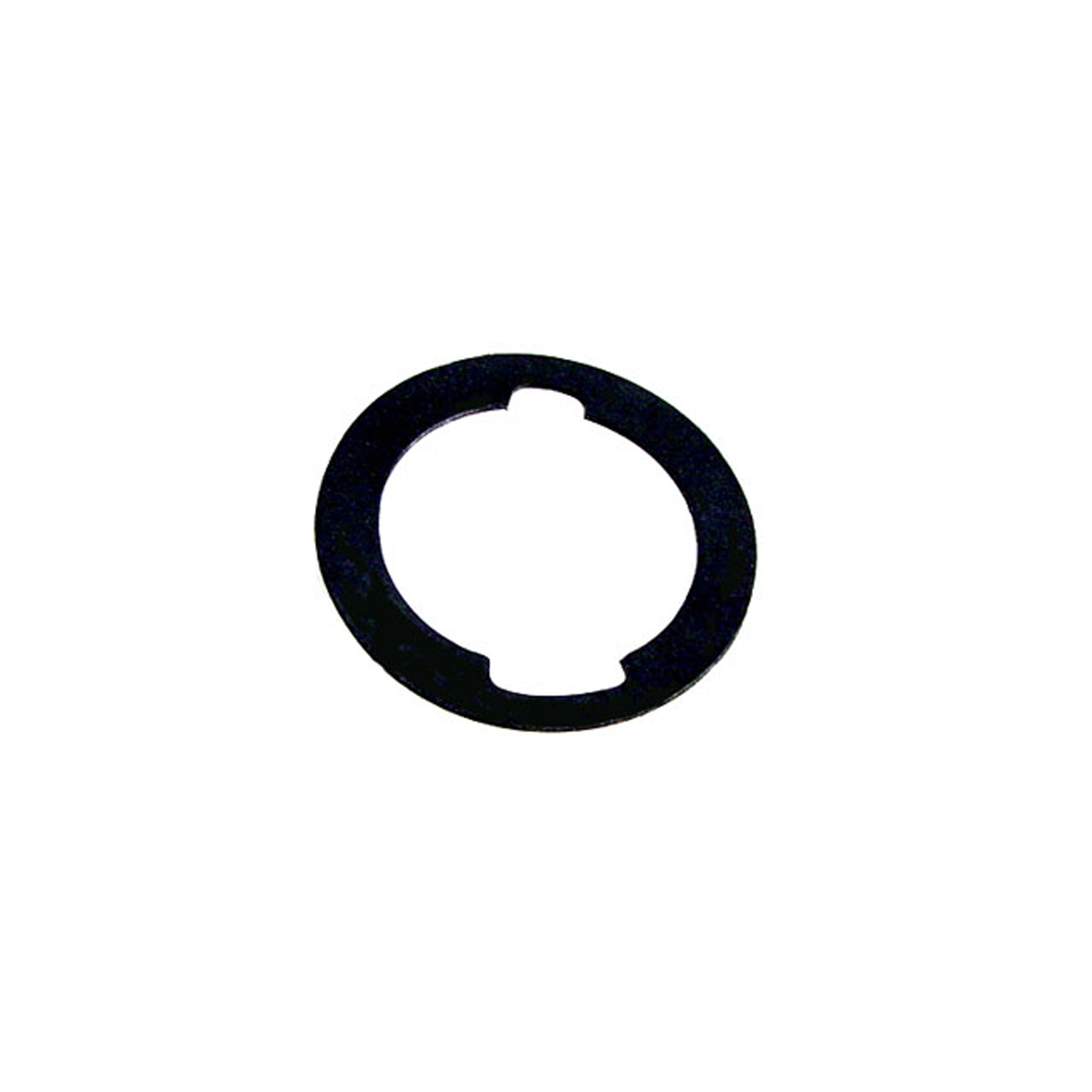 1967 Chevrolet Camaro Unbeaded Door and Trunk Lock Gasket. 1-3/16" O.D., 7/8" I.D-UM 1600-100Unbeaded Door and Trunk Lock Gasket. 1-3/16" O.D., 7/8" I.D. Each
1967 Chevrolet Camaro Unbeaded Door and Trunk Lock Gasket. 1-3/16" O.D., 7/8" I.D-UM 1600-100Unbeaded Door and Trunk Lock Gasket. 1-3/16" O.D., 7/8" I.D. Each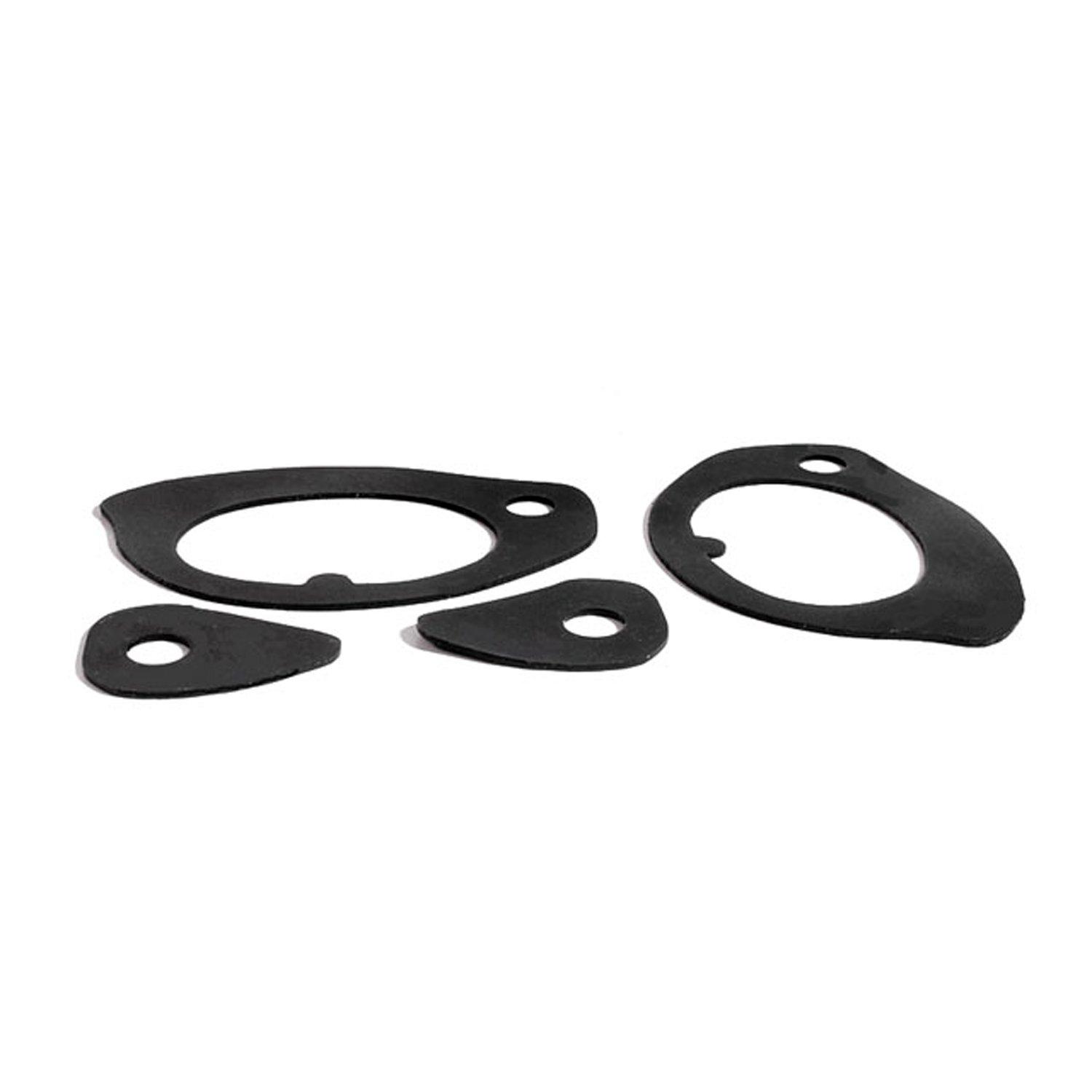 1967 Chevrolet Camaro Unbeaded Door Handle Mounting Pads. 4-Piece Set-UM 2005-100Unbeaded Door Handle Mounting Pads. 4-Piece Set
1967 Chevrolet Camaro Unbeaded Door Handle Mounting Pads. 4-Piece Set-UM 2005-100Unbeaded Door Handle Mounting Pads. 4-Piece Set 1967 Chevrolet Camaro Vertical glass run channel-VR 2011Vertical glass run channel. Fits in division bar channel between front vent window and leading edge of window glass in door. 37-1/2 in. long. Pair.
1967 Chevrolet Camaro Vertical glass run channel-VR 2011Vertical glass run channel. Fits in division bar channel between front vent window and leading edge of window glass in door. 37-1/2 in. long. Pair.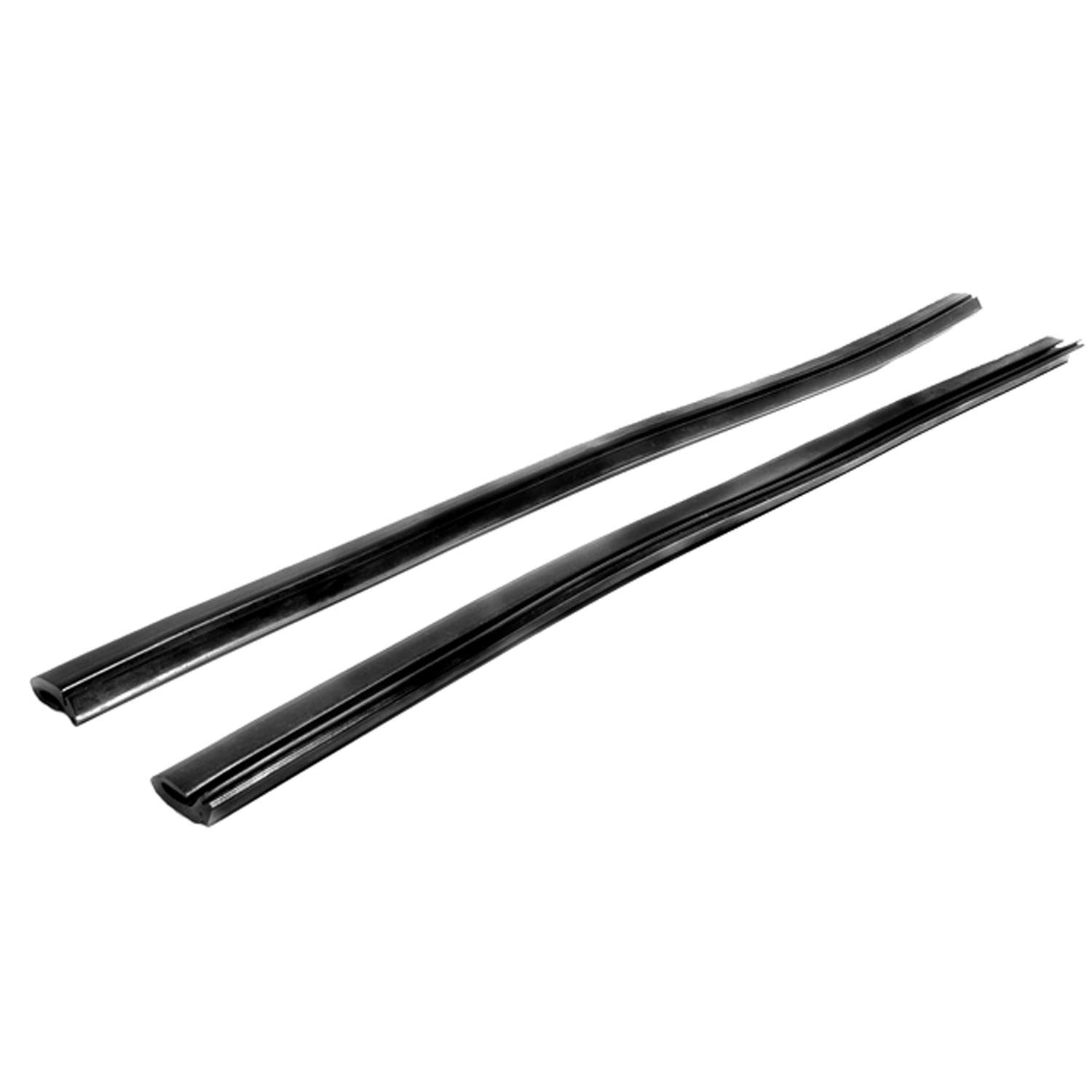 1967 Chevrolet Camaro Rear Side Roll-Up Window Seal, for Hardtops and Convertibles-VS 3Rear Side Roll-Up Window Seal, for Hardtops and Convertibles. Two 20" sections slide into metal track. No steel insert. Pair
1967 Chevrolet Camaro Rear Side Roll-Up Window Seal, for Hardtops and Convertibles-VS 3Rear Side Roll-Up Window Seal, for Hardtops and Convertibles. Two 20" sections slide into metal track. No steel insert. Pair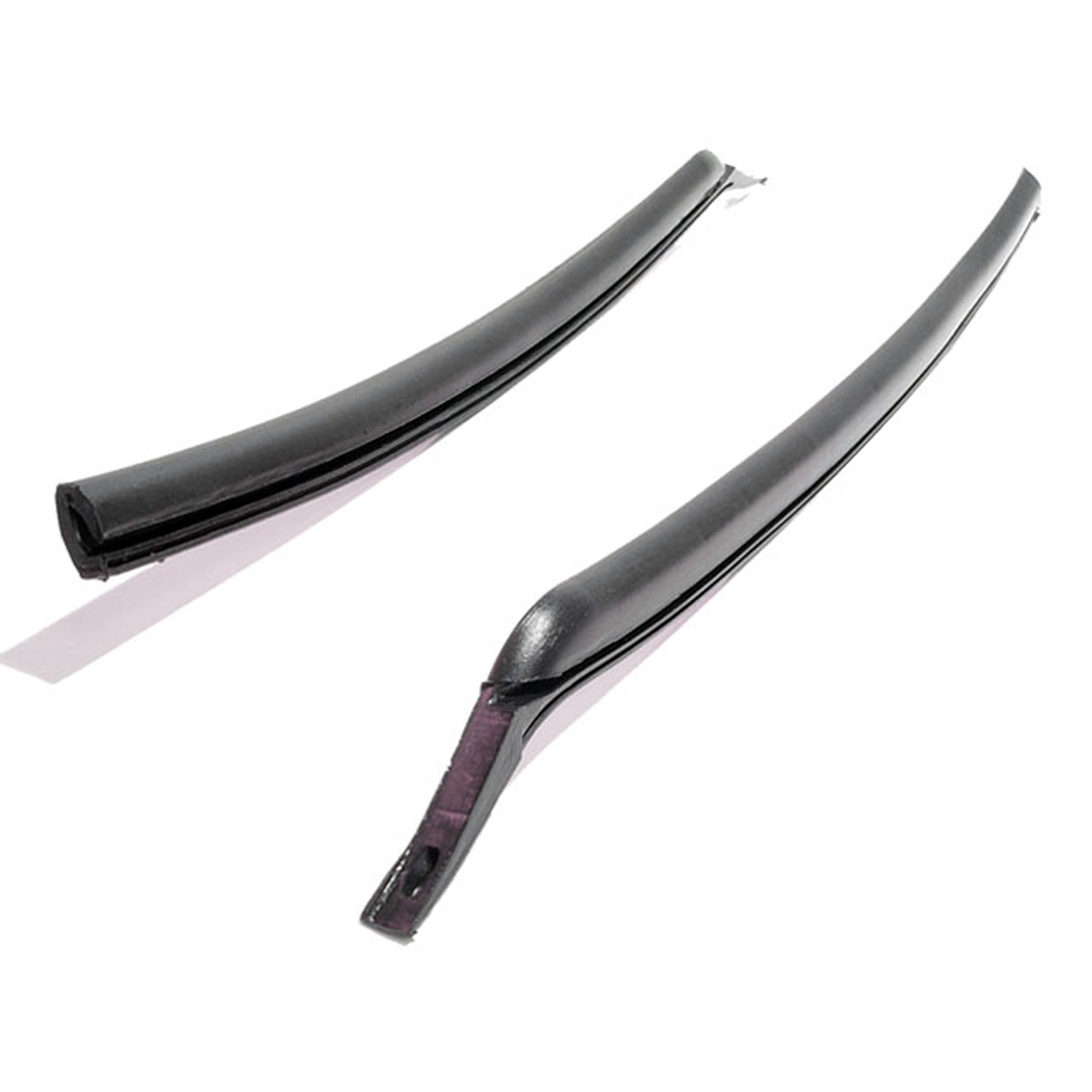 1967 Chevrolet Camaro Molded Rear Roll-Up Window Seals-VS 3-QMolded Rear Roll-Up Window Seals, for 2-Door Hardtops and Convertibles. Made in one piece with molded steel core. 16-3/4" long. Pair
1967 Chevrolet Camaro Molded Rear Roll-Up Window Seals-VS 3-QMolded Rear Roll-Up Window Seals, for 2-Door Hardtops and Convertibles. Made in one piece with molded steel core. 16-3/4" long. Pair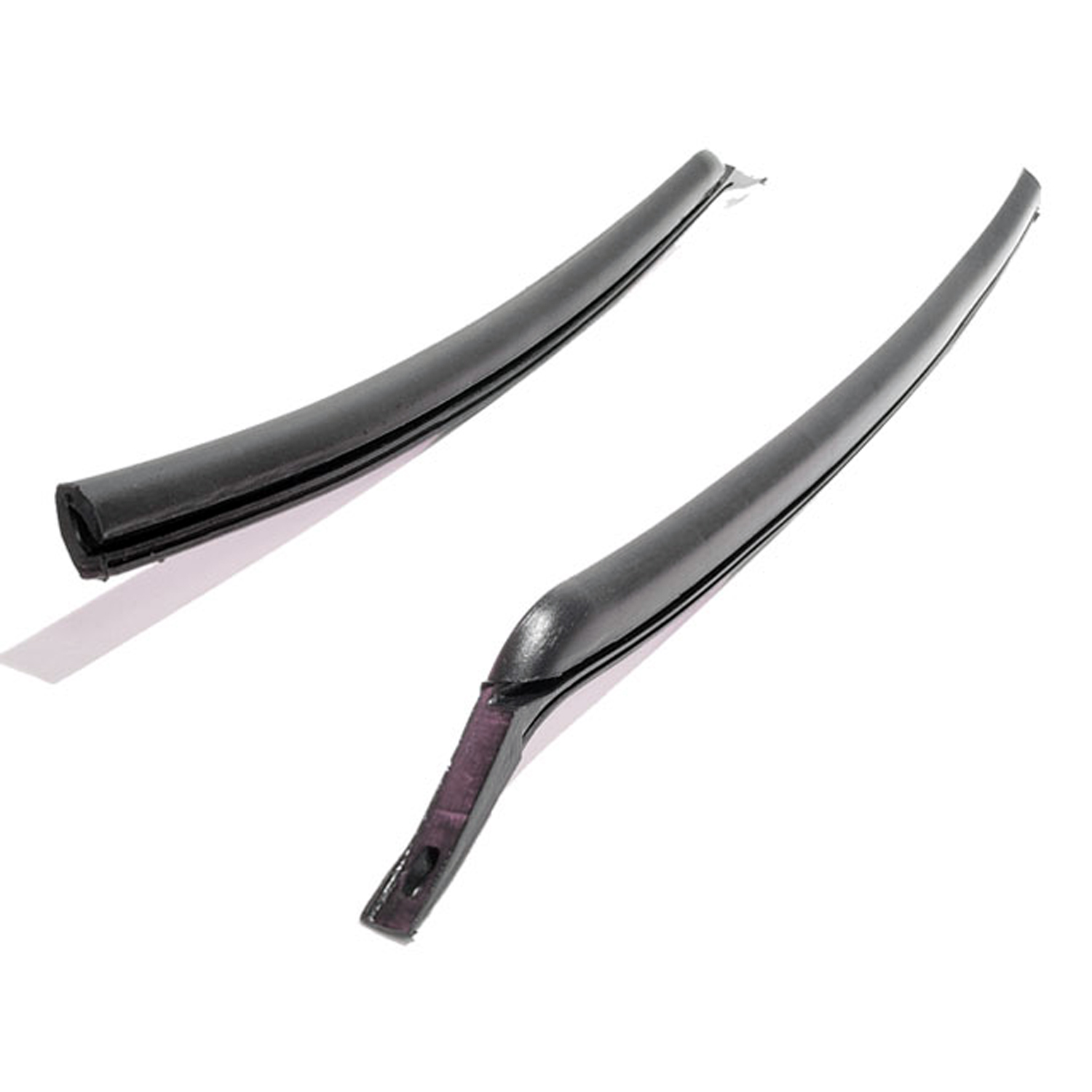 1967 Chevrolet Camaro Molded Rear Roll-Up Window Seals-VS 3-QXMolded Rear Roll-Up Window Seals, for 2-Door Hardtops and Convertibles. Made without steel core. 16-3/4" long. Pair
1967 Chevrolet Camaro Molded Rear Roll-Up Window Seals-VS 3-QXMolded Rear Roll-Up Window Seals, for 2-Door Hardtops and Convertibles. Made without steel core. 16-3/4" long. Pair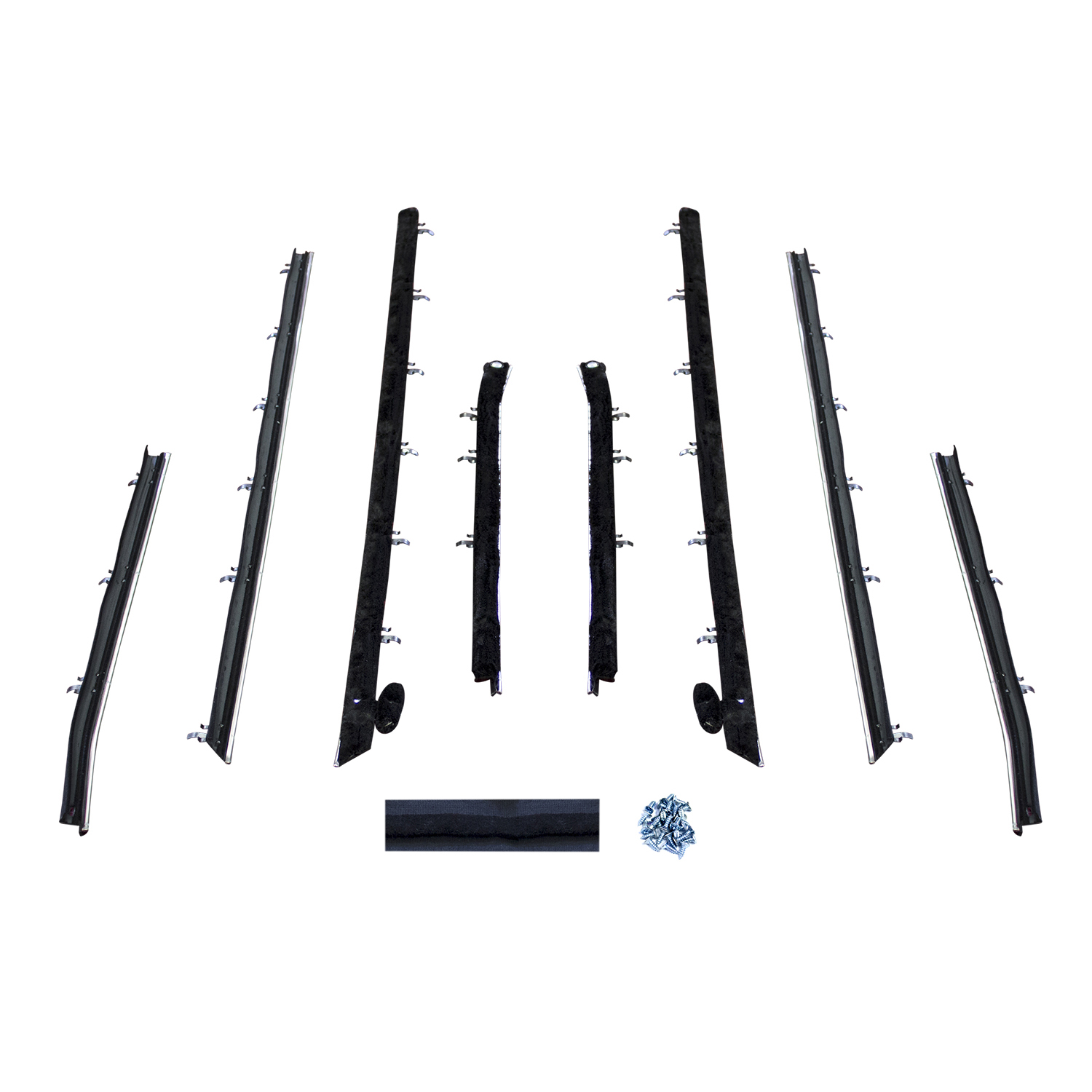 1967 Chevrolet Camaro Window Sweeper Kit, for 2-Door Coupe. 8-Piece Kit-WC 2008-10Window Sweeper Kit, for 2-Door Coupe. 8-Piece Kit
1967 Chevrolet Camaro Window Sweeper Kit, for 2-Door Coupe. 8-Piece Kit-WC 2008-10Window Sweeper Kit, for 2-Door Coupe. 8-Piece Kit 1967 Chevrolet Camaro Window Sweeper Kit, for 2-Door Convertible. 8-Piece Kit-WC 2008-11Window Sweeper Kit, for 2-Door Convertible. 8-Piece Kit
1967 Chevrolet Camaro Window Sweeper Kit, for 2-Door Convertible. 8-Piece Kit-WC 2008-11Window Sweeper Kit, for 2-Door Convertible. 8-Piece Kit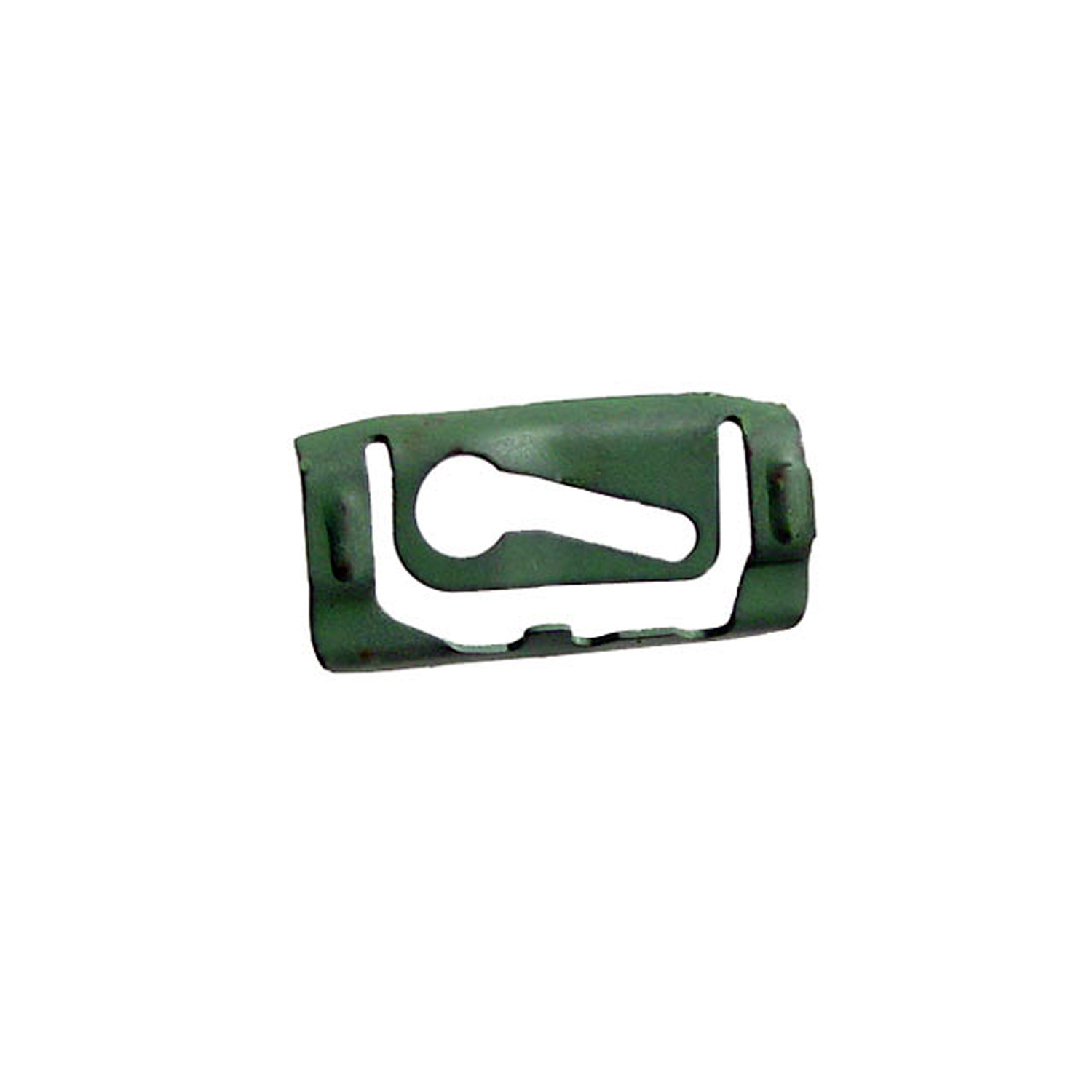 1967 Chevrolet Camaro Quarter Window Reveal Molding Clip. Made of Steel-WF 205Quarter Window Reveal Molding Clip. Made of Steel. 1-3/8" X 11/16". Each
1967 Chevrolet Camaro Quarter Window Reveal Molding Clip. Made of Steel-WF 205Quarter Window Reveal Molding Clip. Made of Steel. 1-3/8" X 11/16". Each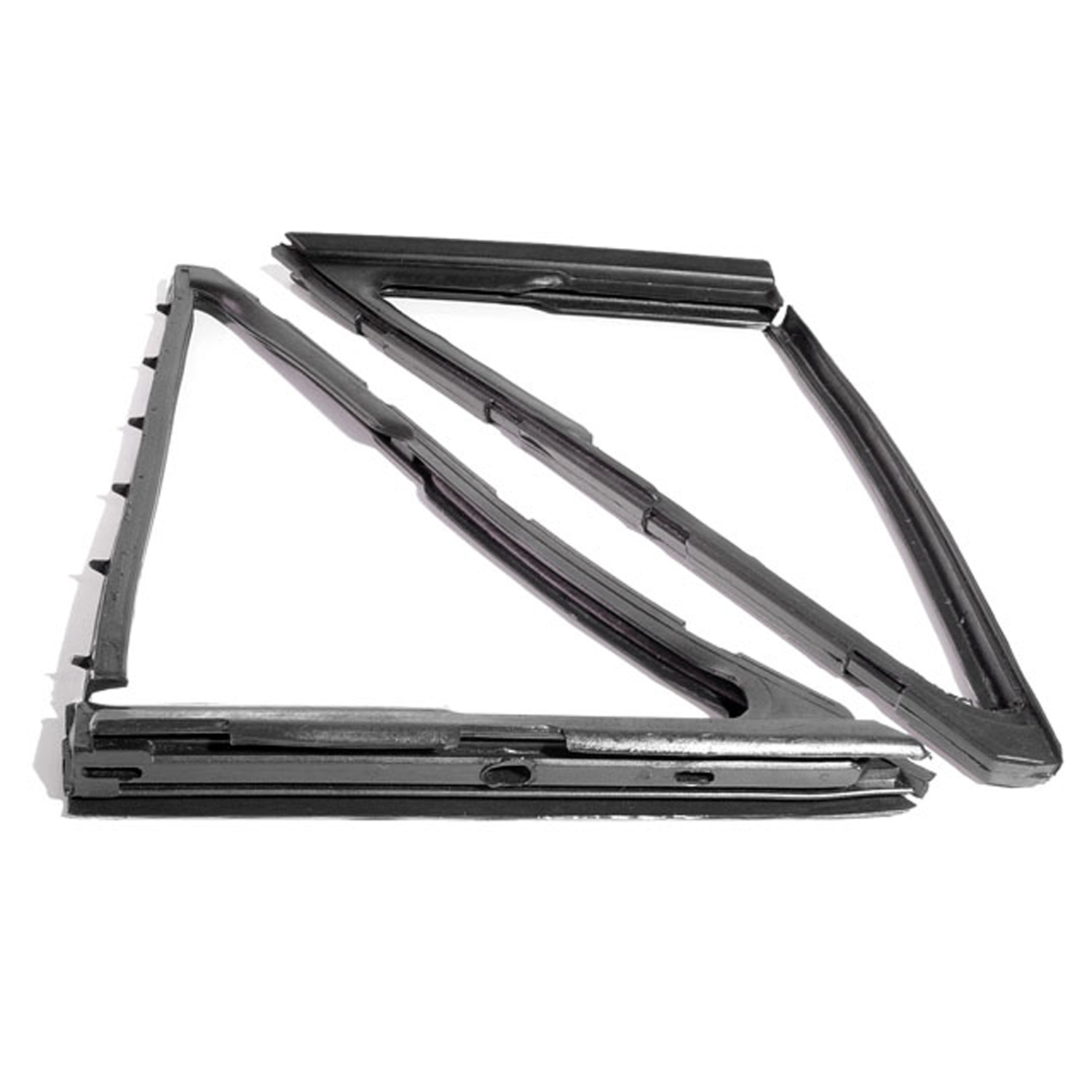 1967 Chevrolet Camaro Front Vent Window Seals. For Convertibles and Hardtops-WR 2008Front Vent Window Seals. For Convertibles and Hardtops. 13-5/8", 18-5/8", 10-3/4". Pair R&L
1967 Chevrolet Camaro Front Vent Window Seals. For Convertibles and Hardtops-WR 2008Front Vent Window Seals. For Convertibles and Hardtops. 13-5/8", 18-5/8", 10-3/4". Pair R&L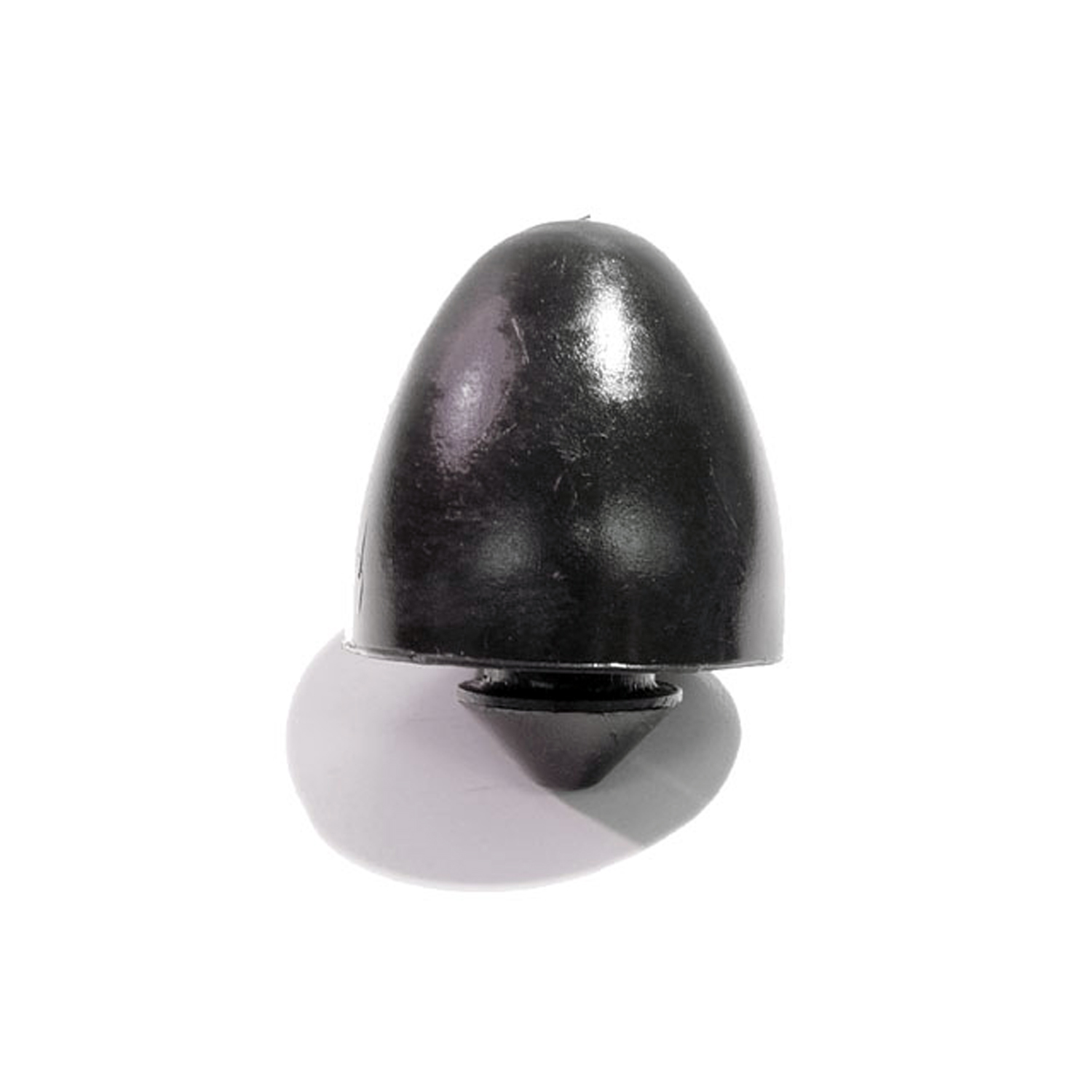 1967 Chevrolet Camaro Front Suspension Bumper. For steering knuckle support-XB 20Front Suspension Bumper. For steering knuckle support. 1-3/8" high. Each
1967 Chevrolet Camaro Front Suspension Bumper. For steering knuckle support-XB 20Front Suspension Bumper. For steering knuckle support. 1-3/8" high. EachWhy Choose Metro?
For over 100 years, Metro Moulded Parts has been the pinnacle of quality in classic car restoration parts. Our commitment to precision and authenticity in every component ensures a perfect fit and an OEM-level appearance.
- Expert Craftsmanship & Quality: Each part is a testament to our dedication to reliability and perfection, crafted from original designs and thoroughly tested.
- Advanced Technology: We use cutting-edge techniques to create flawless, long-lasting parts that surpass others in performance.
- SuperSoft Sponge – The Ultimate Door Seal: Not only are our door seals 30% softer than competitors', but they're also guaranteed to never leak. They effectively reduce wind and road noise, enhancing your classic car's comfort and driving experience.
- Proudly American: Our parts are a product of American craftsmanship, made in the USA with a spirit of excellence and heritage.
- Unrivaled Warranty: We back our products with a 30-year industry-leading warranty, a testament to our confidence in their quality.
Join us in preserving the legacy of classic cars with parts that are crafted for perfection, not just made.

